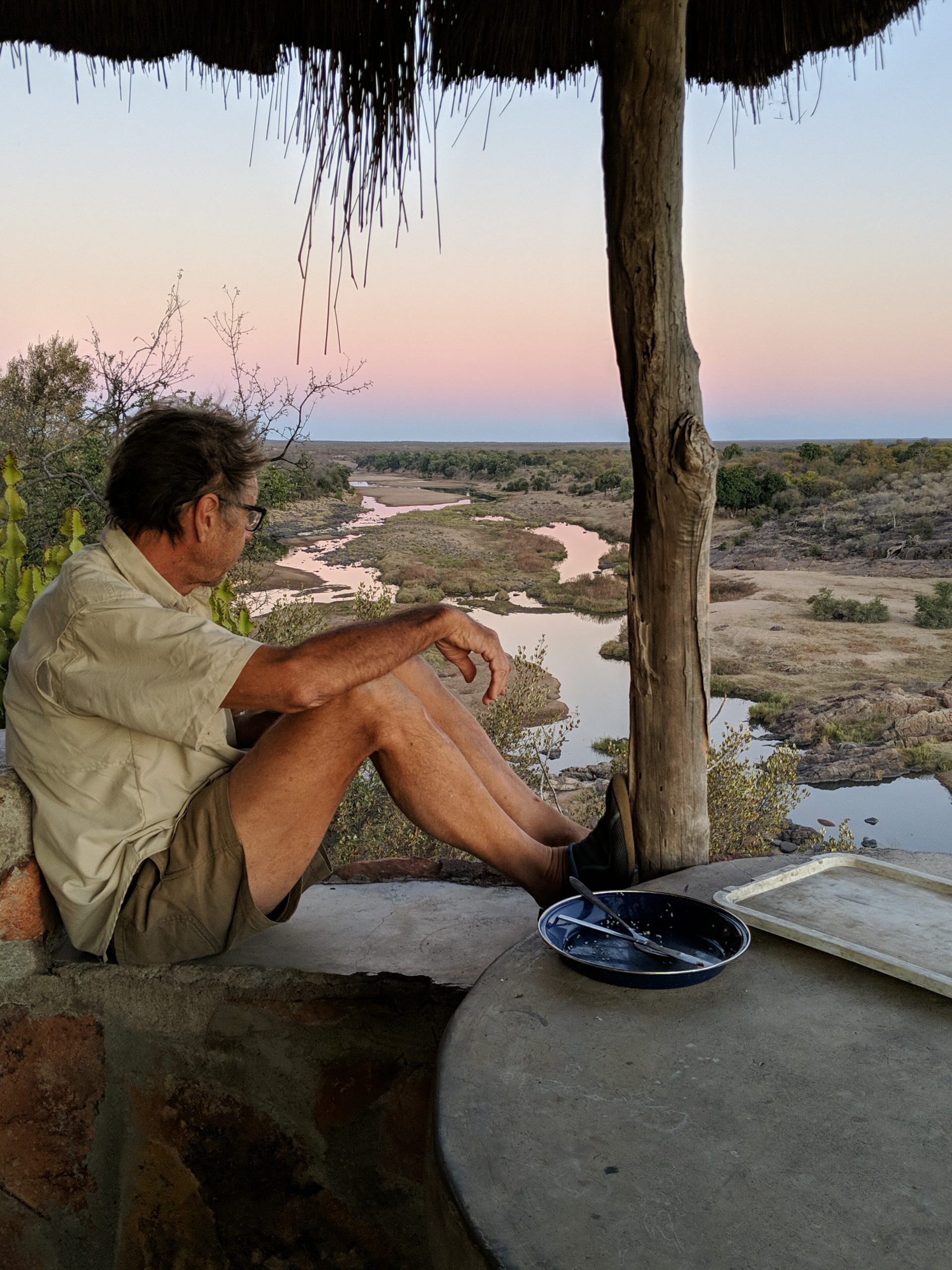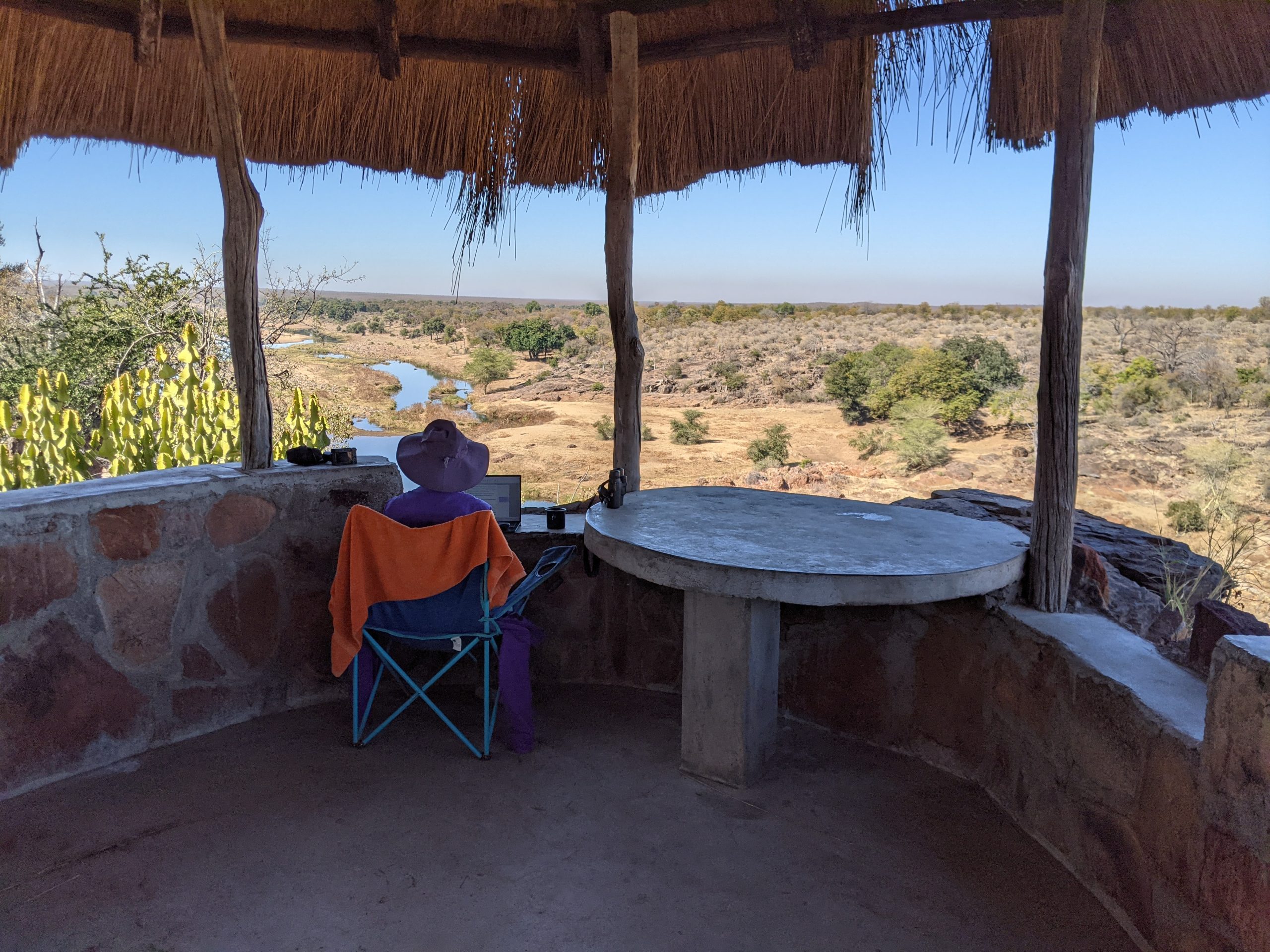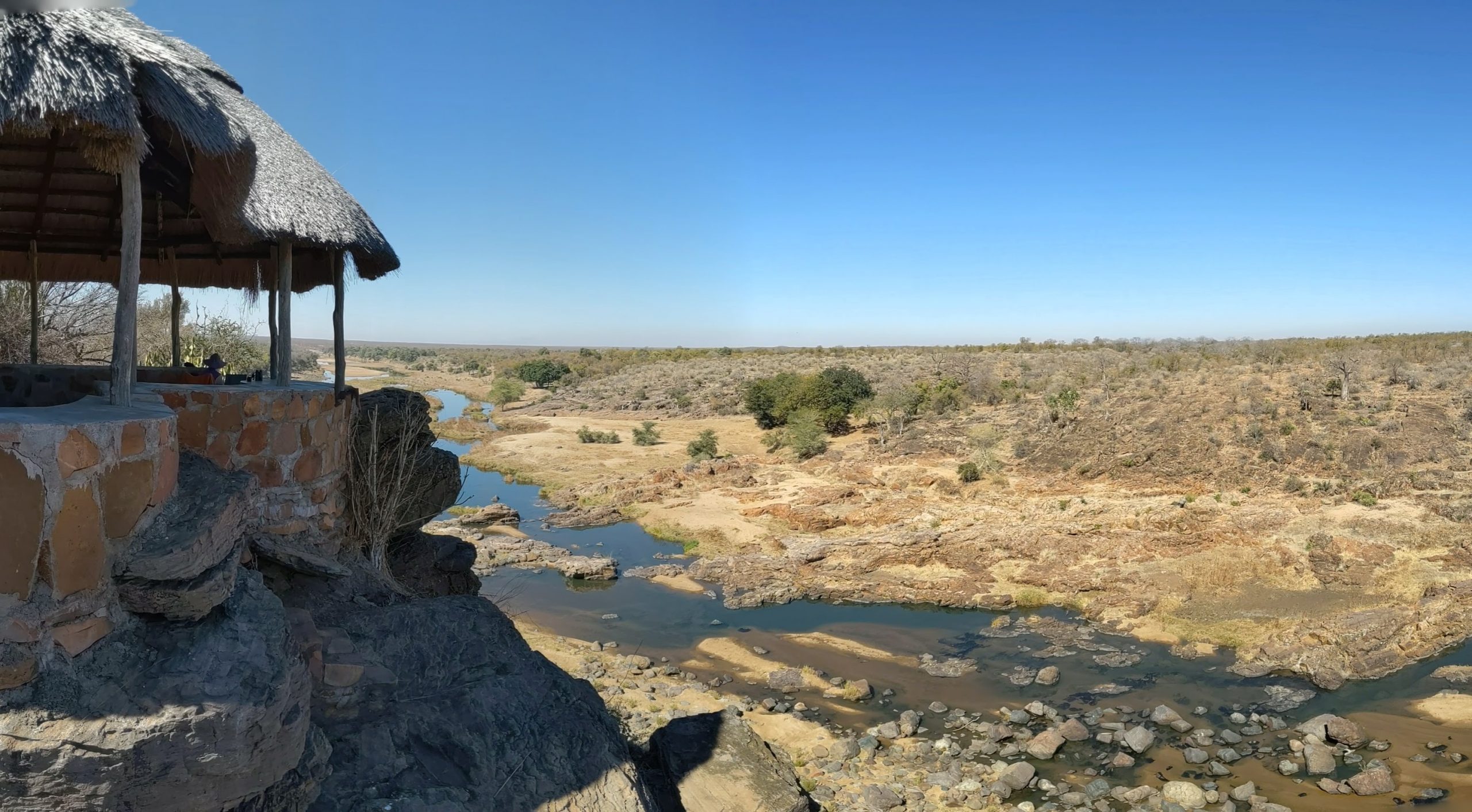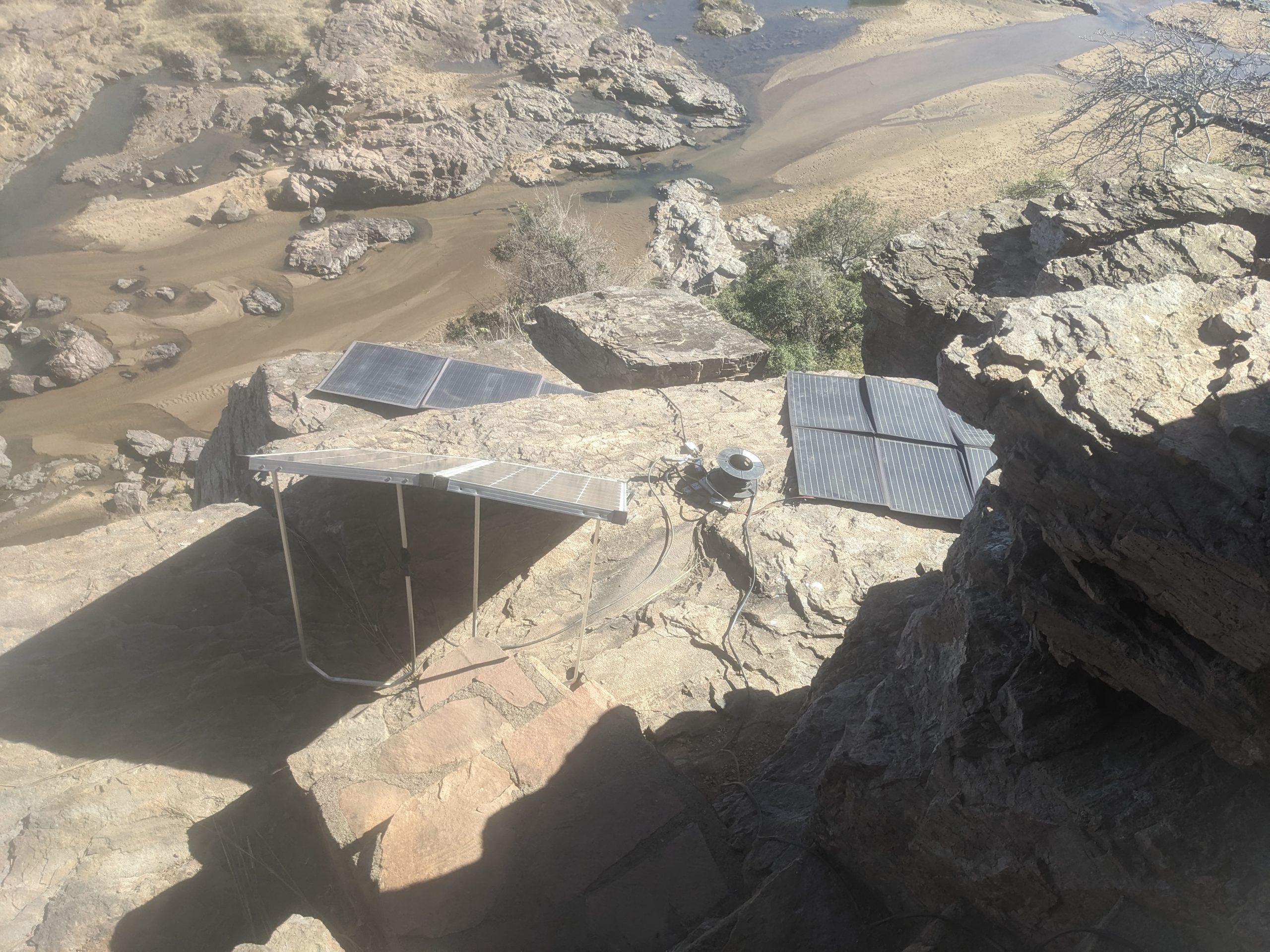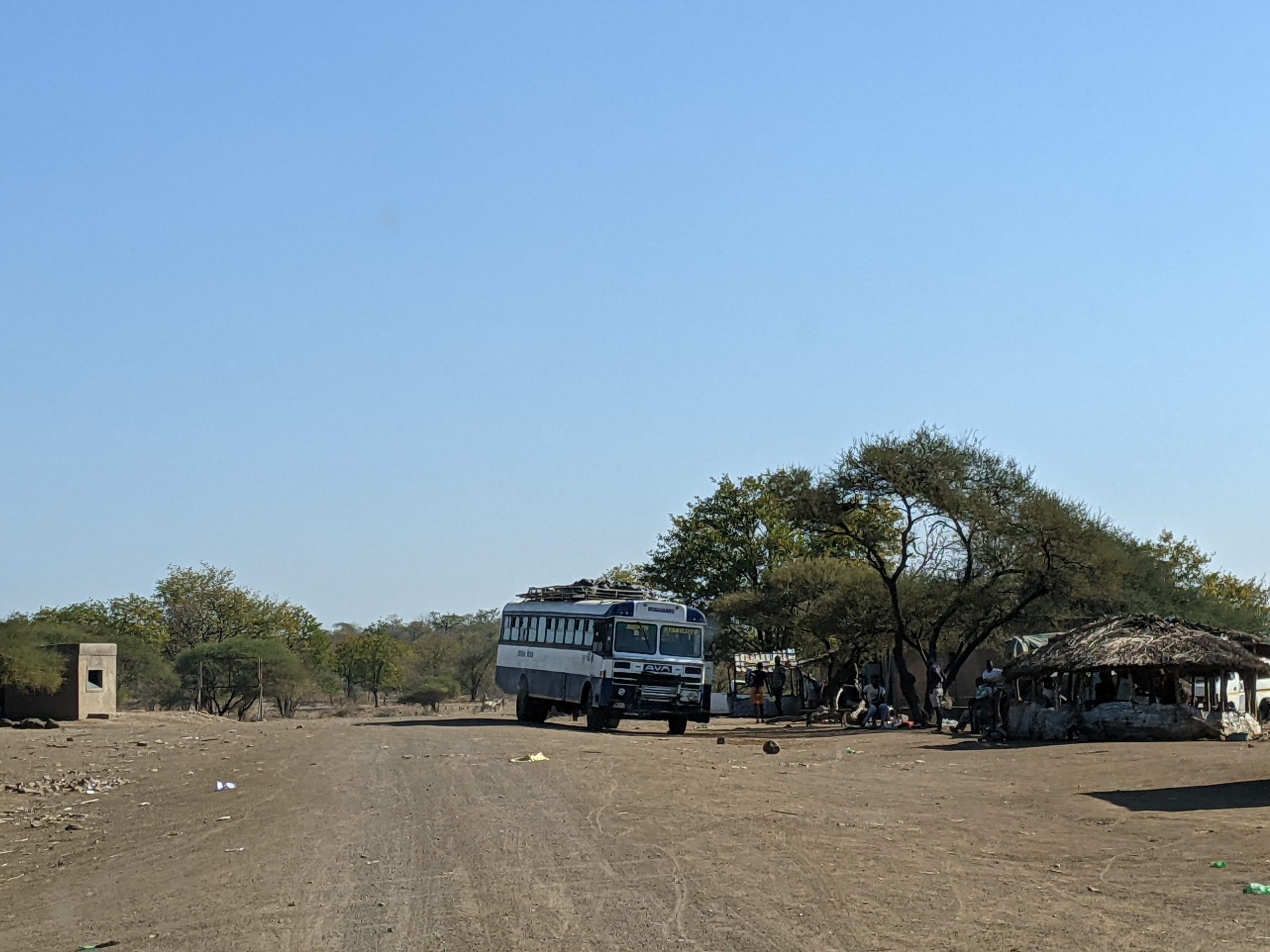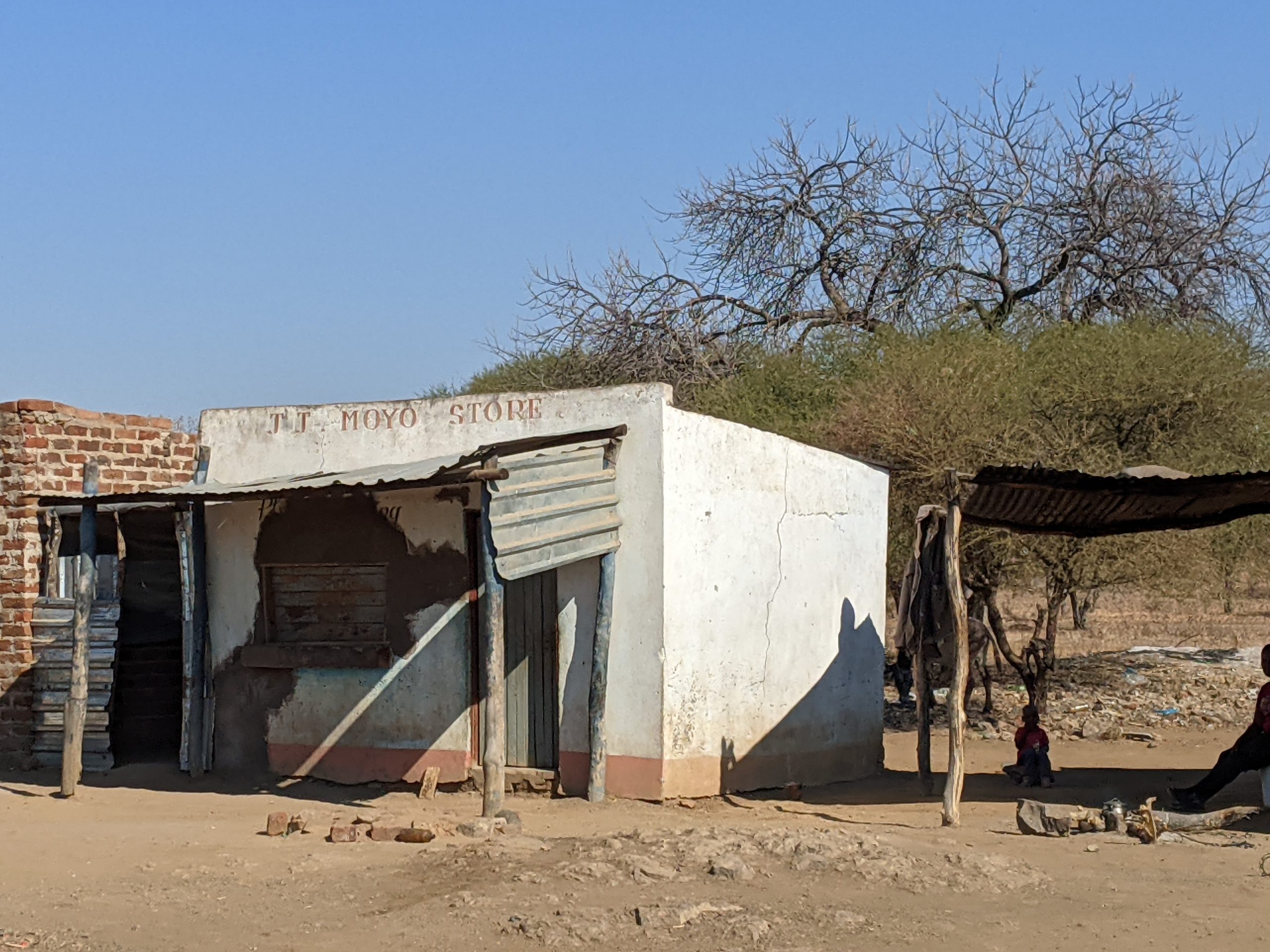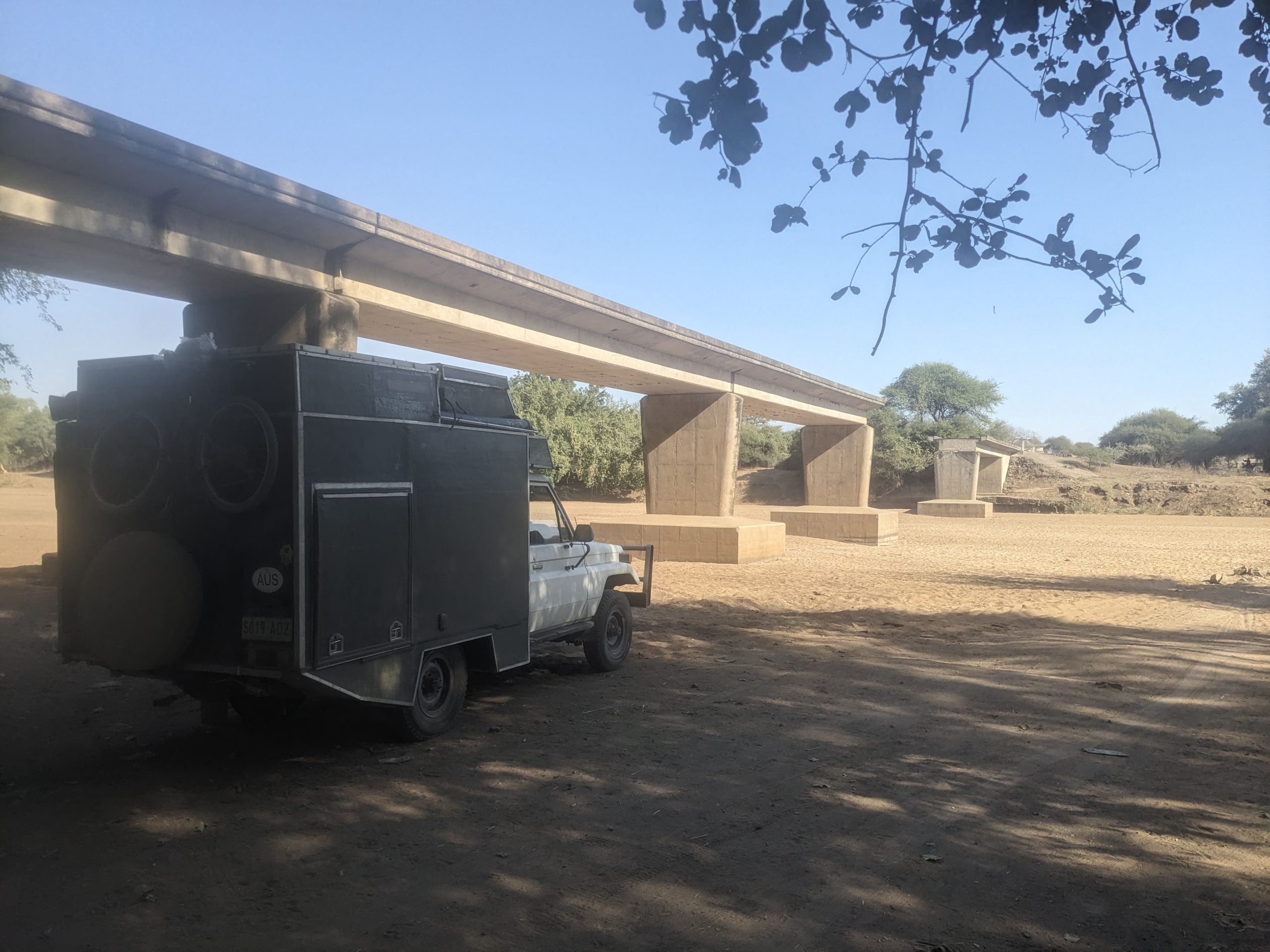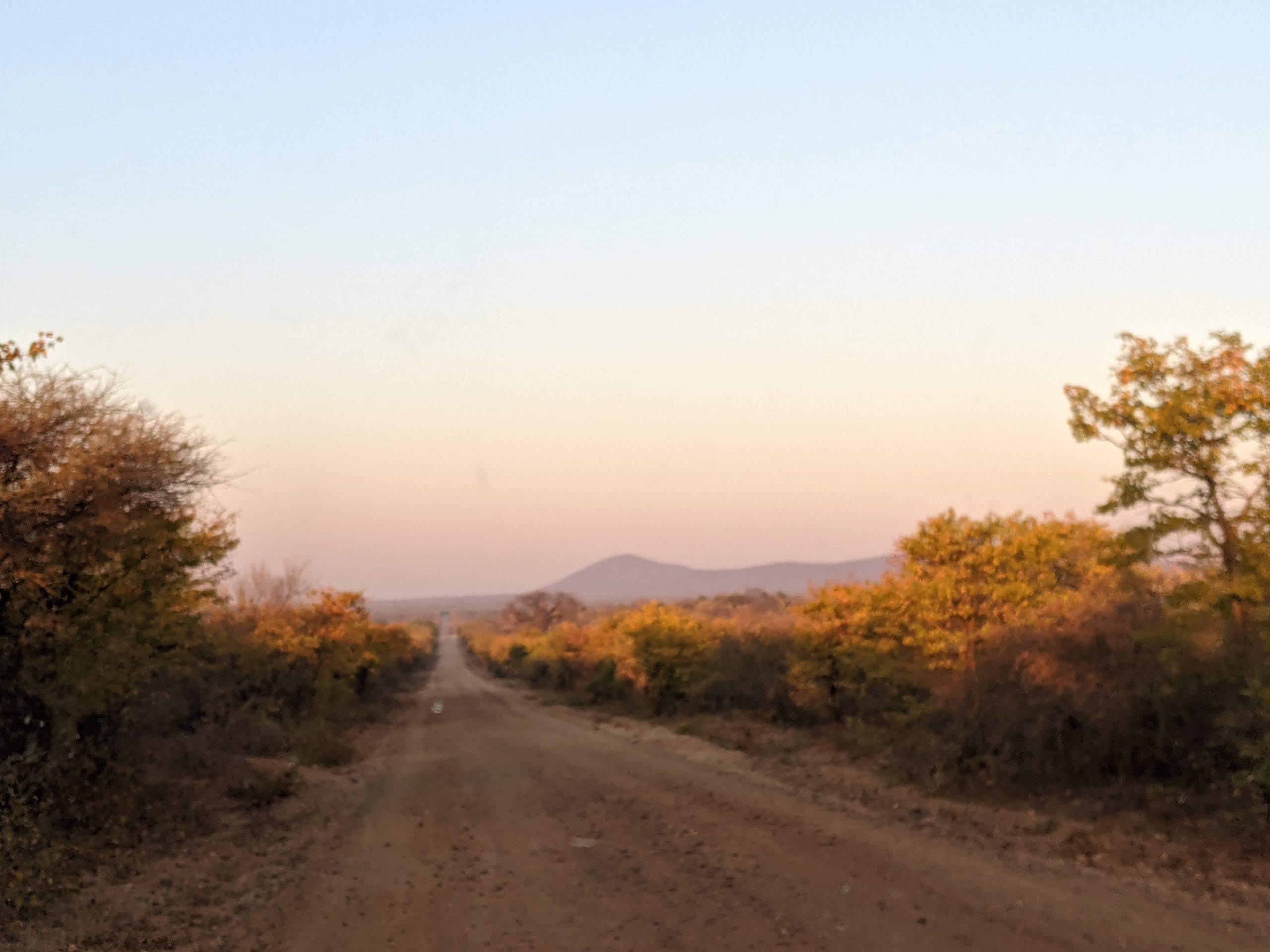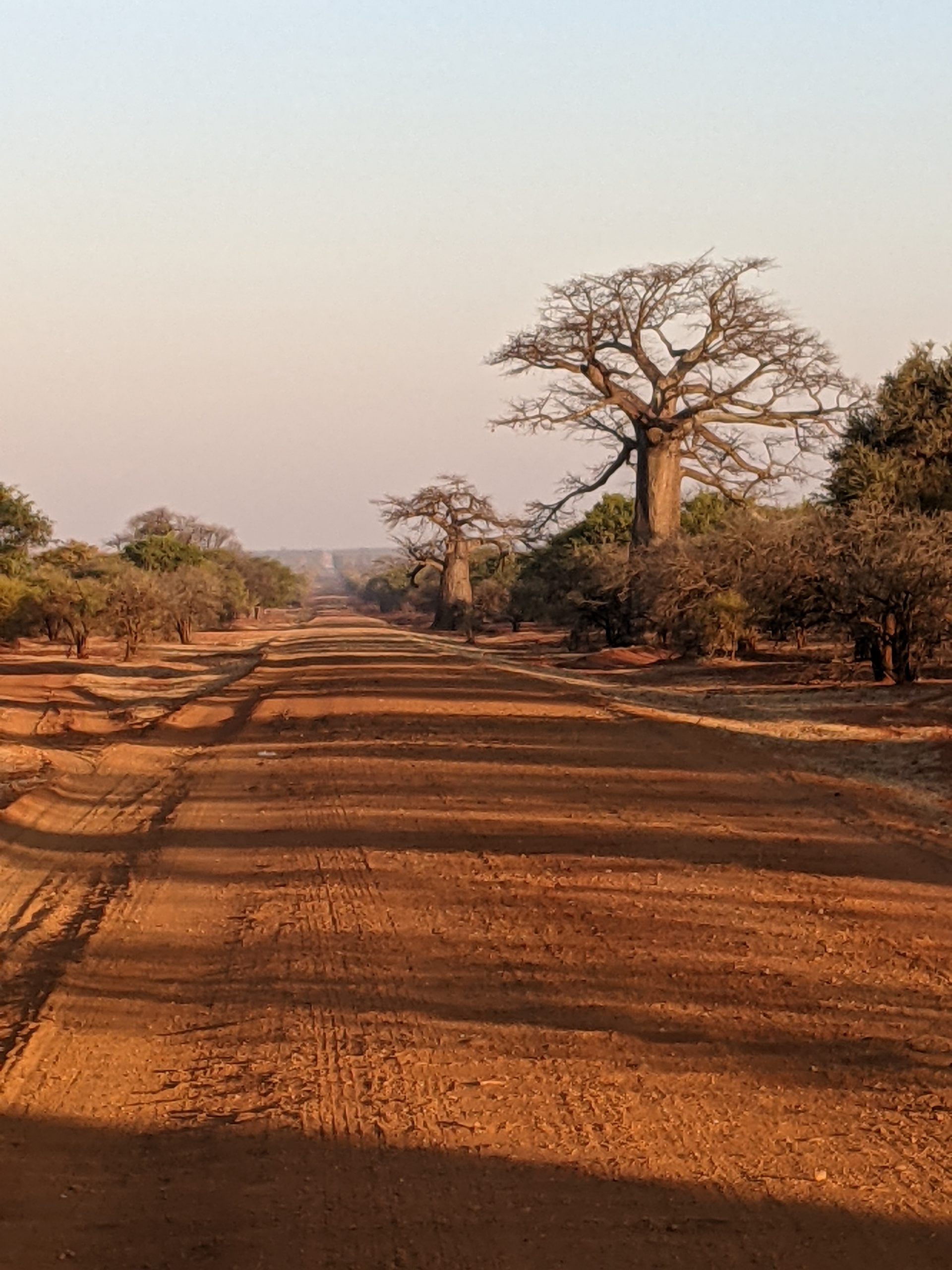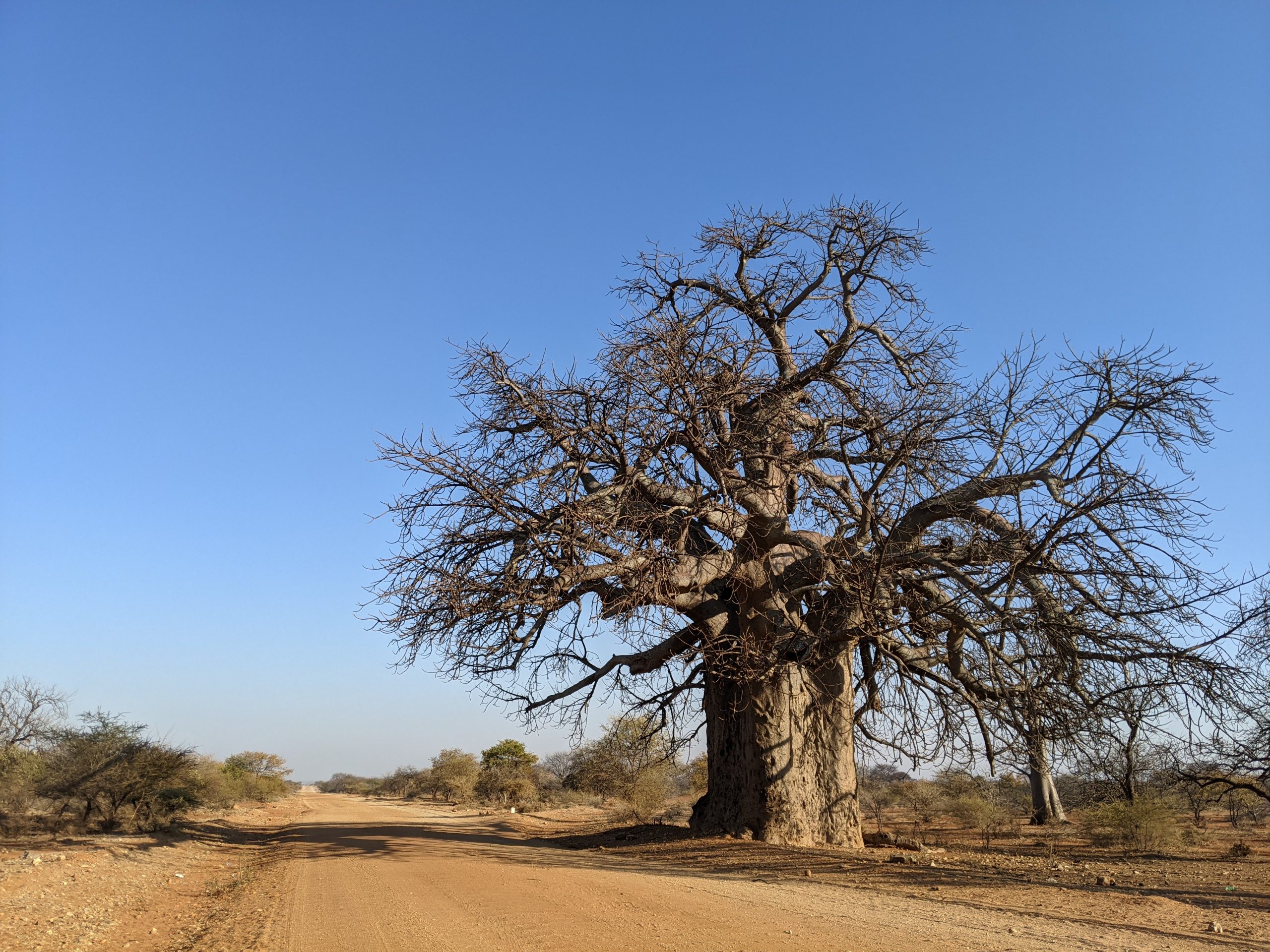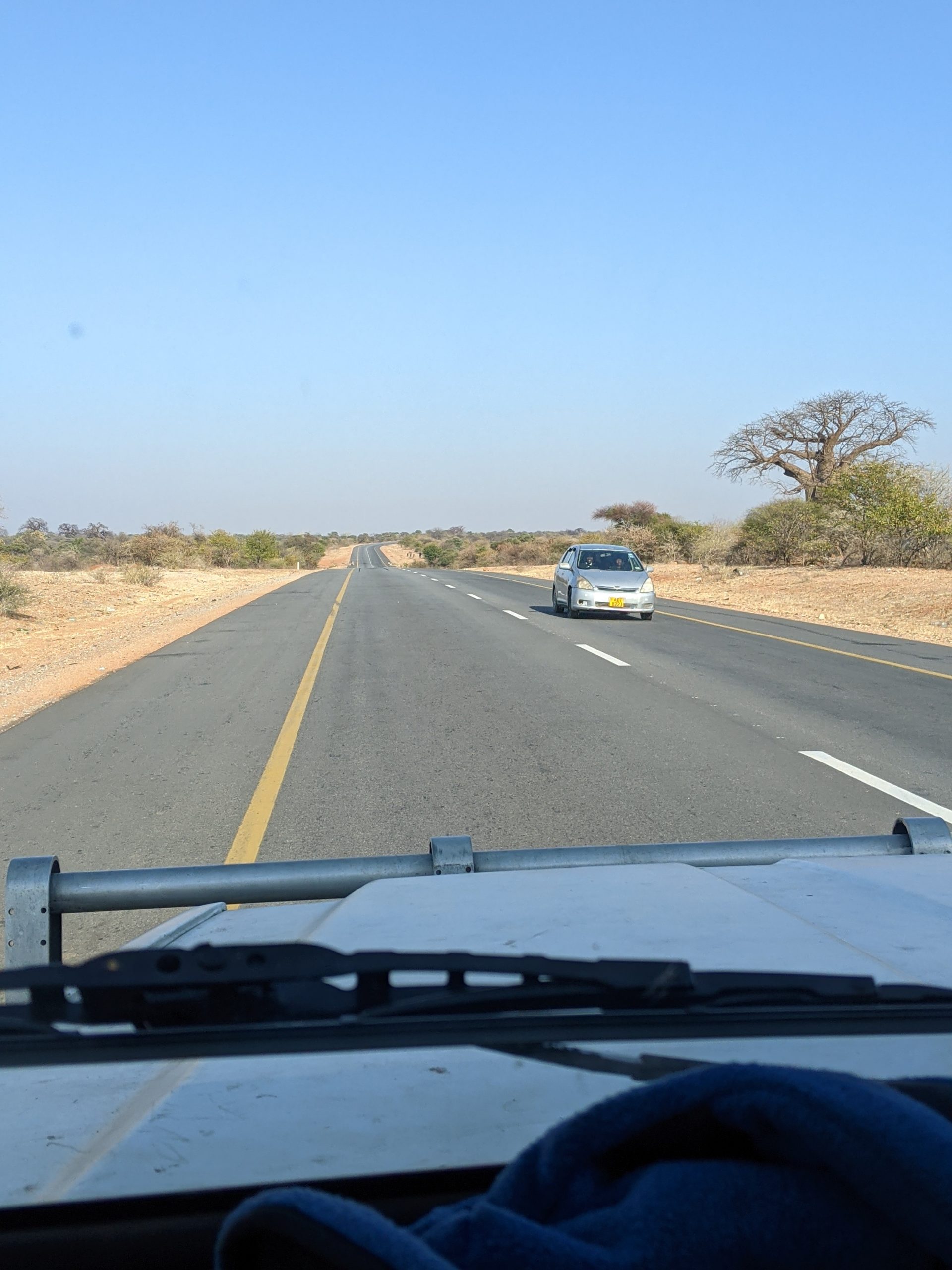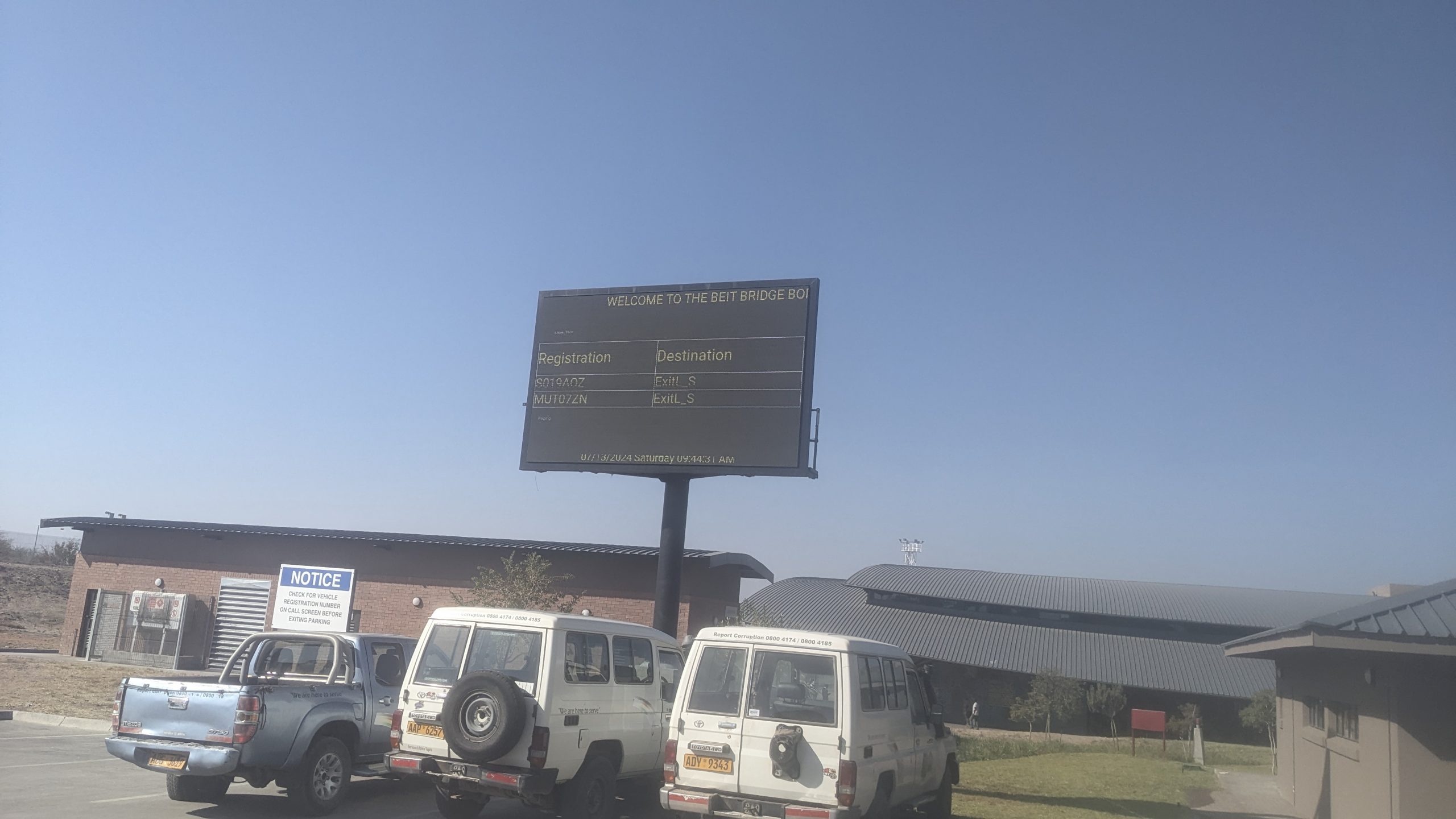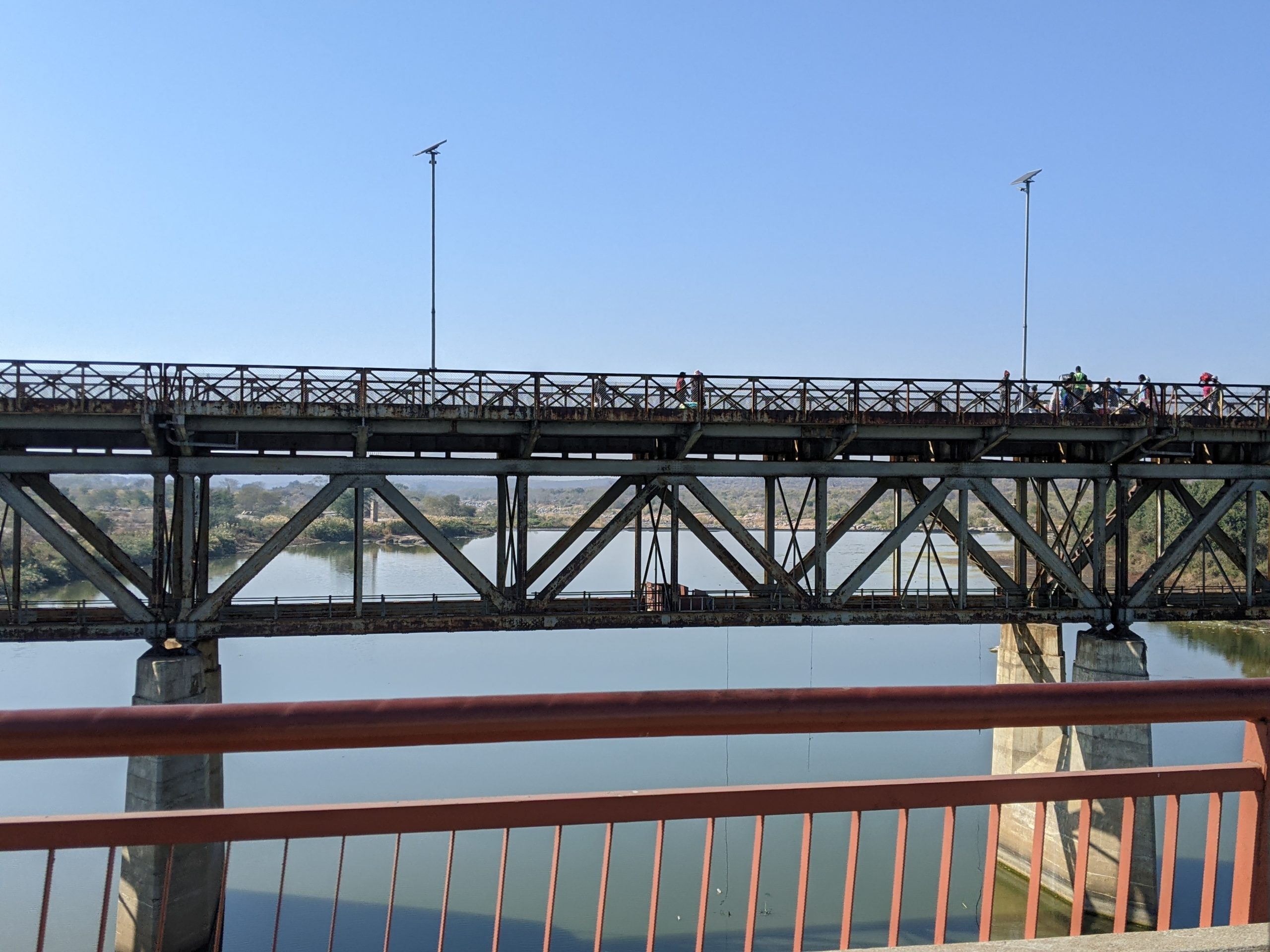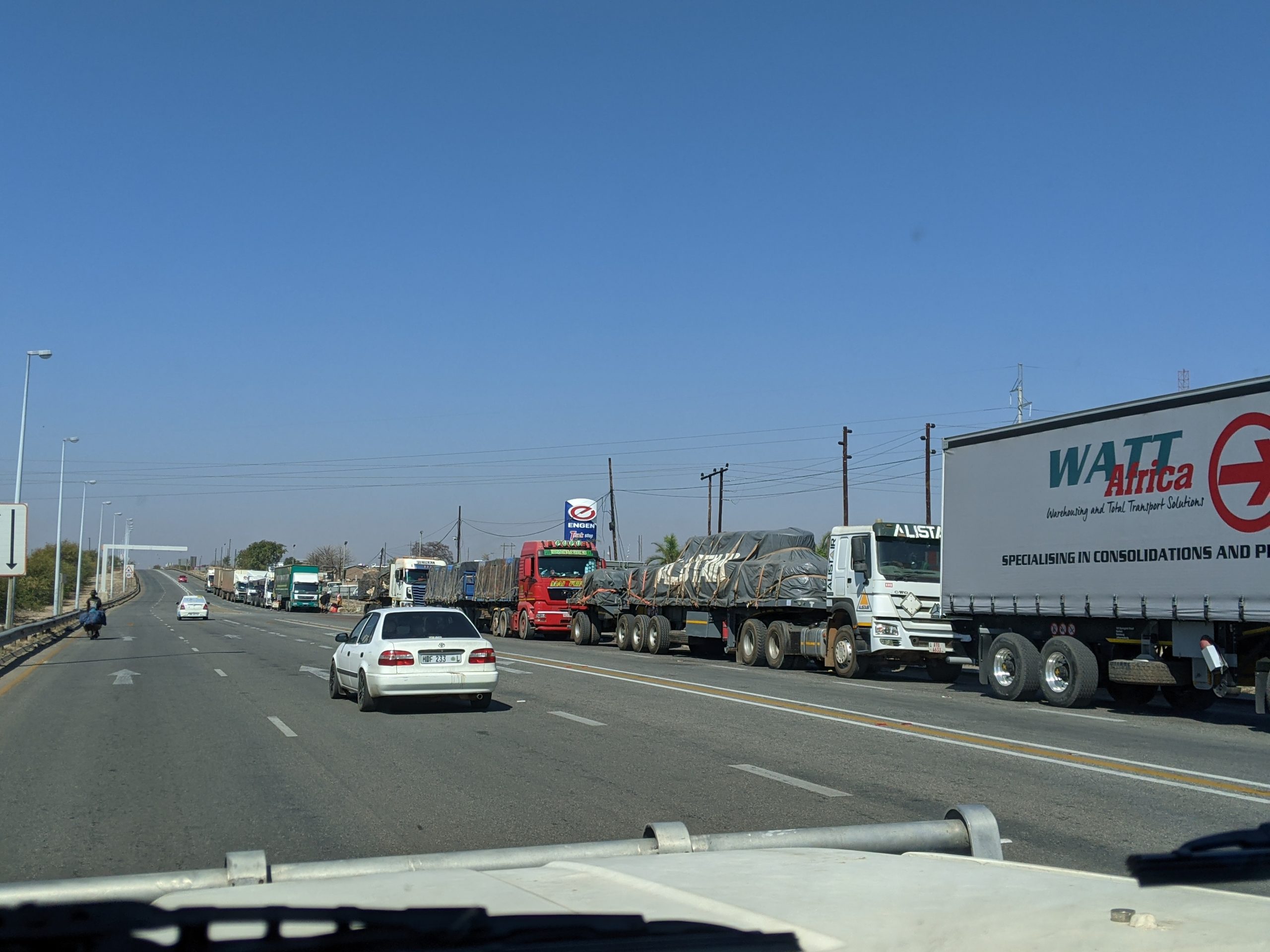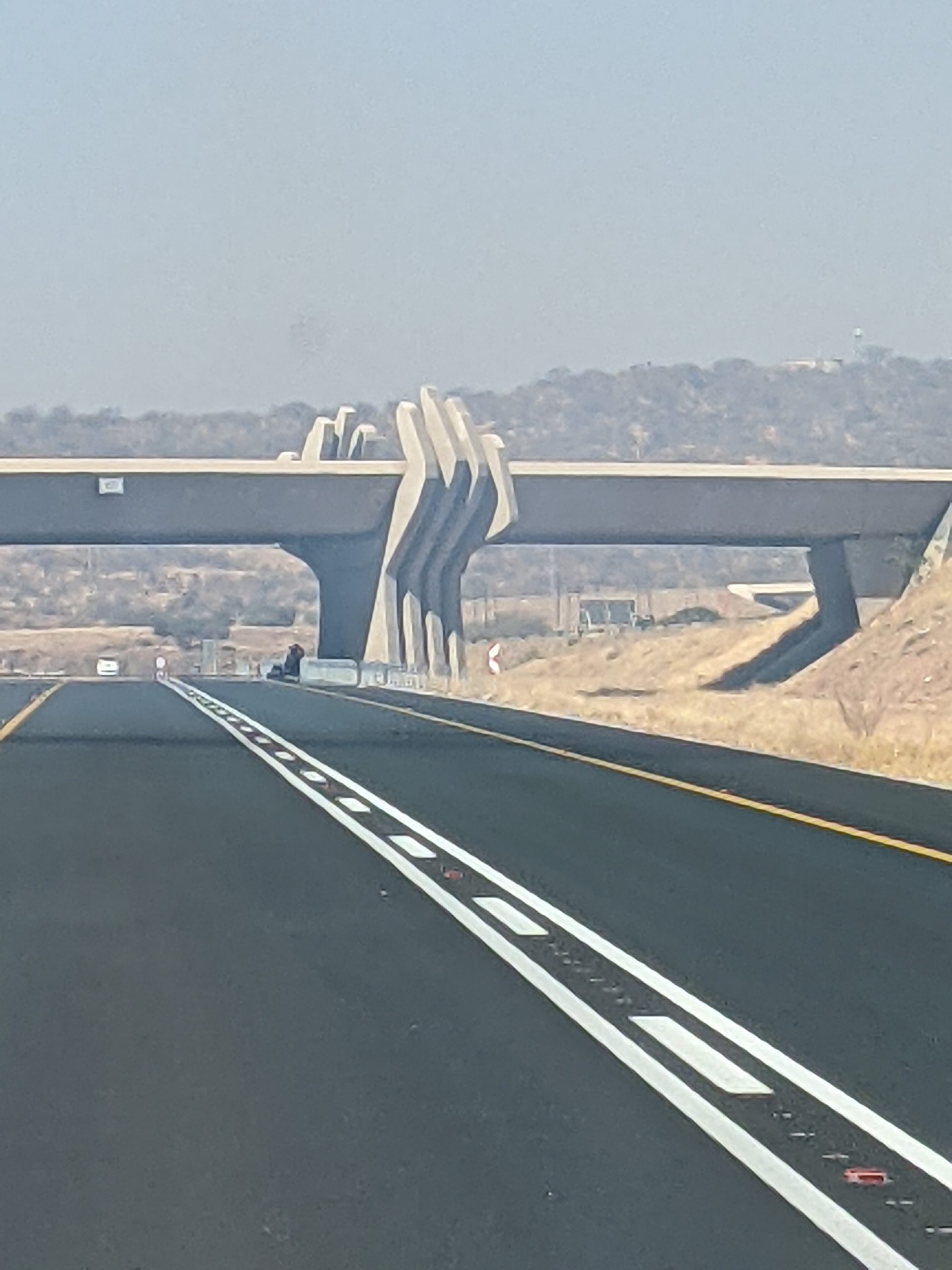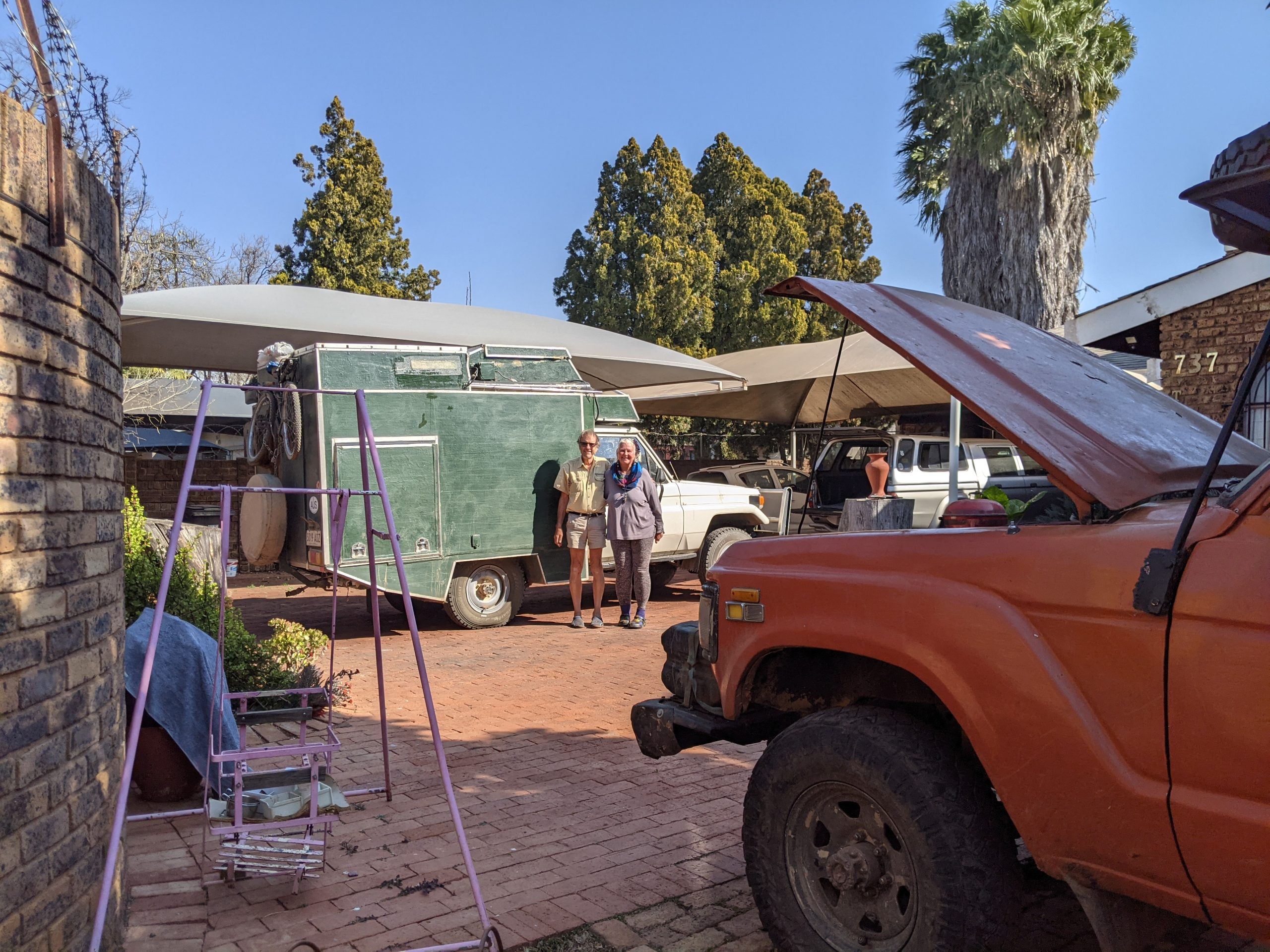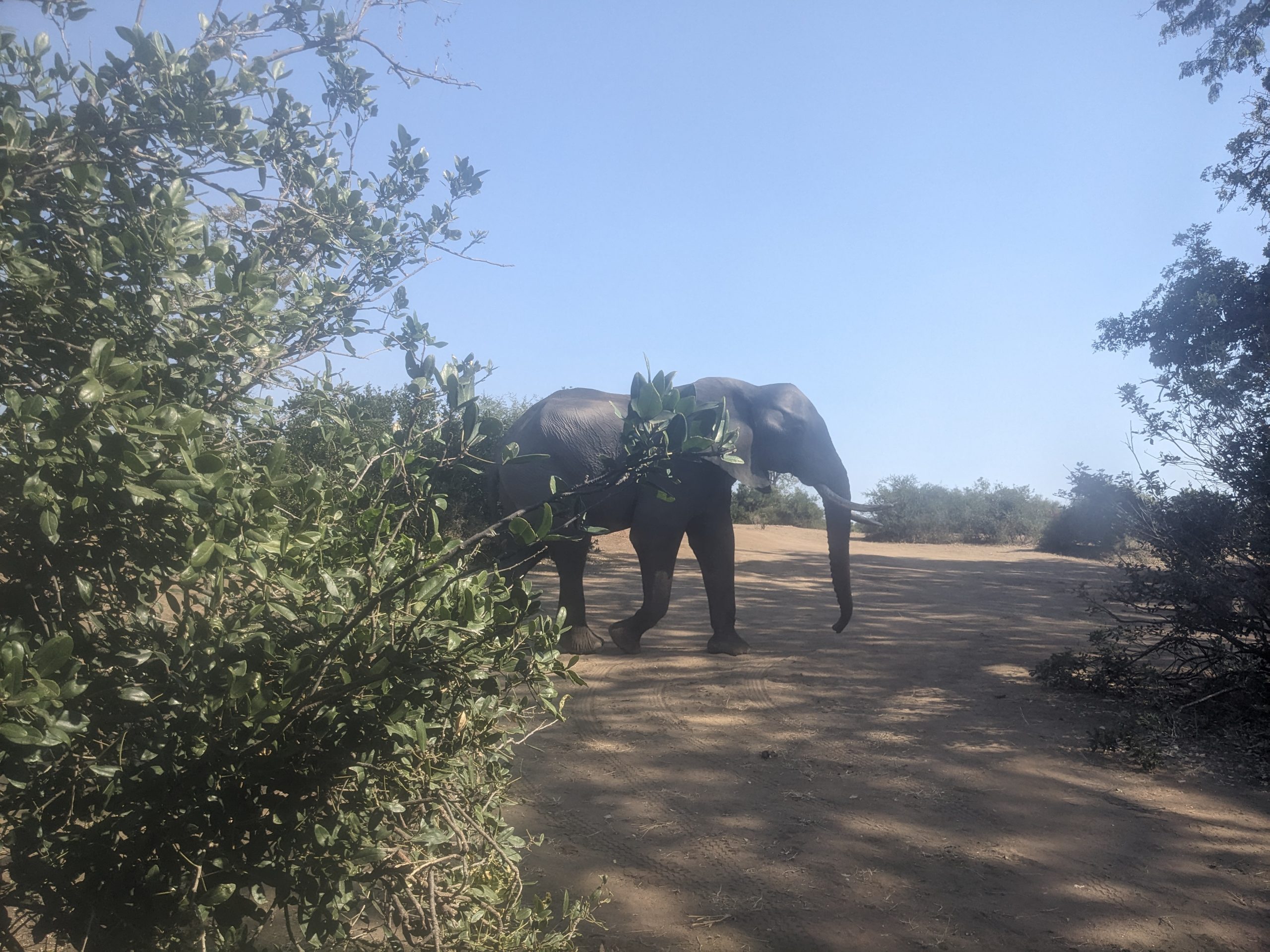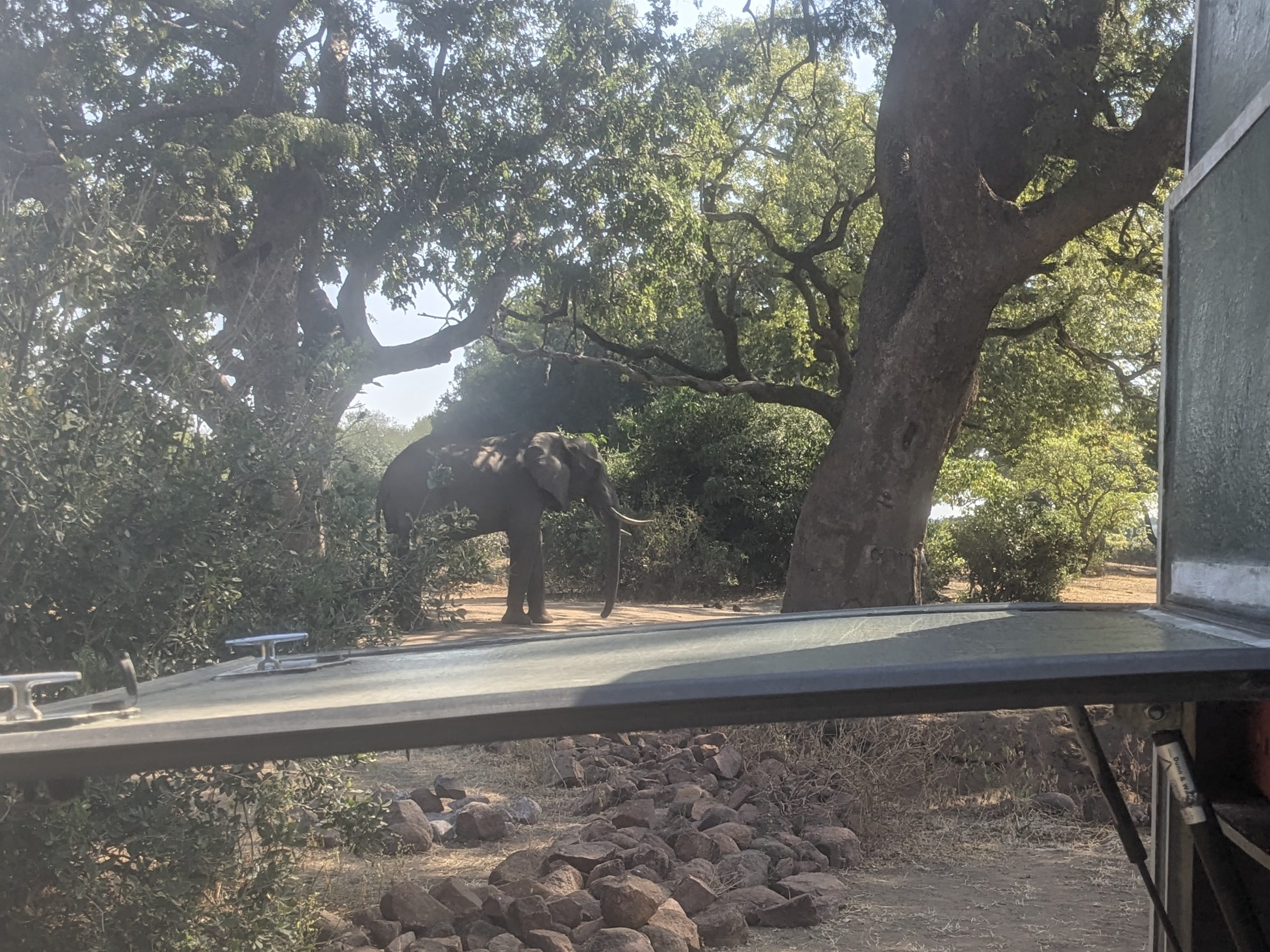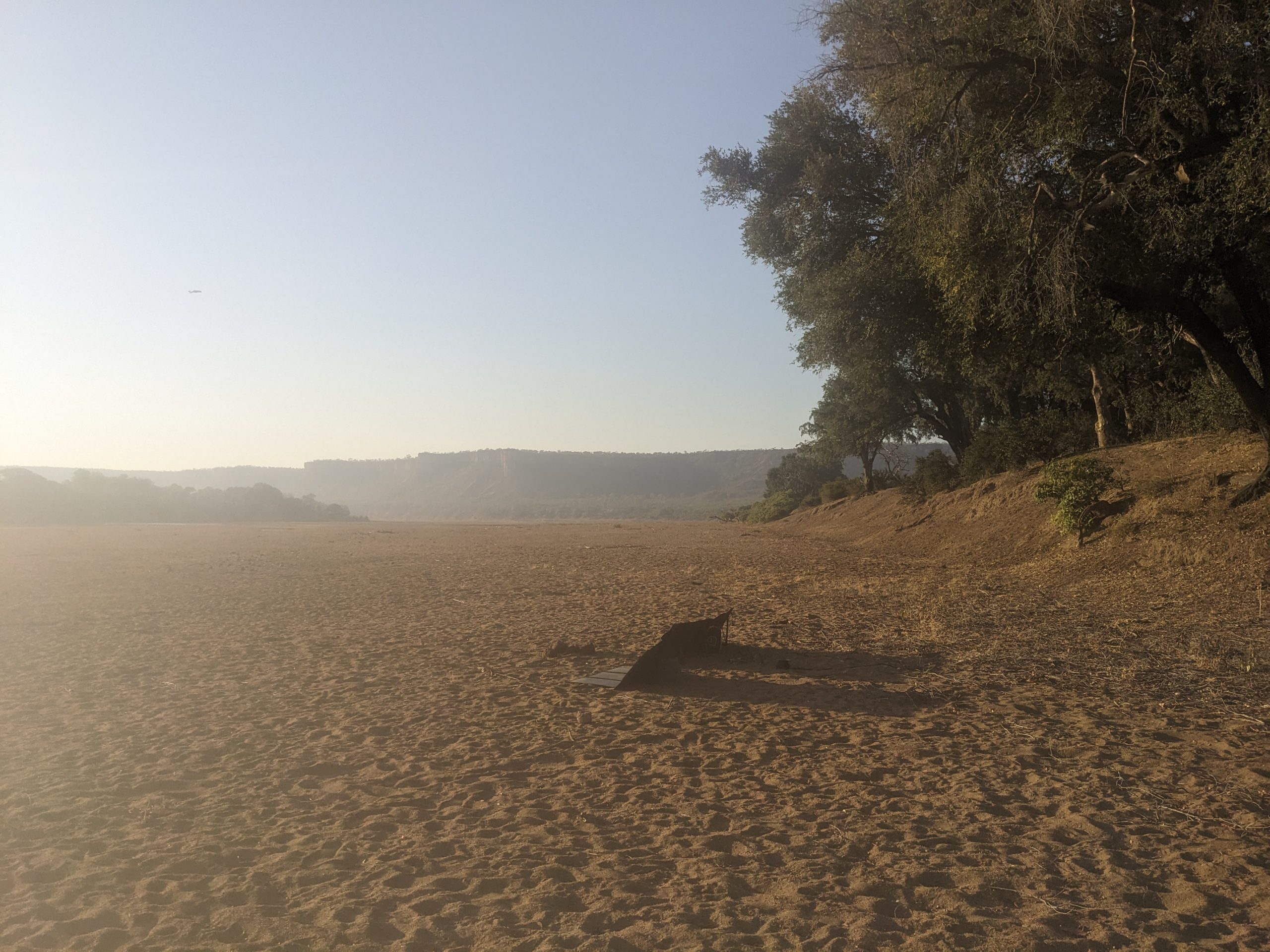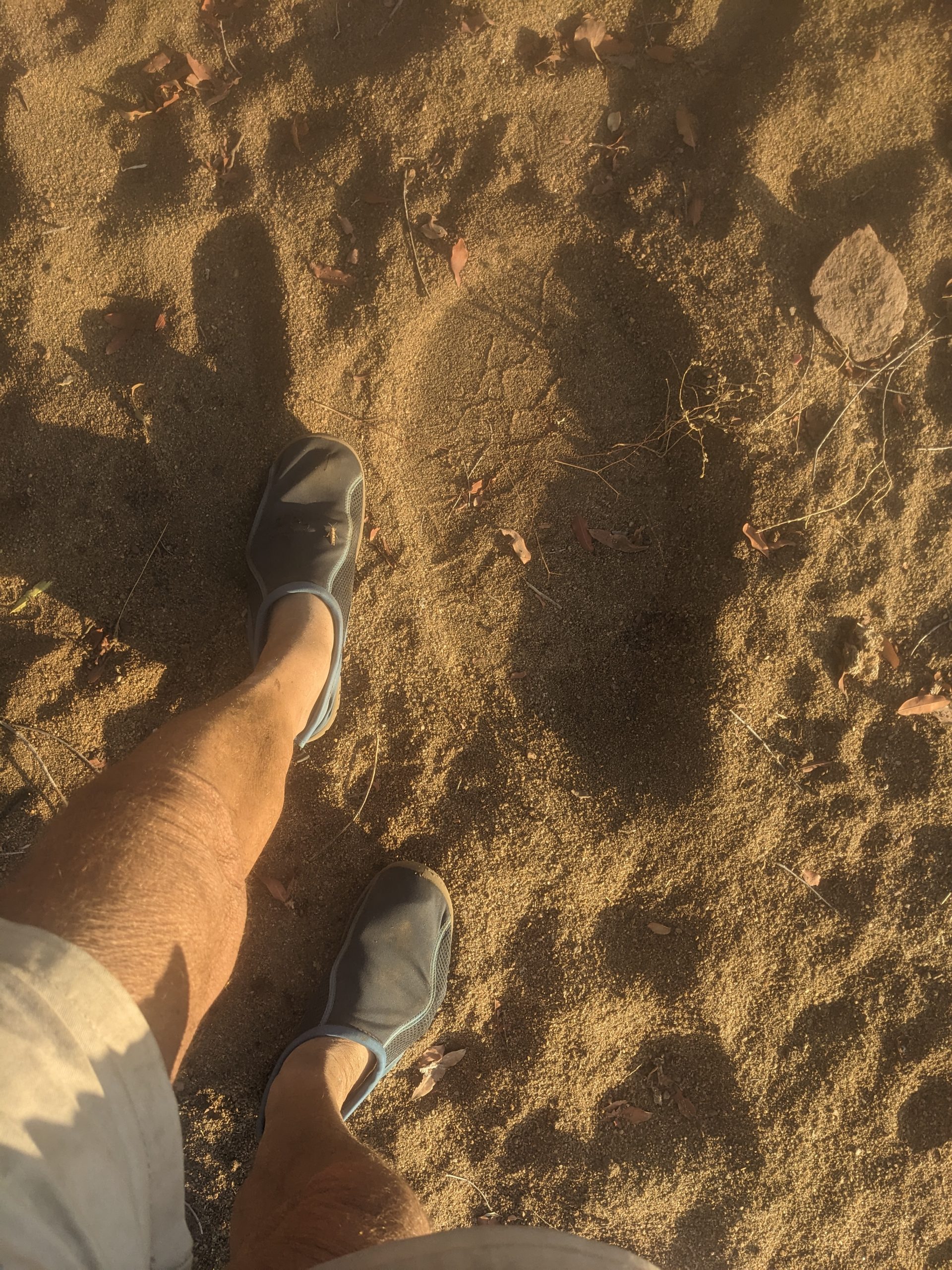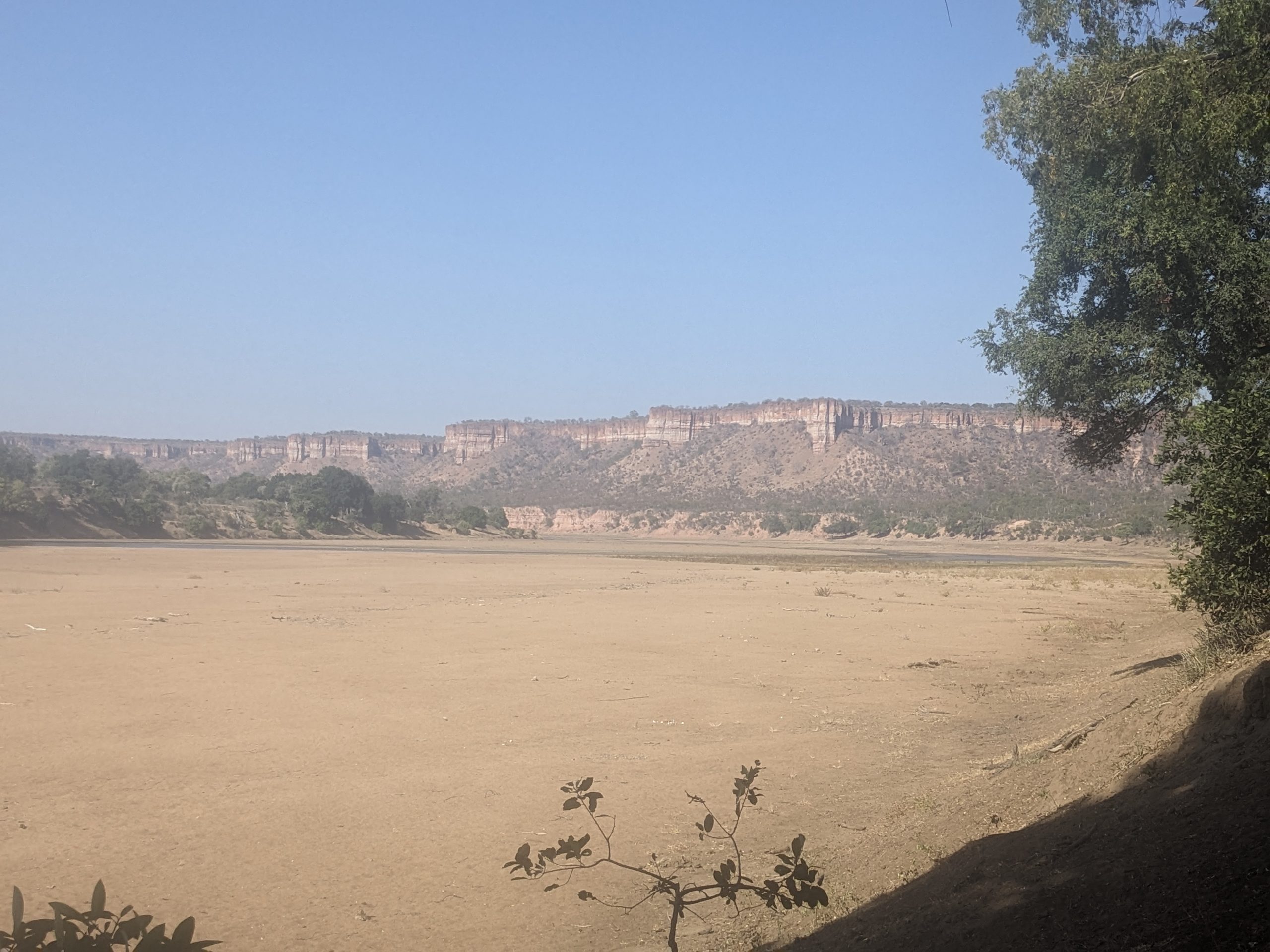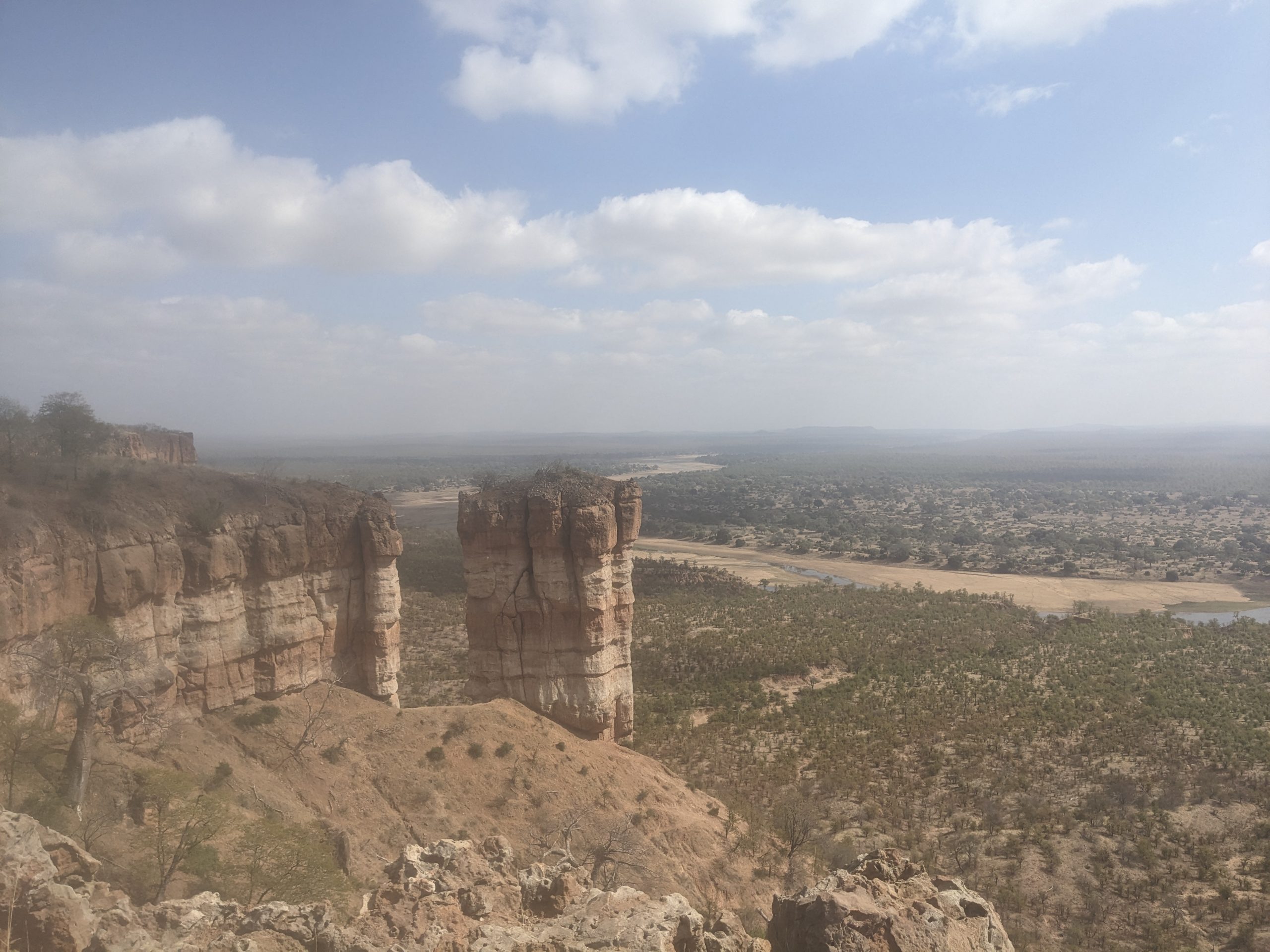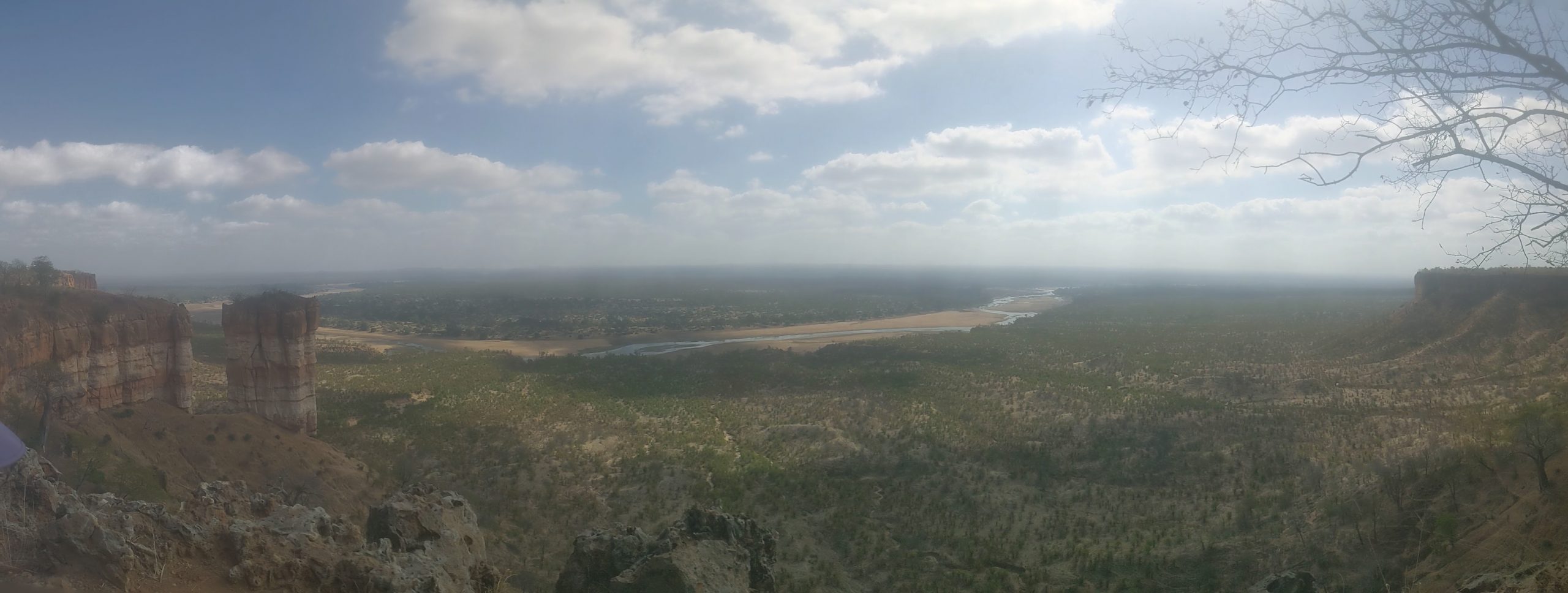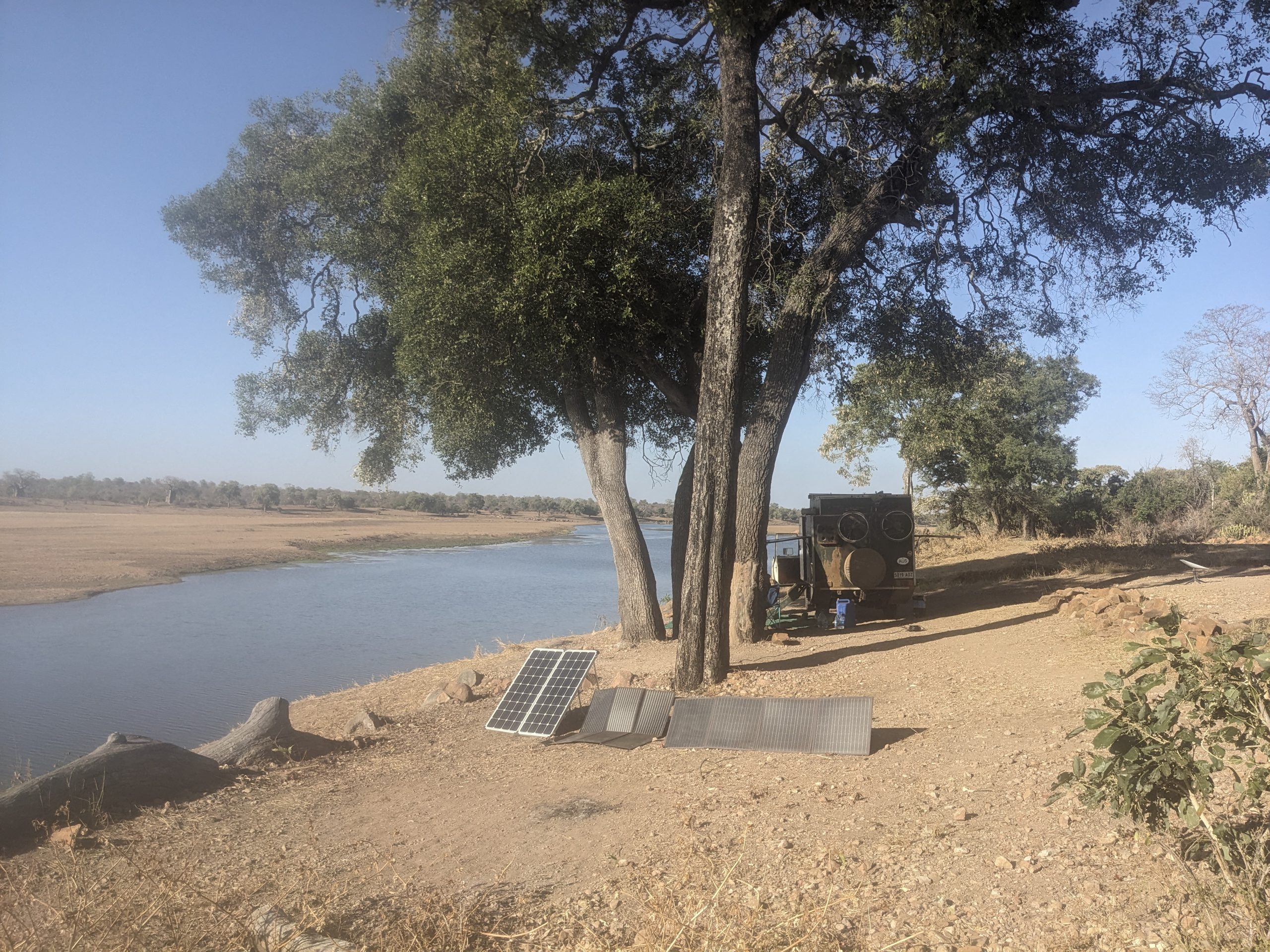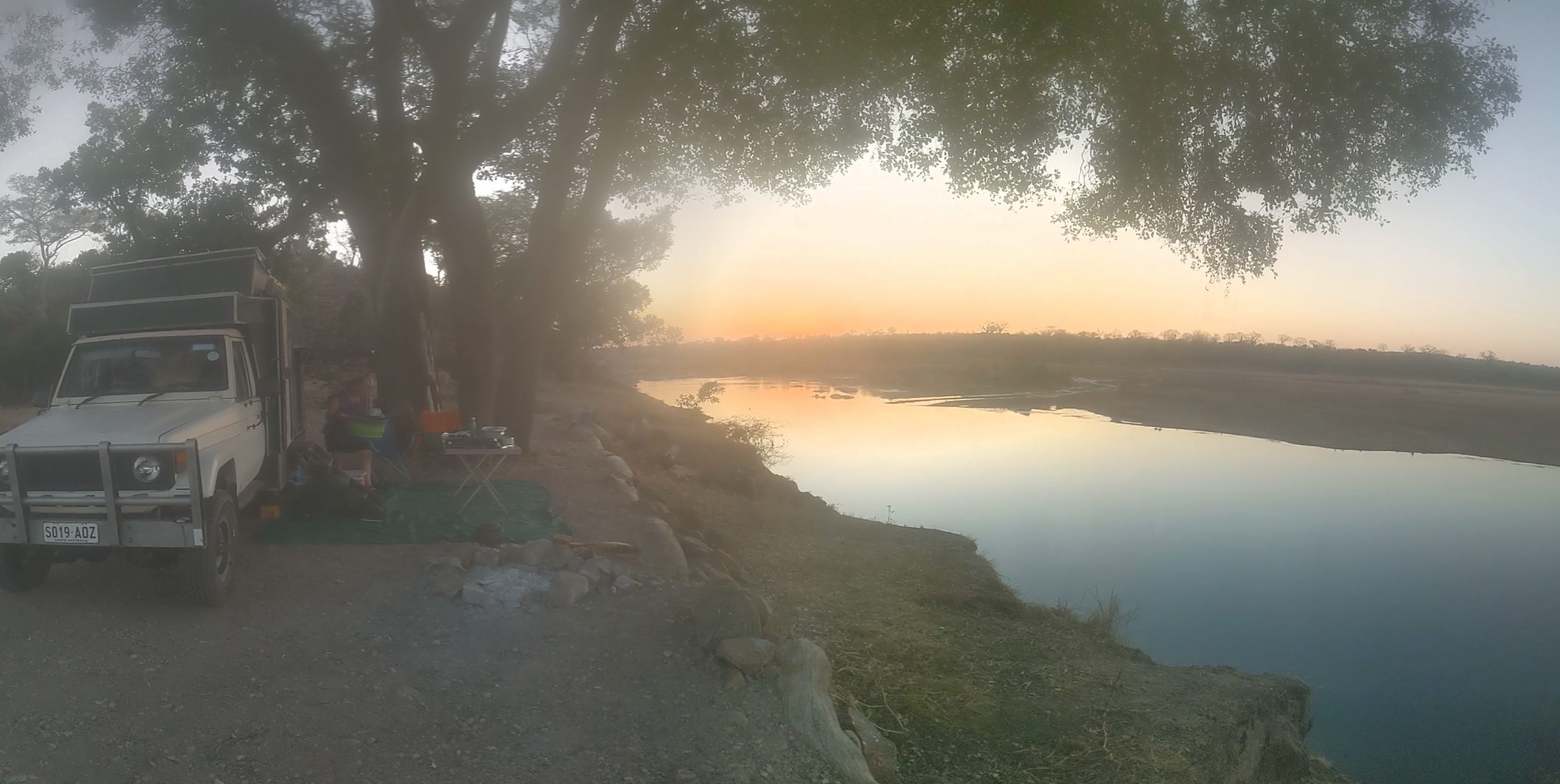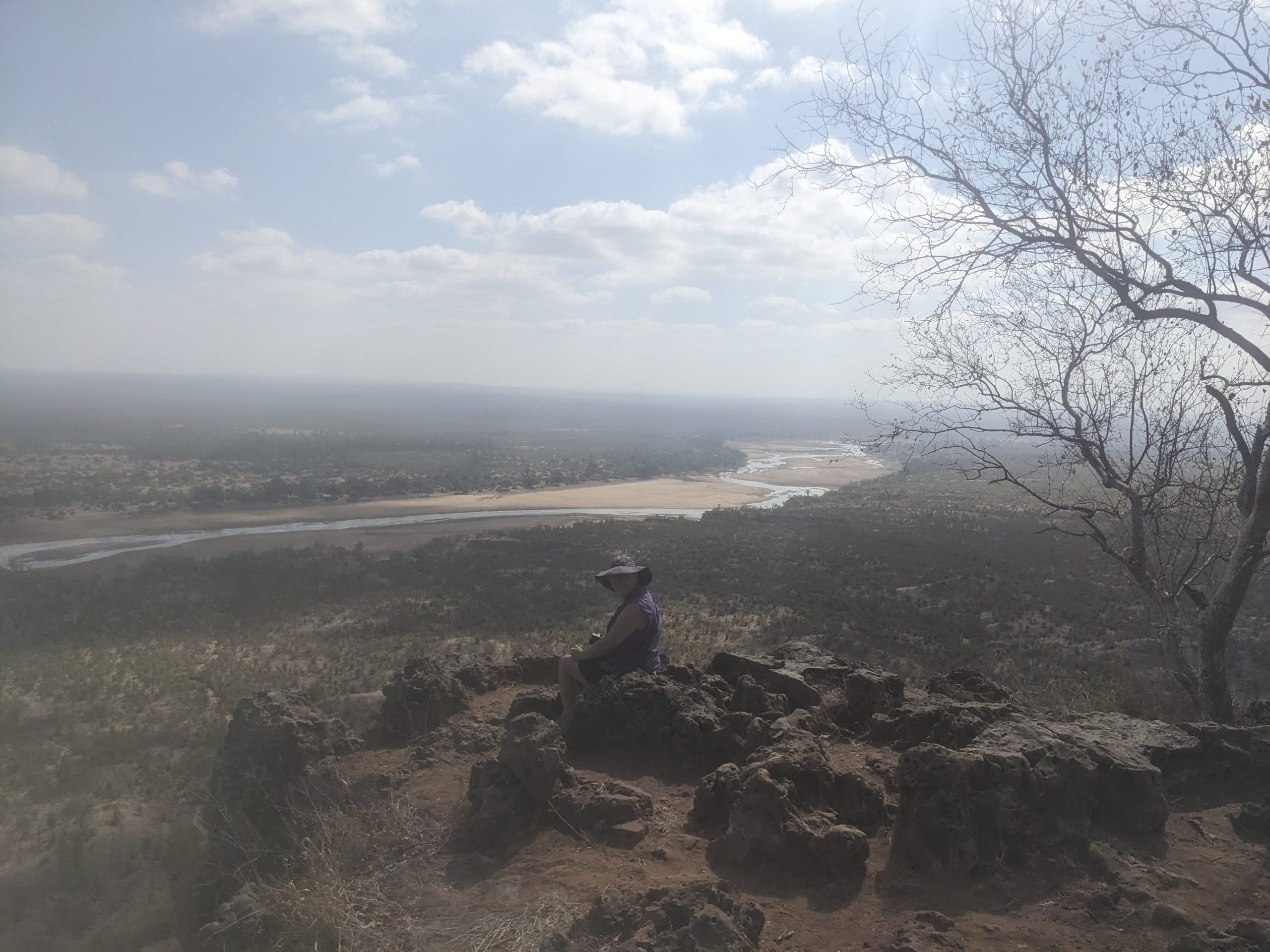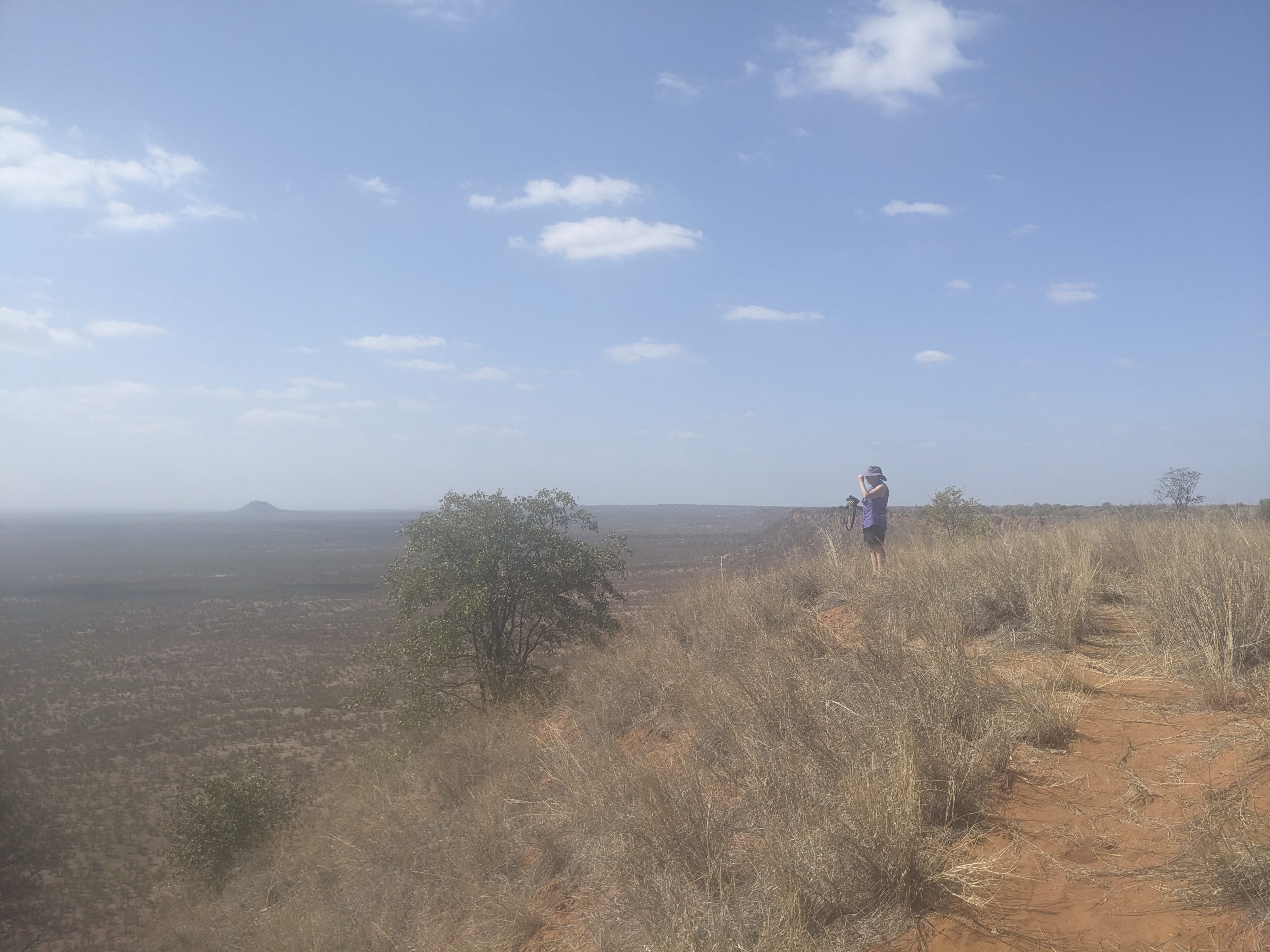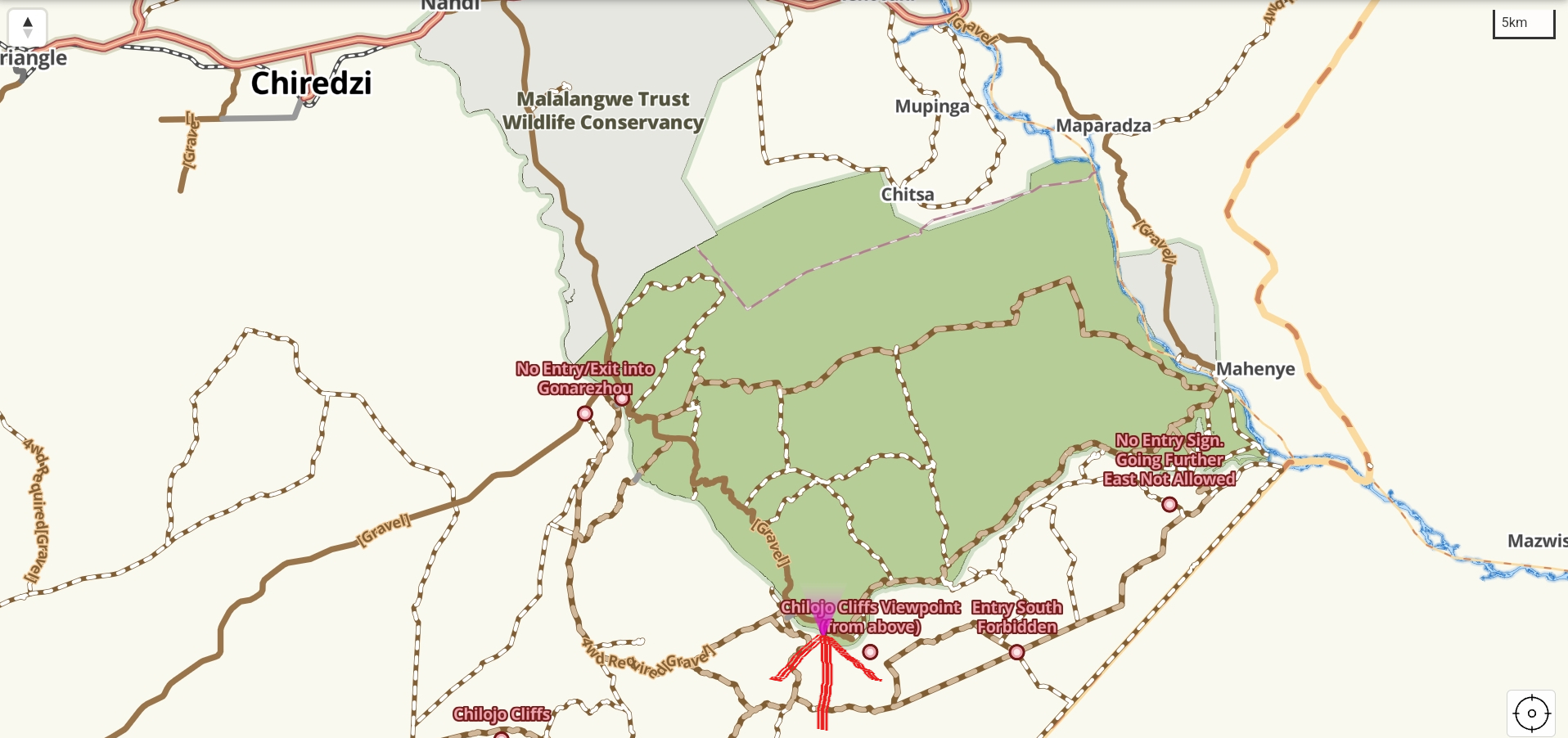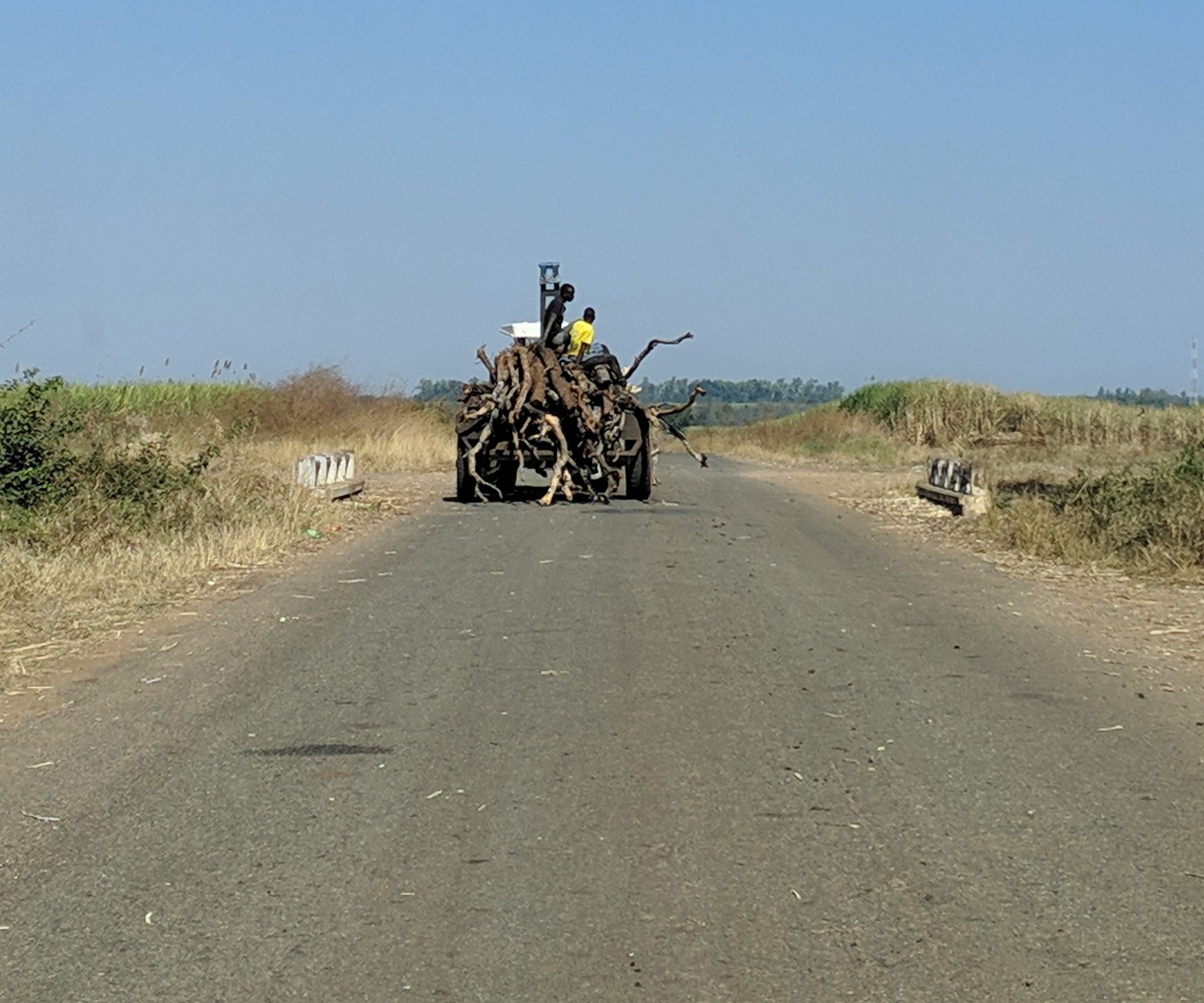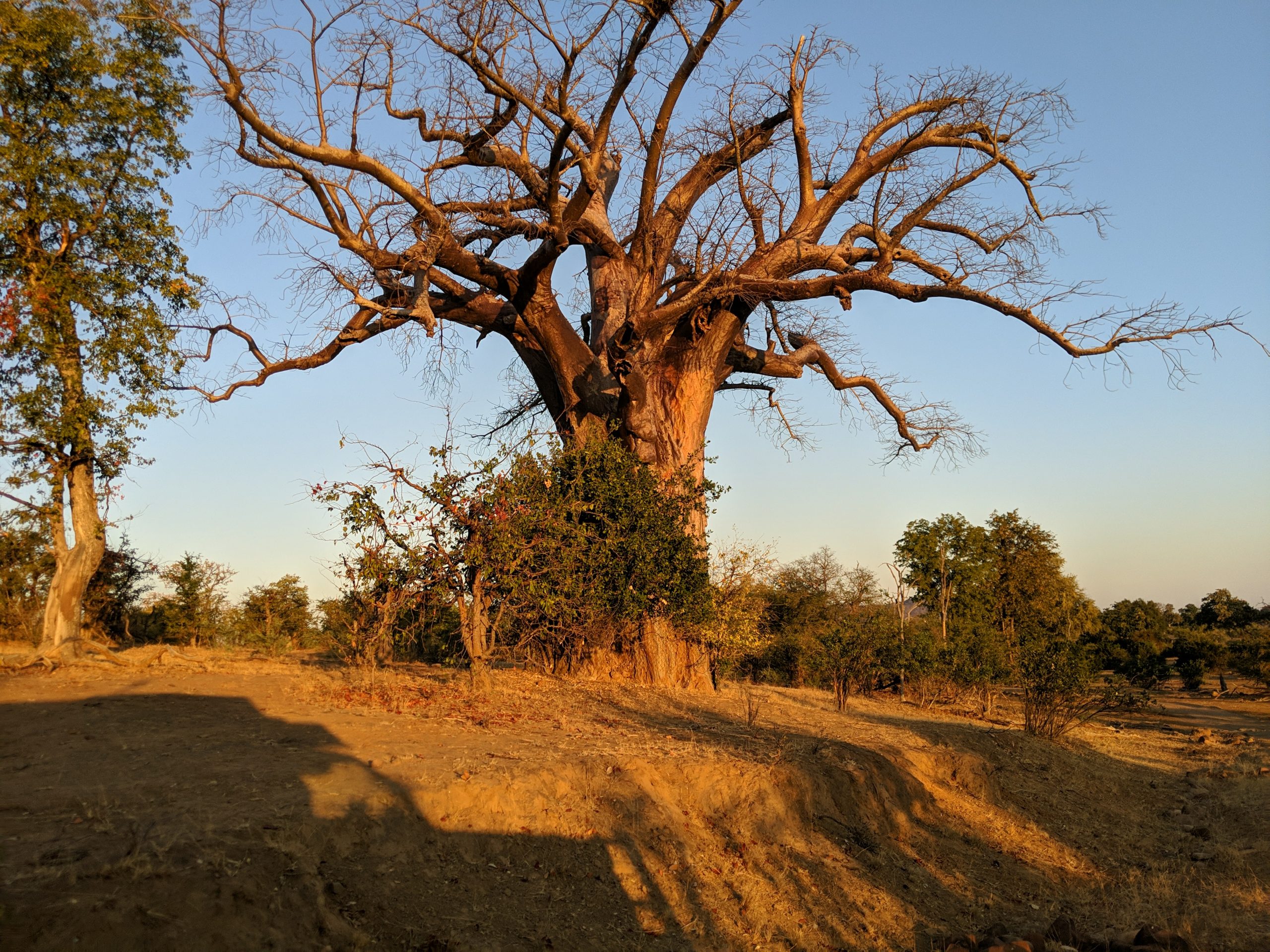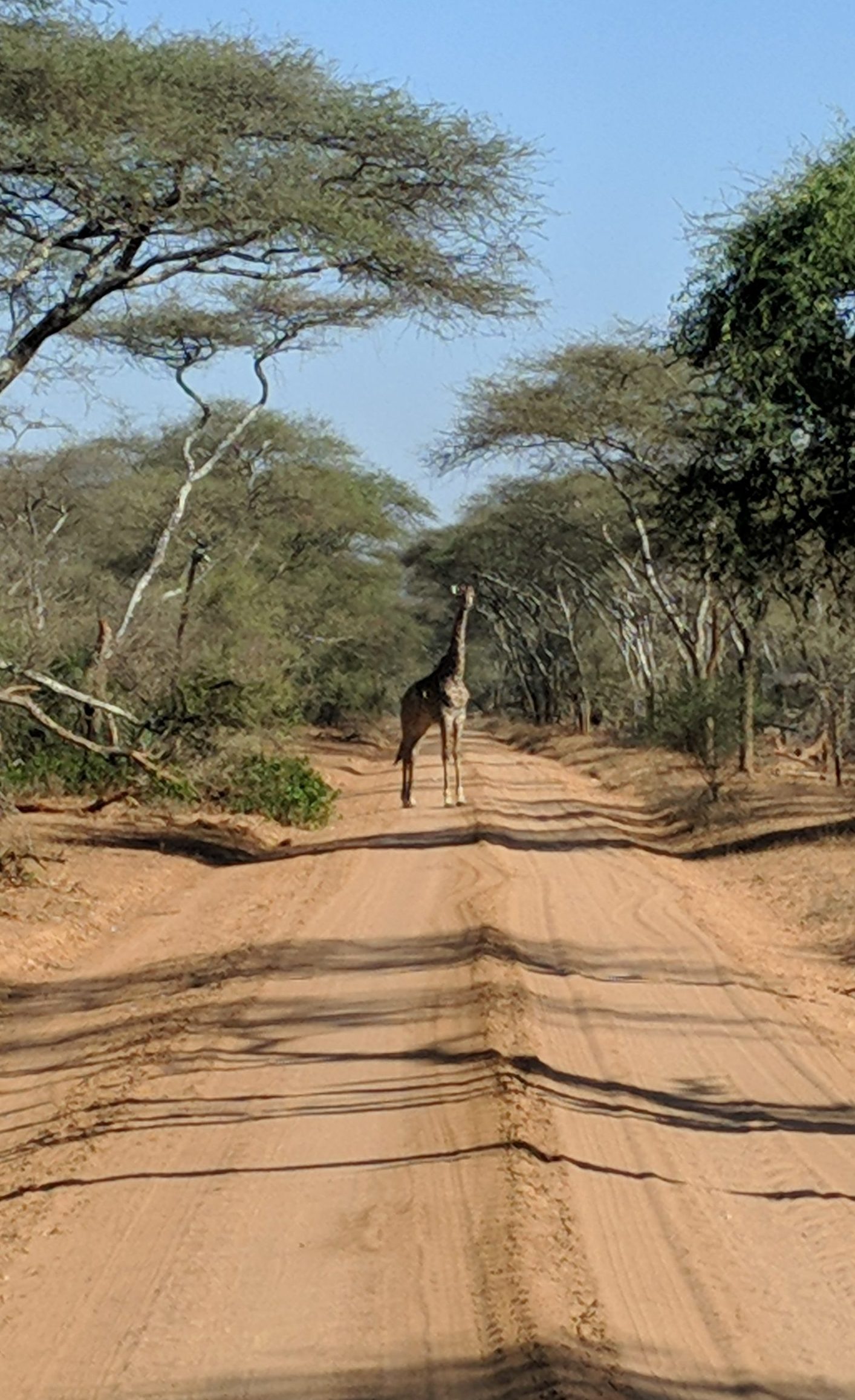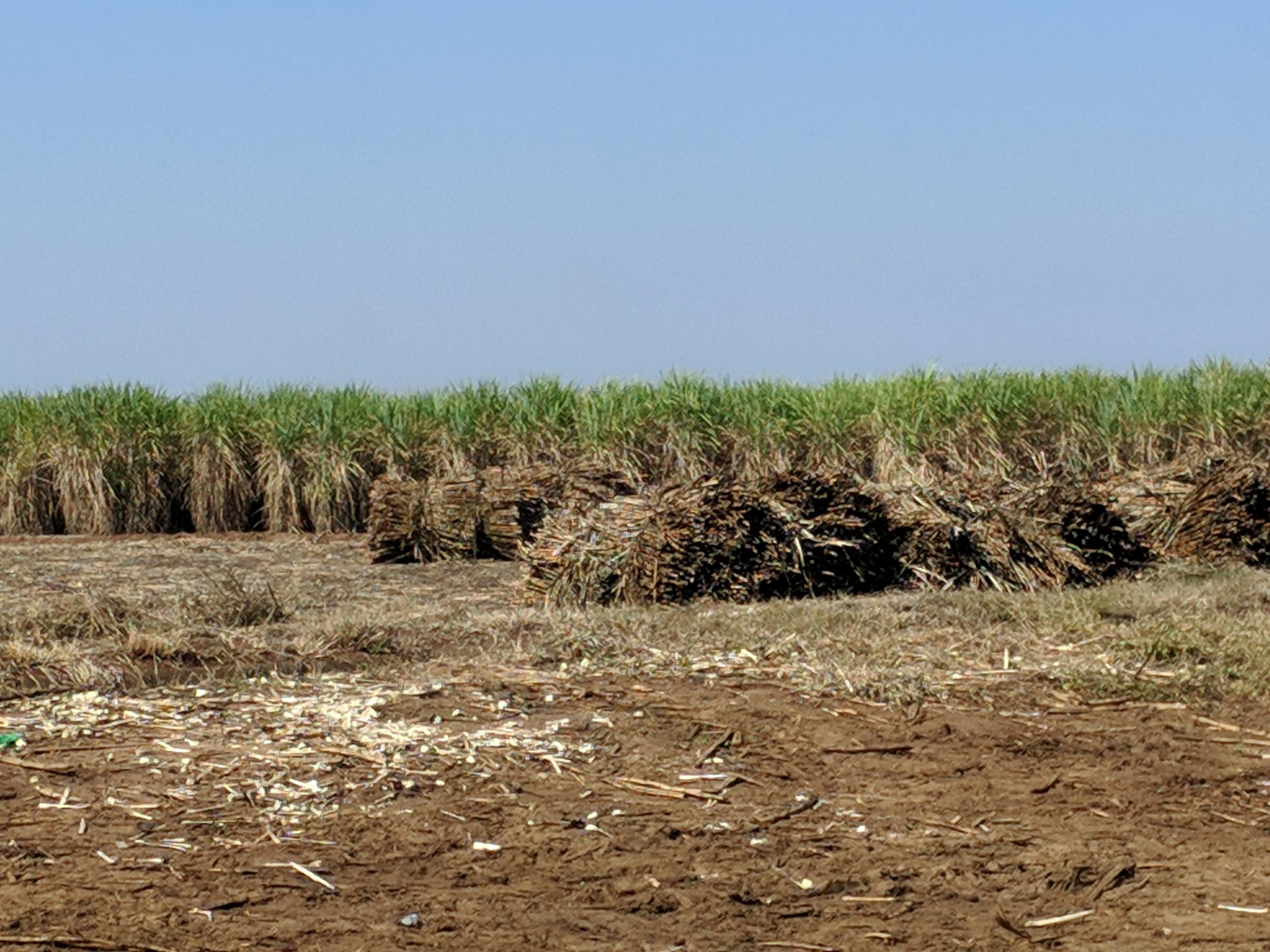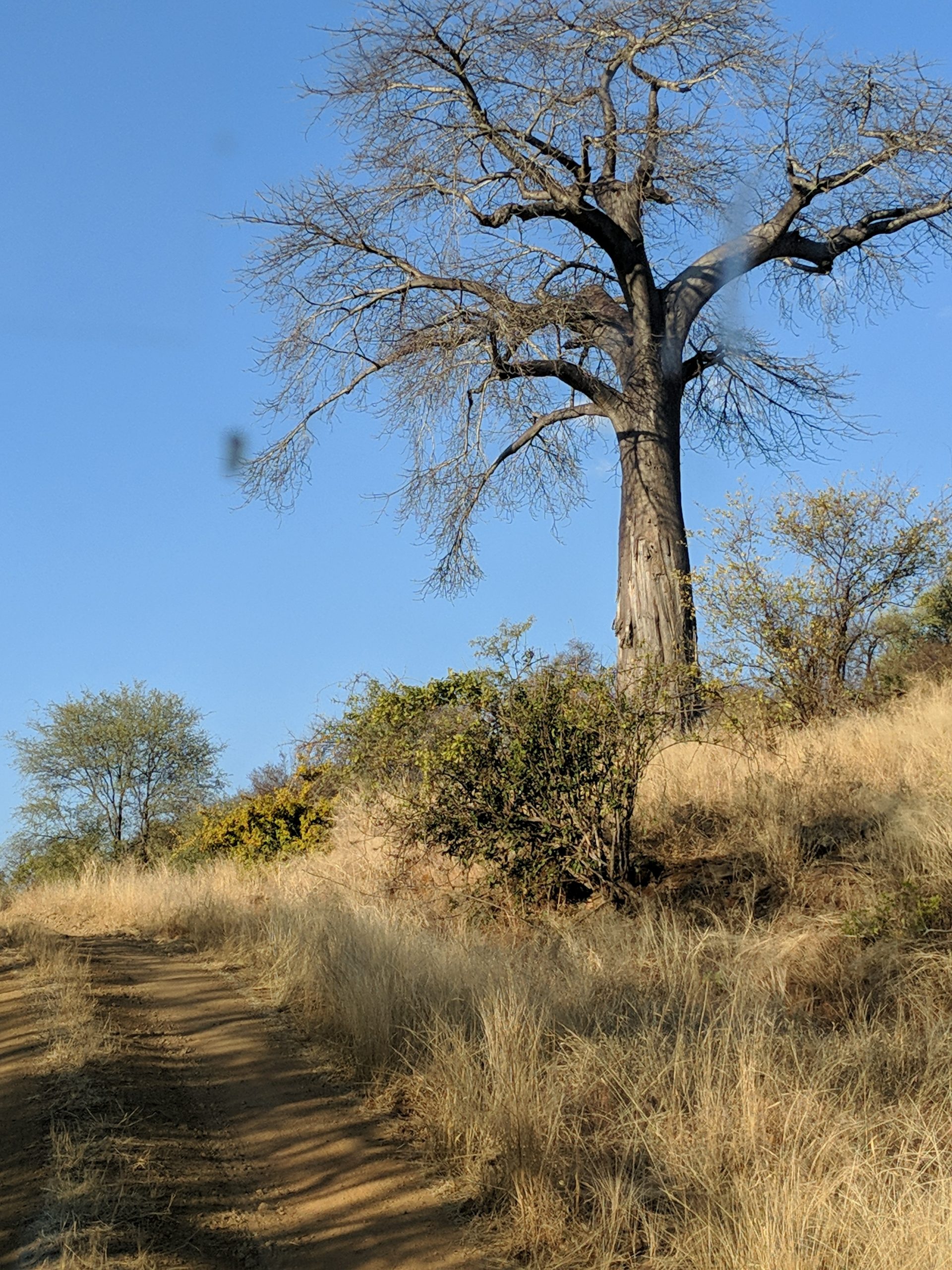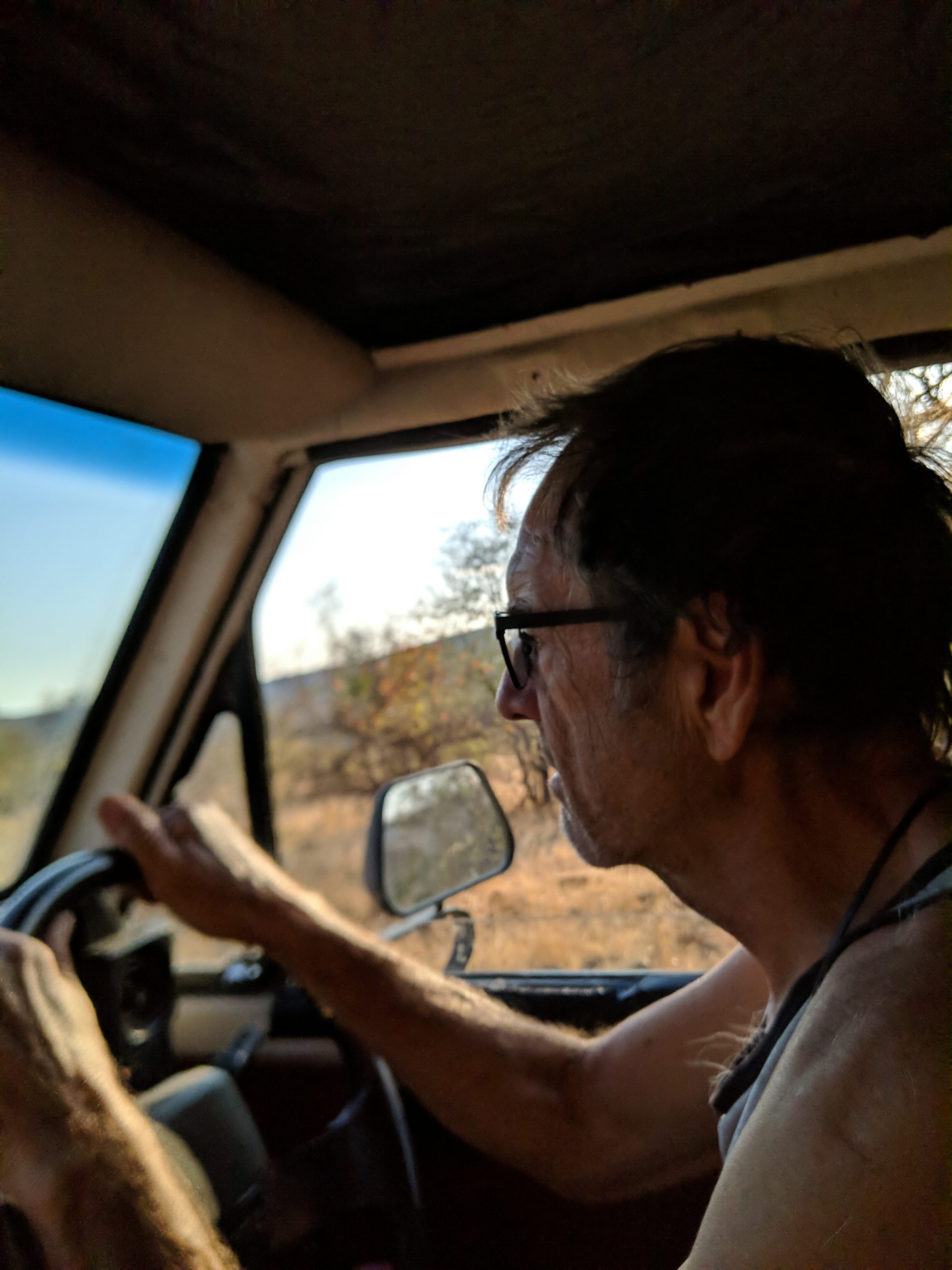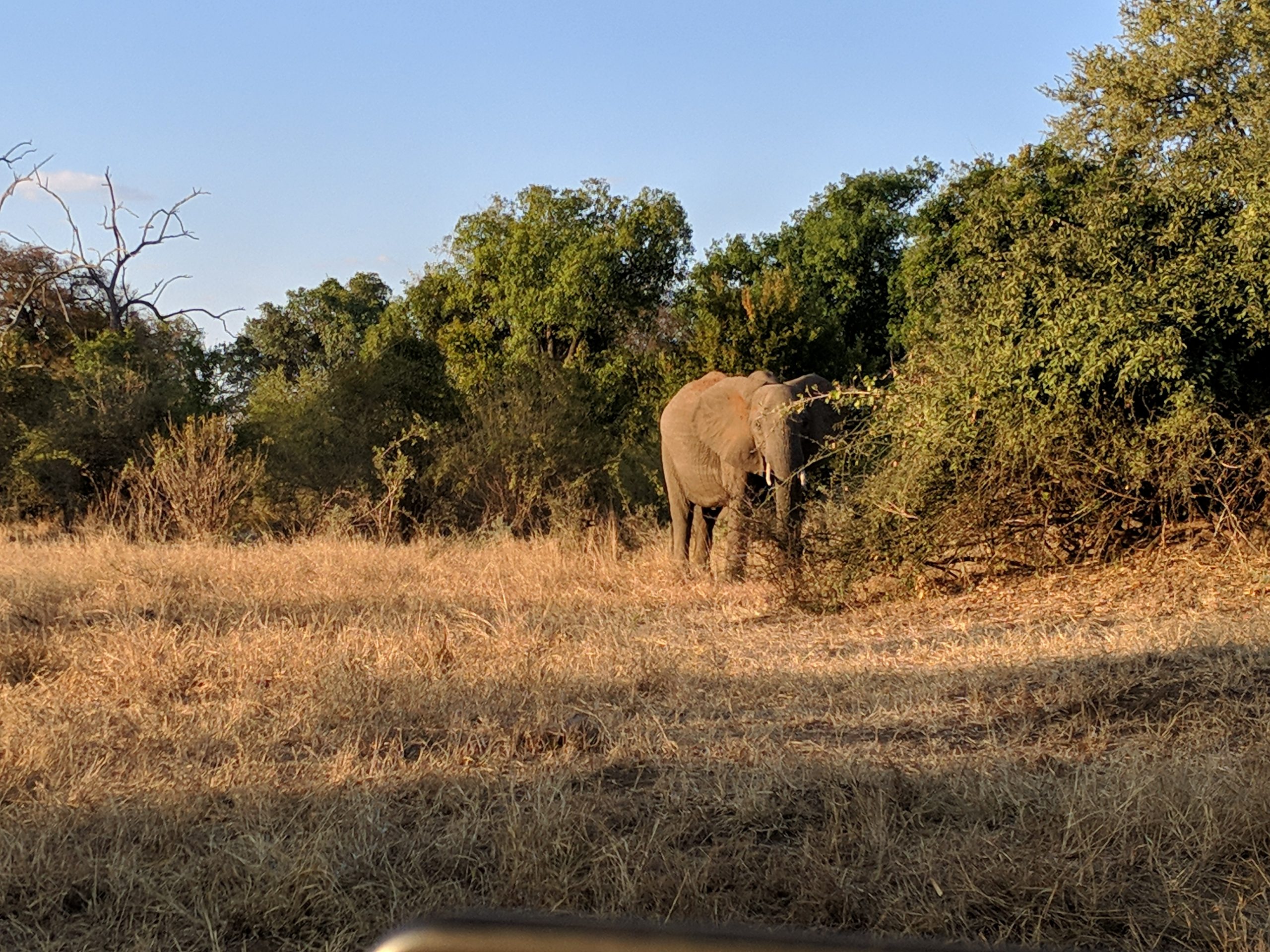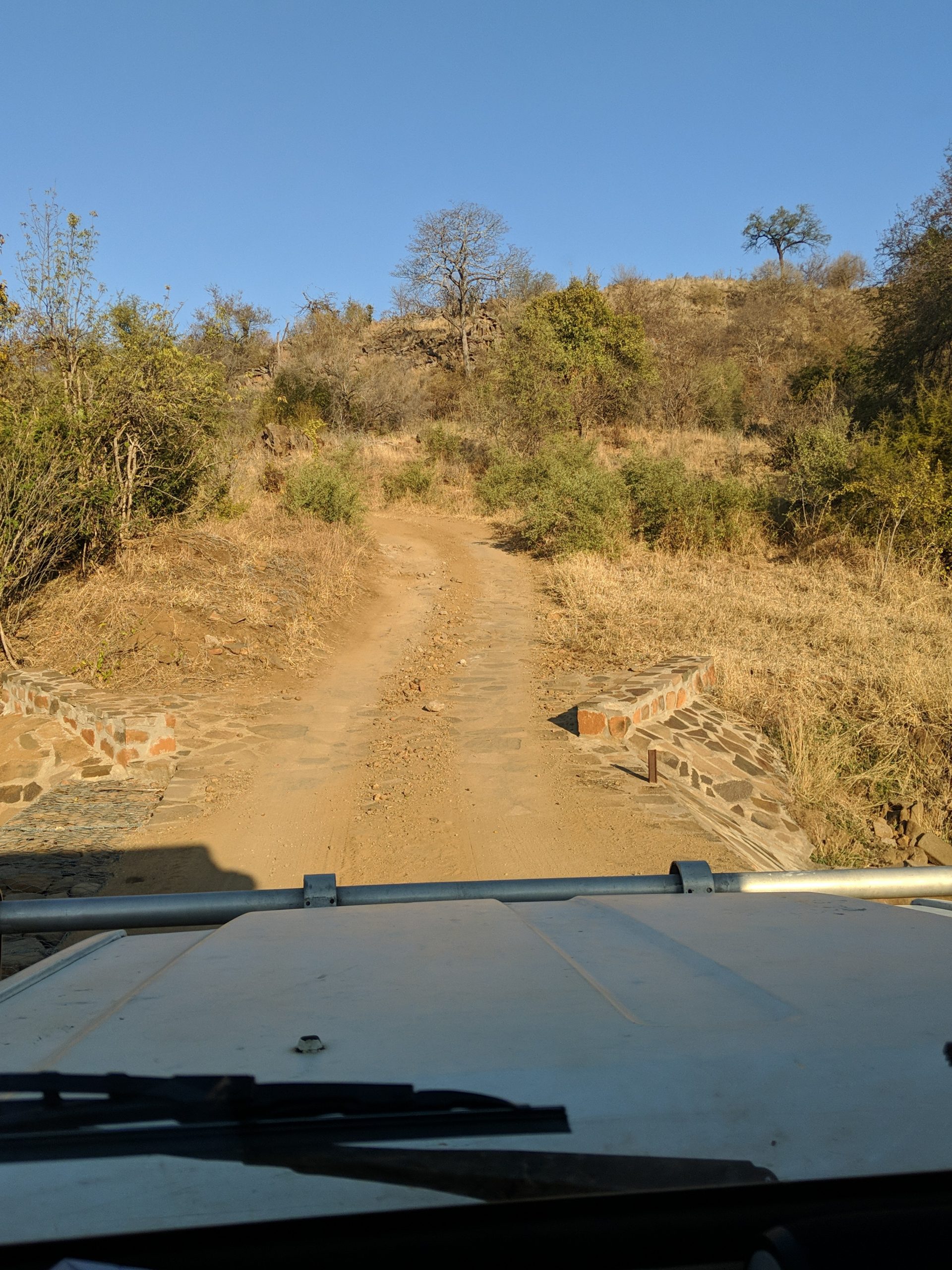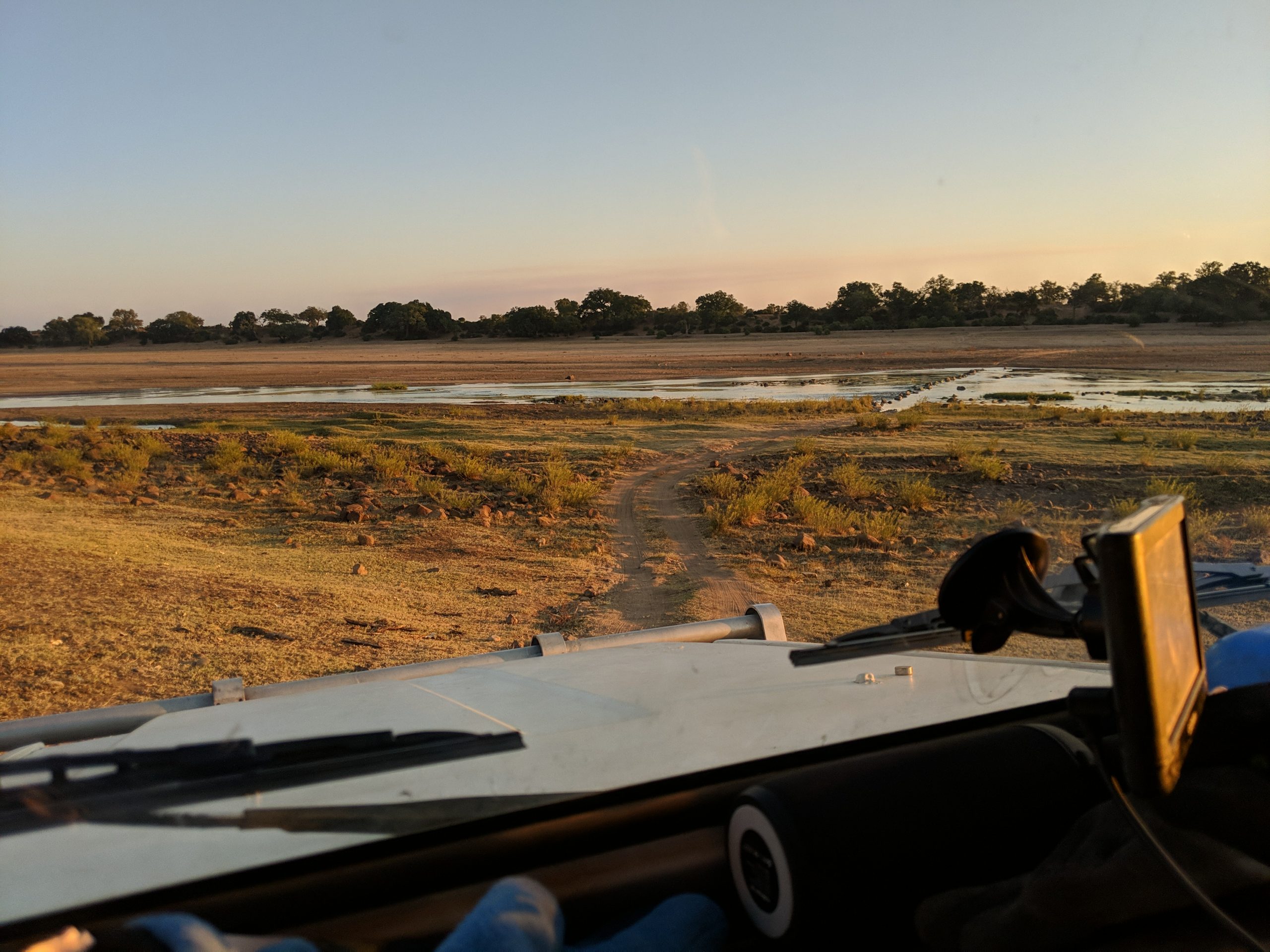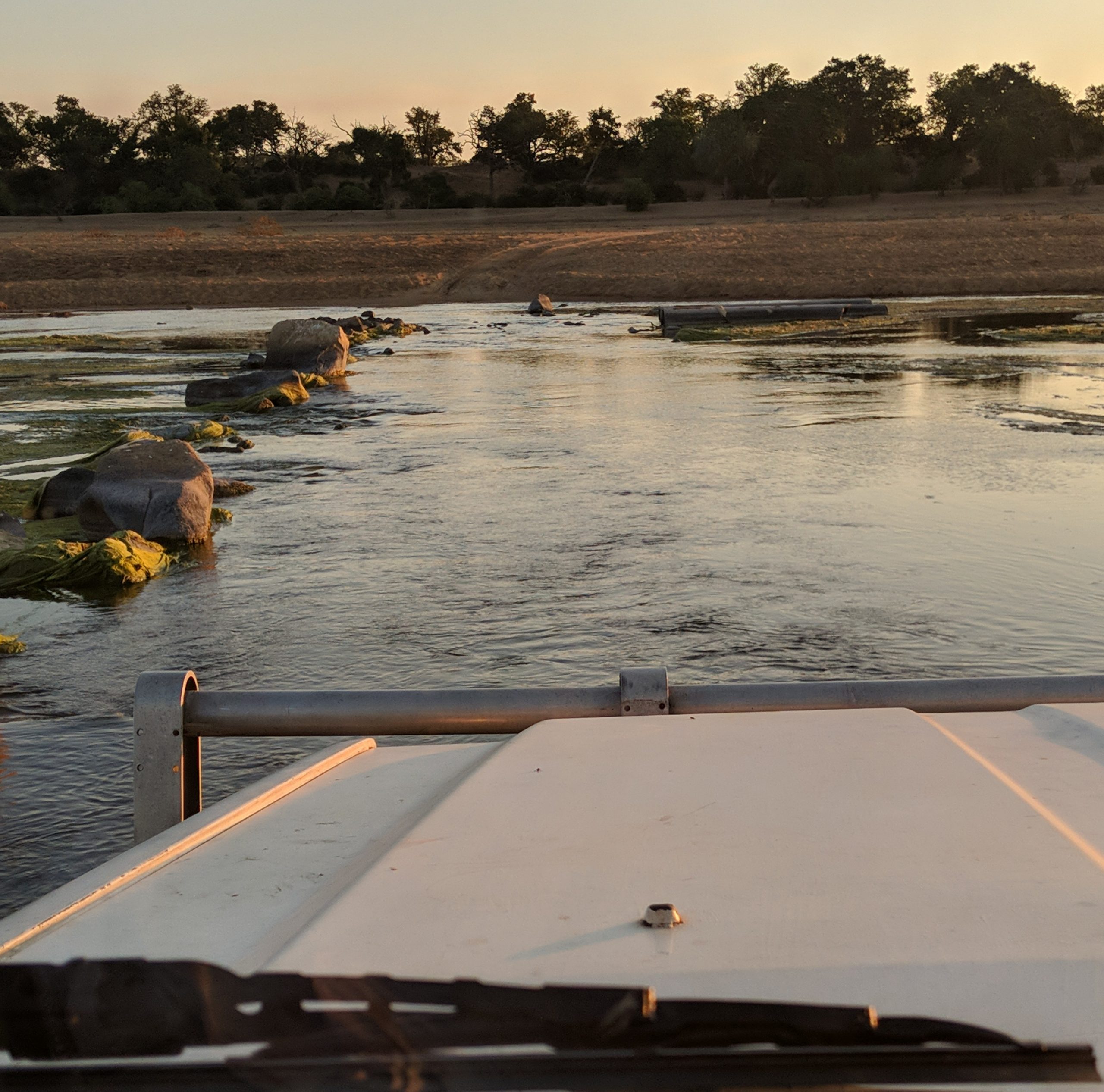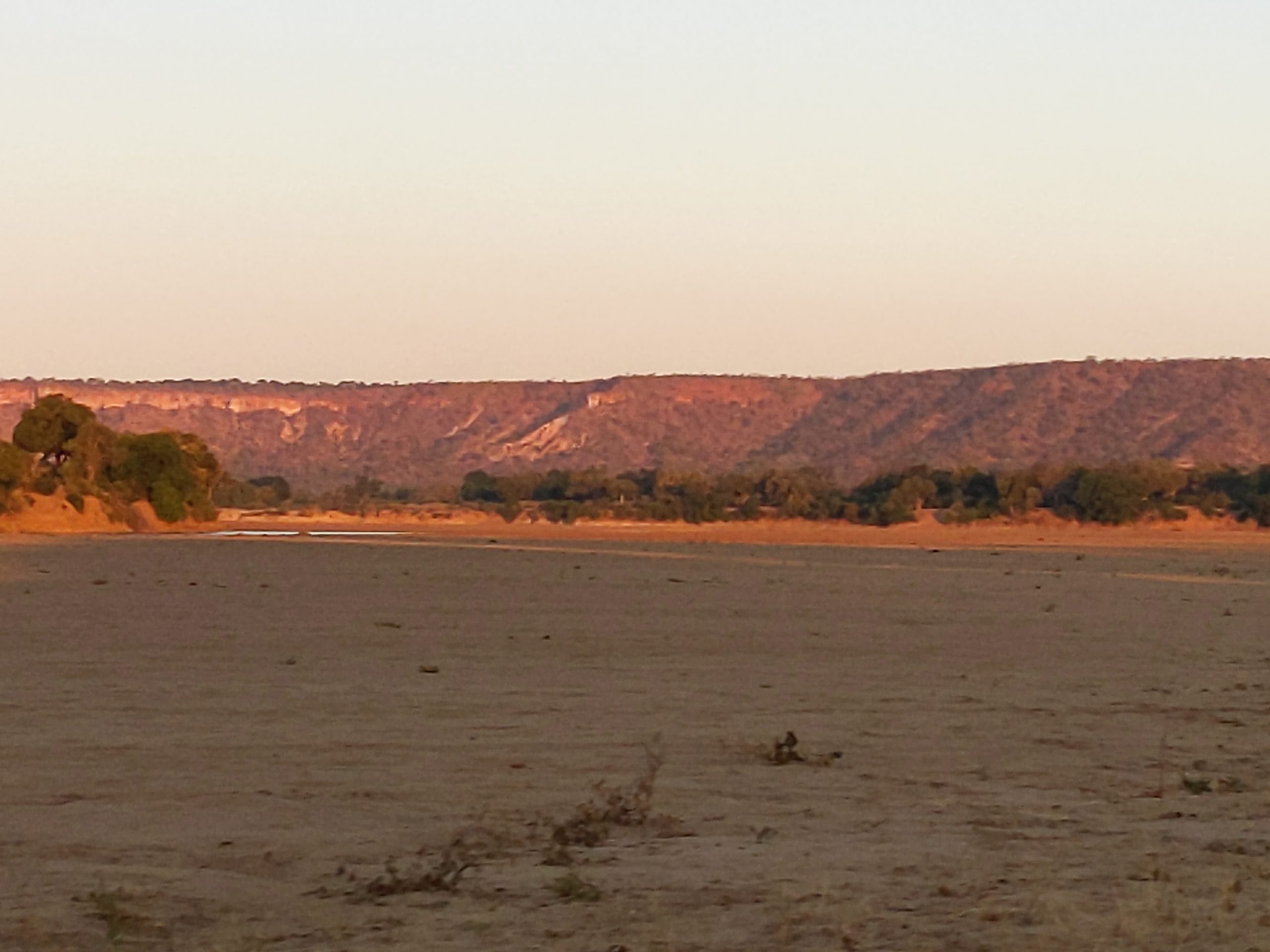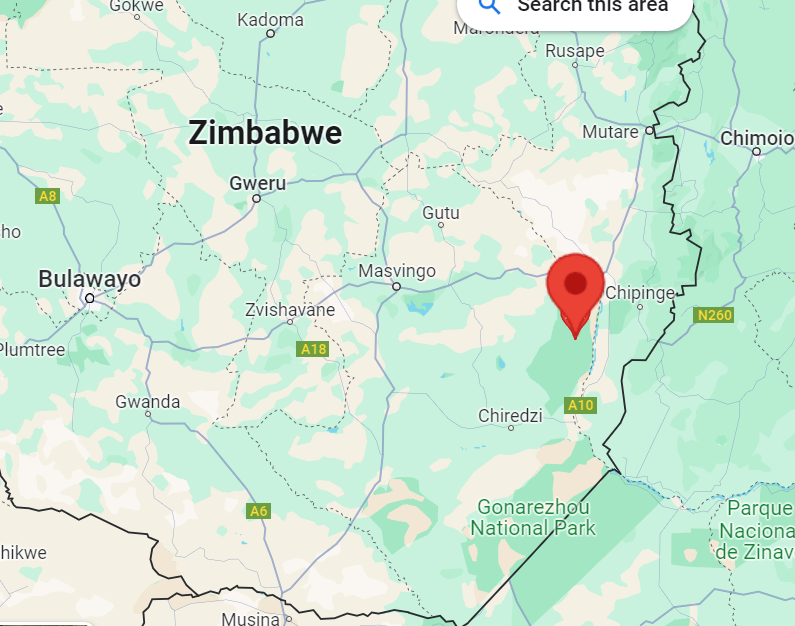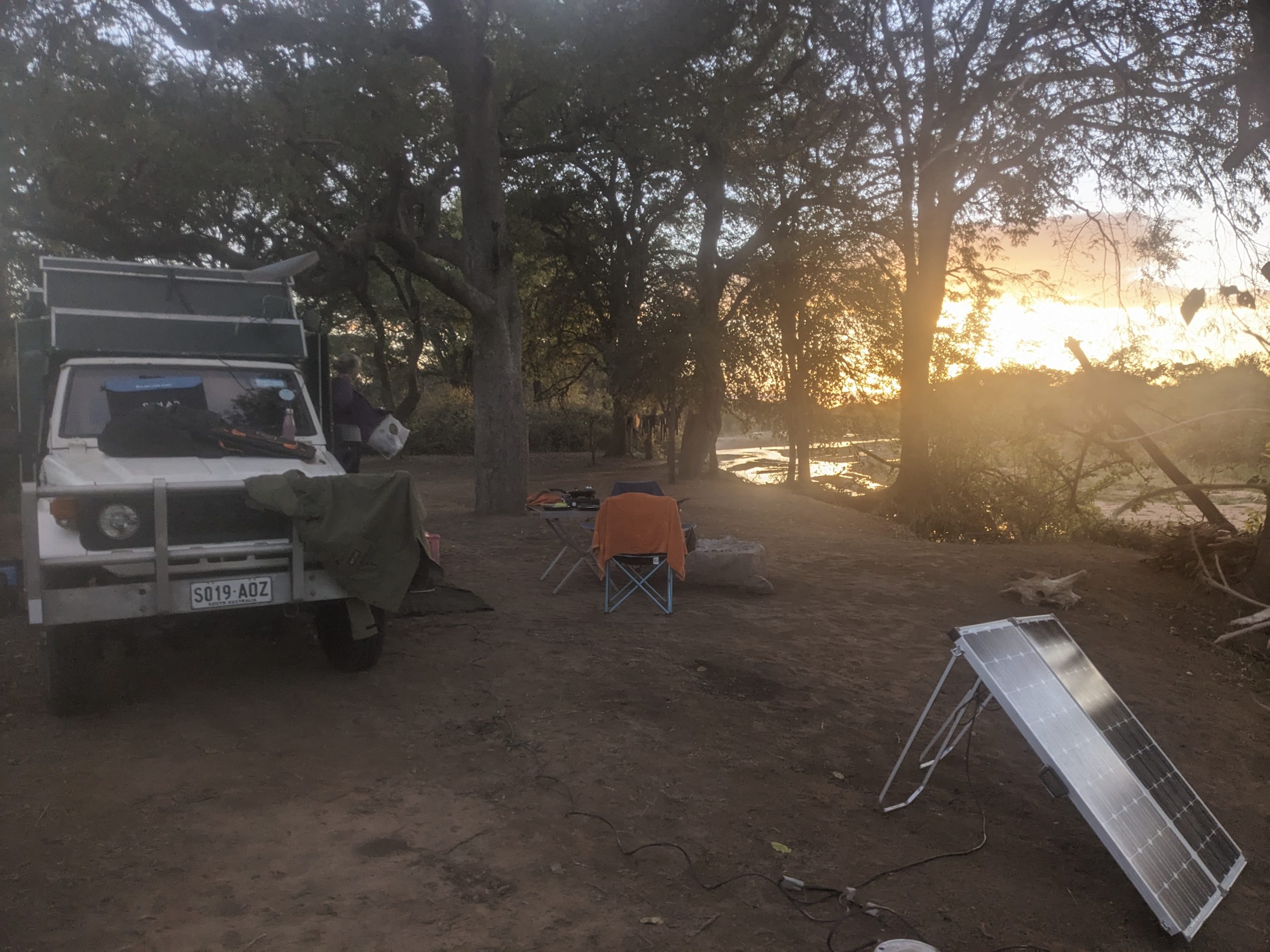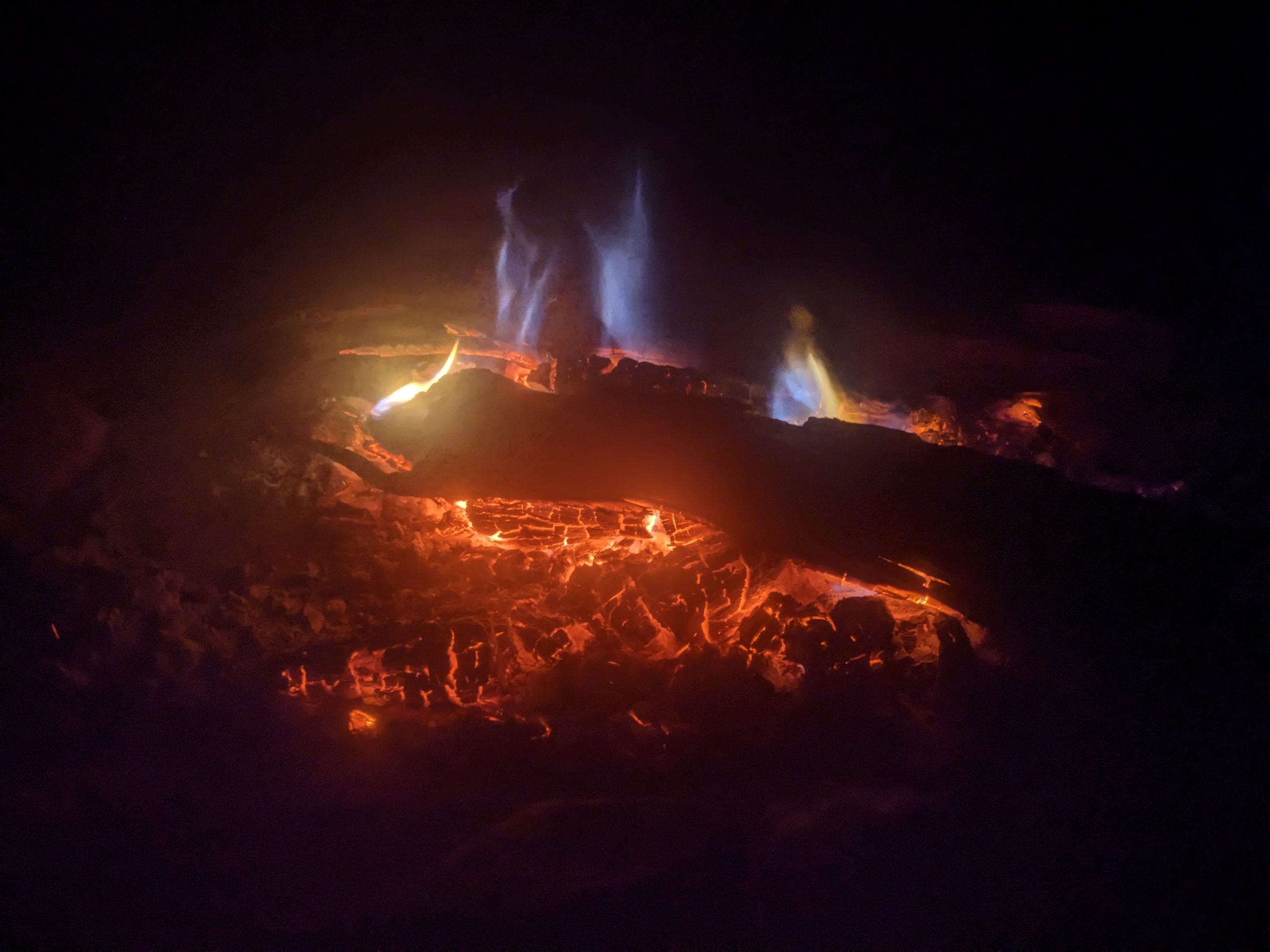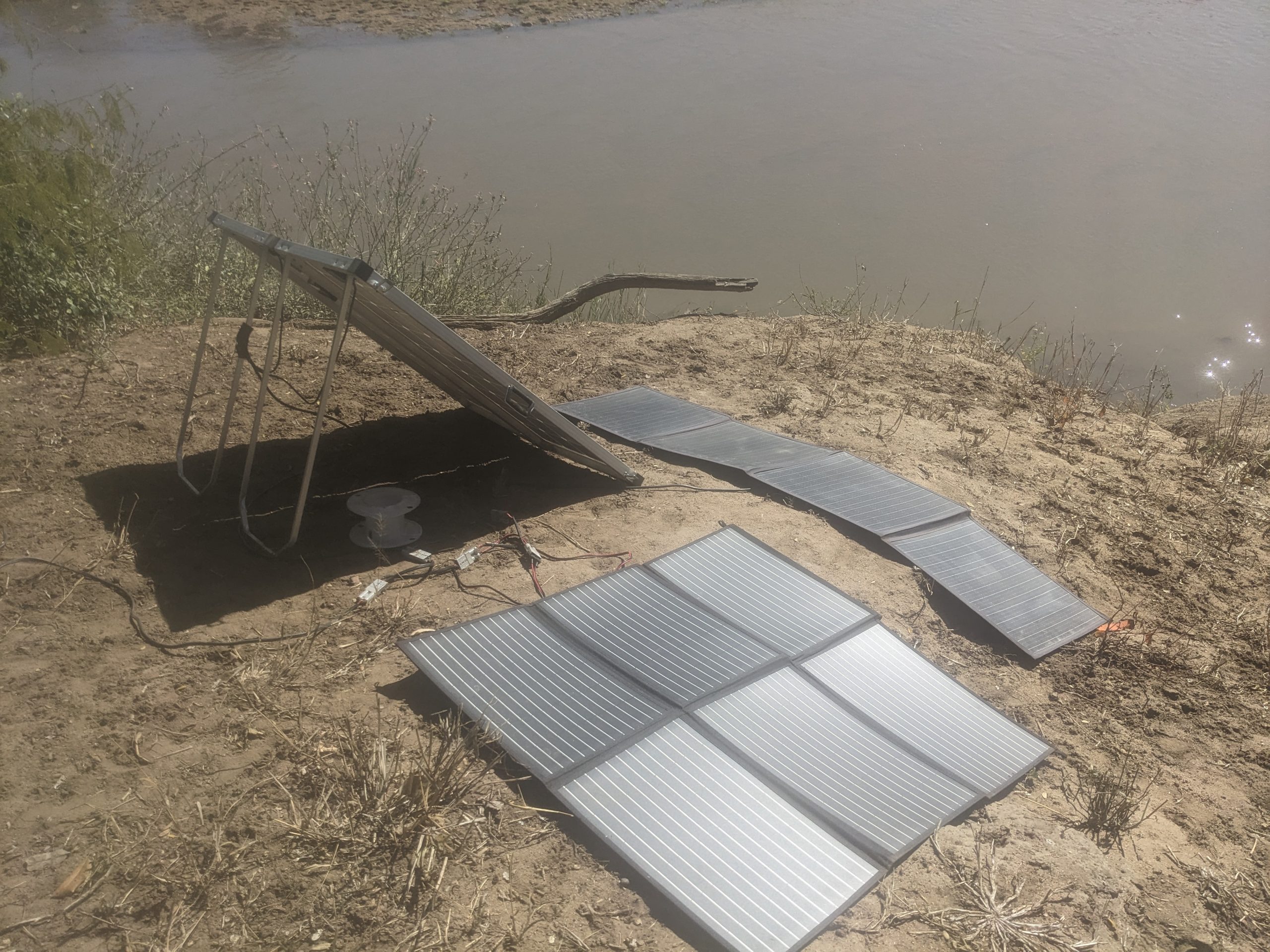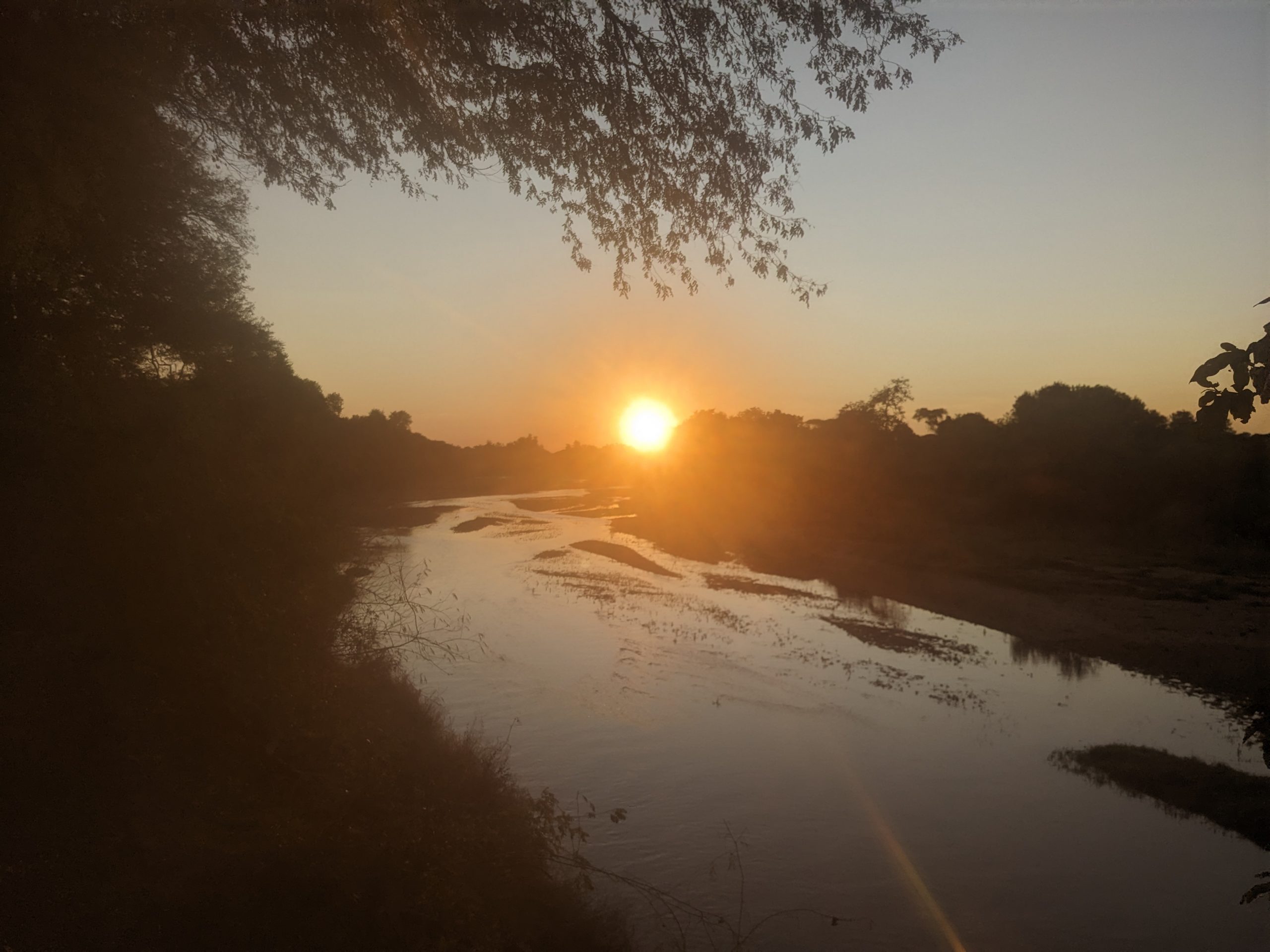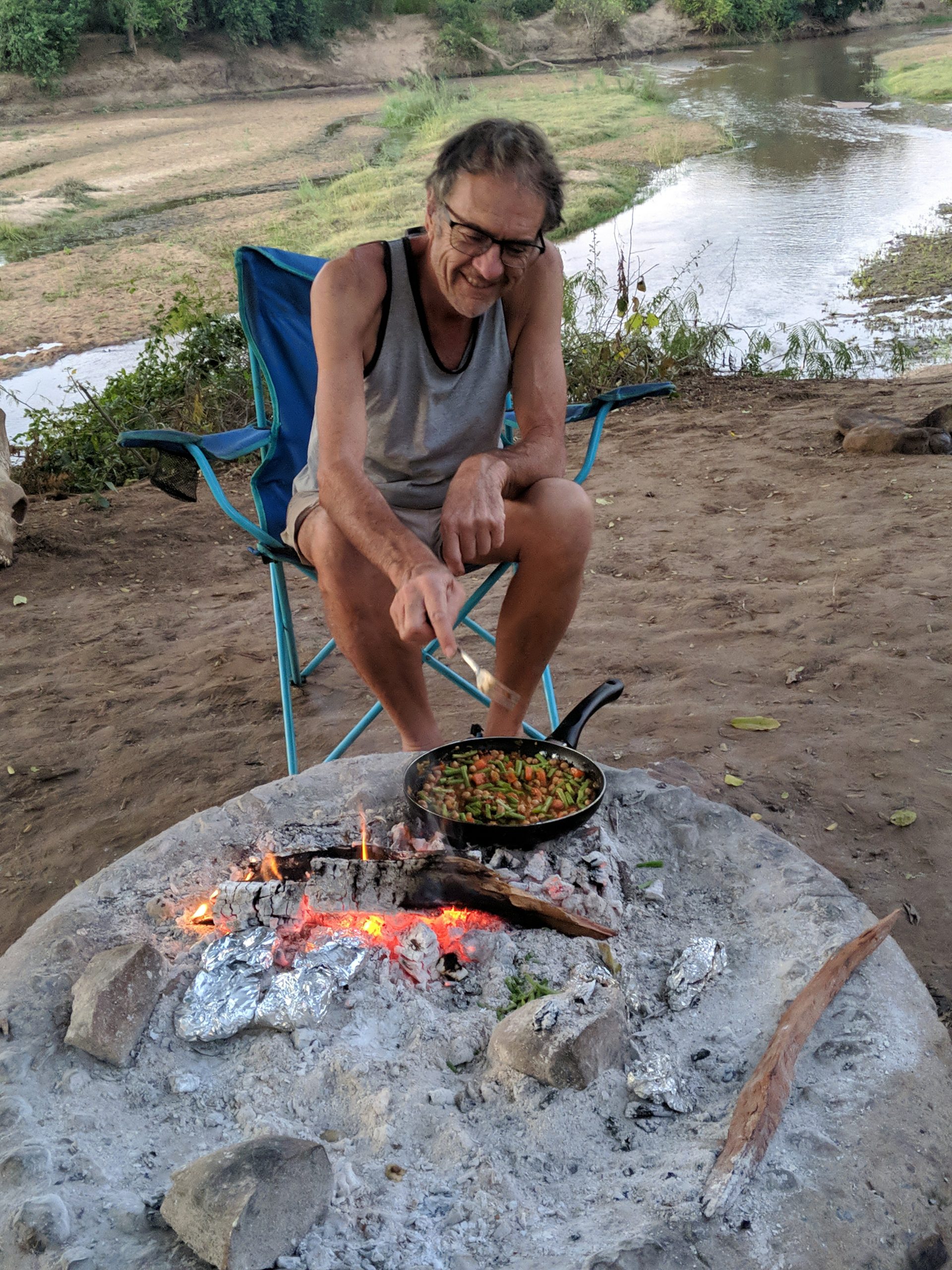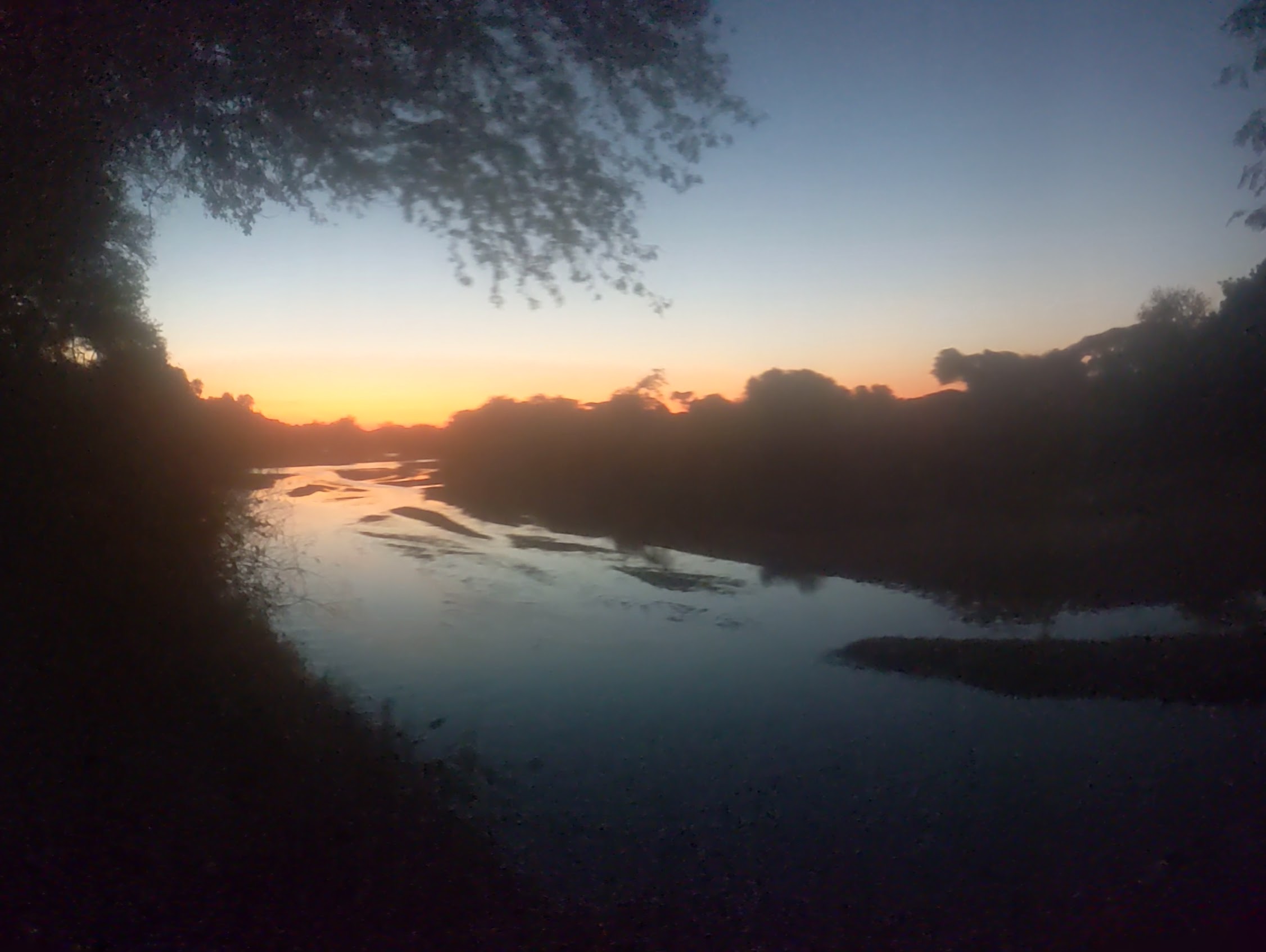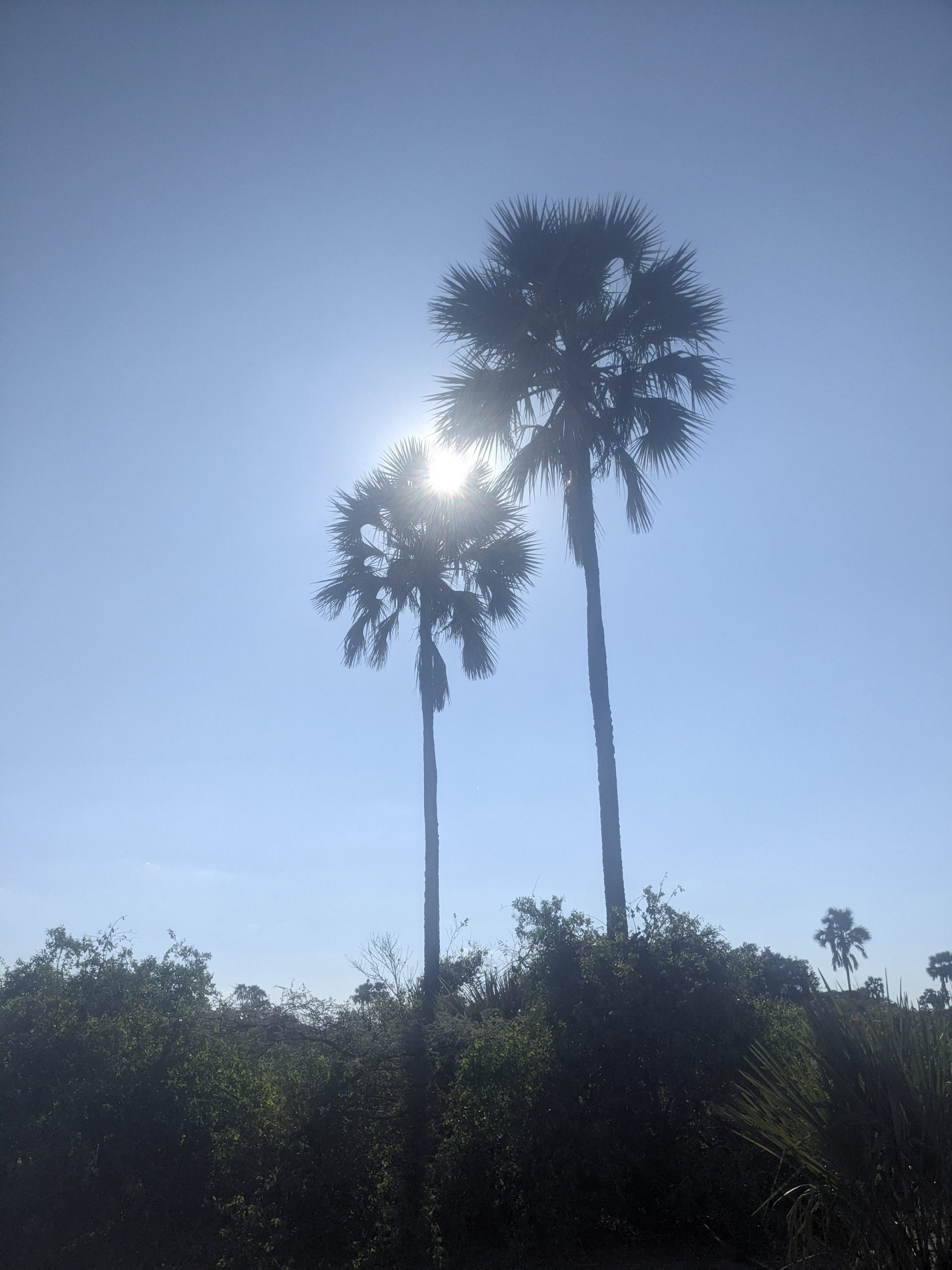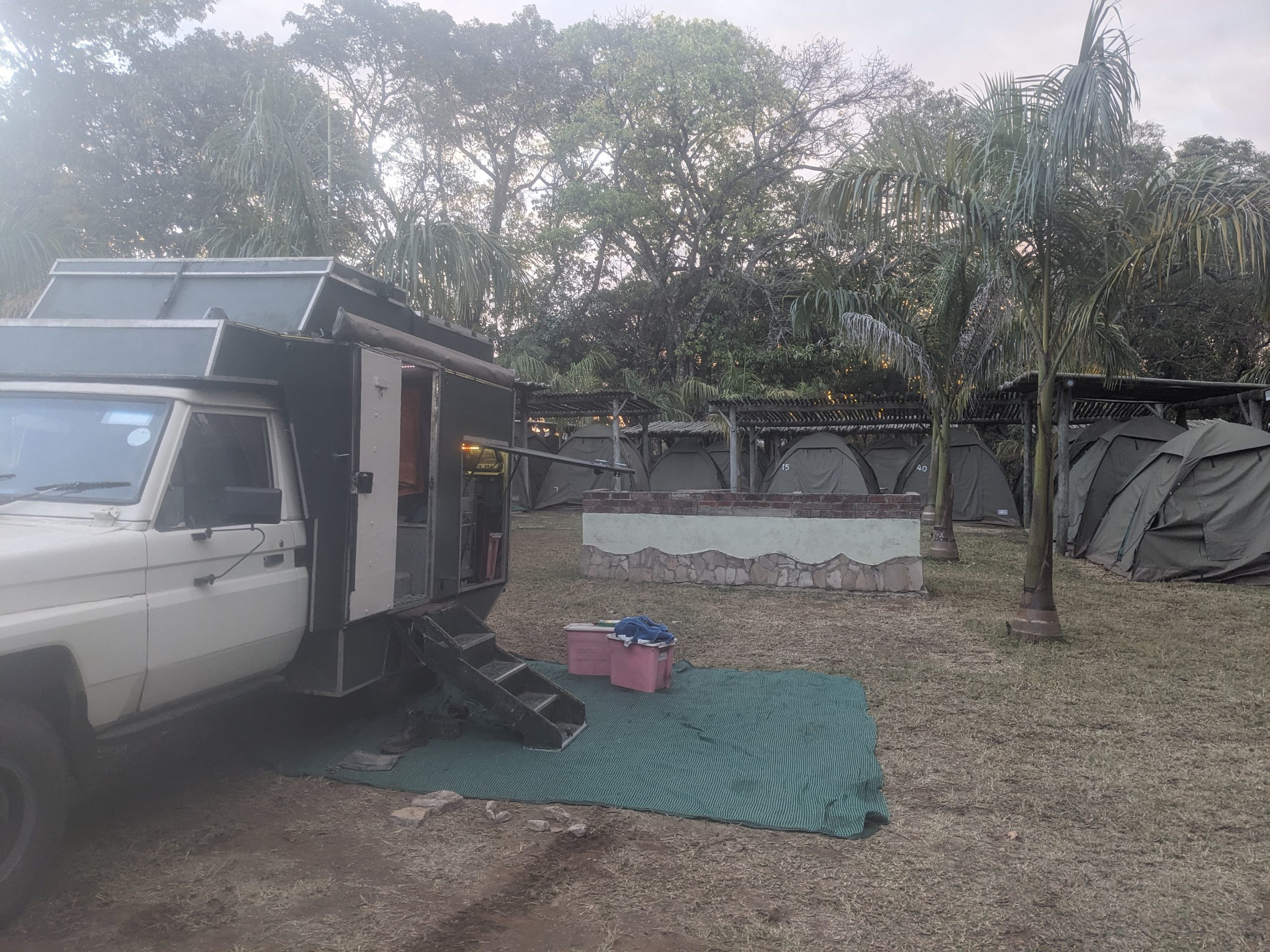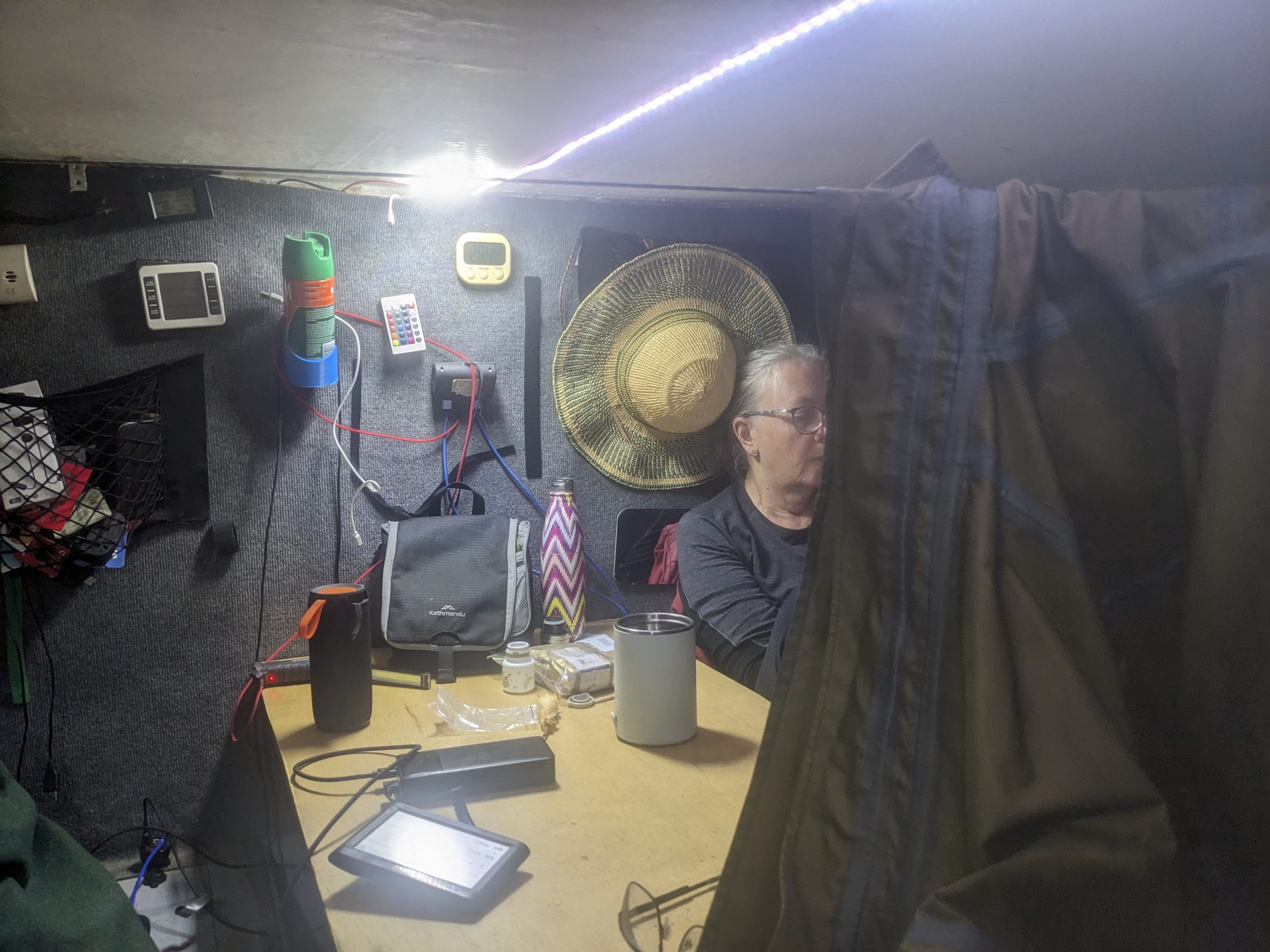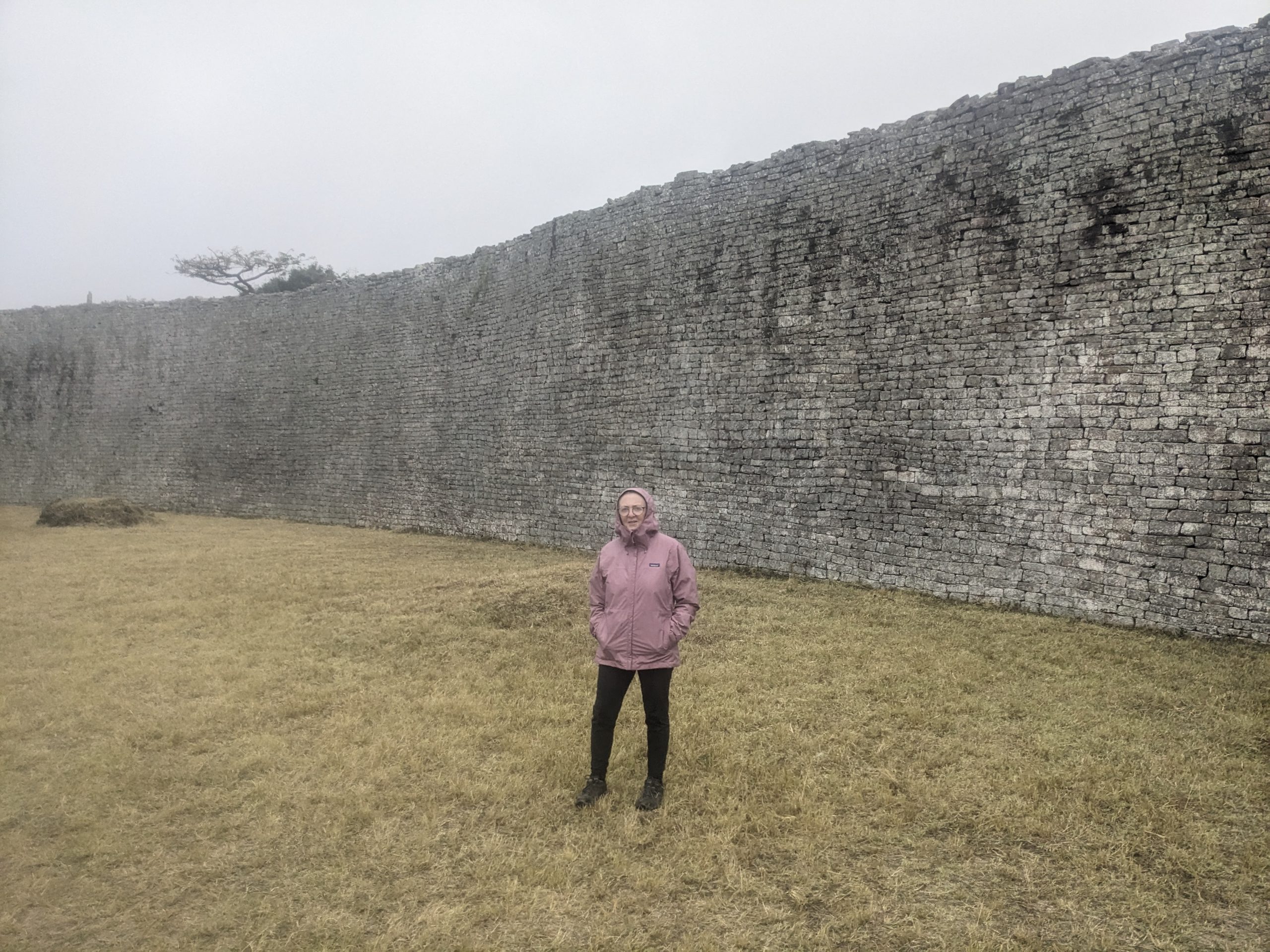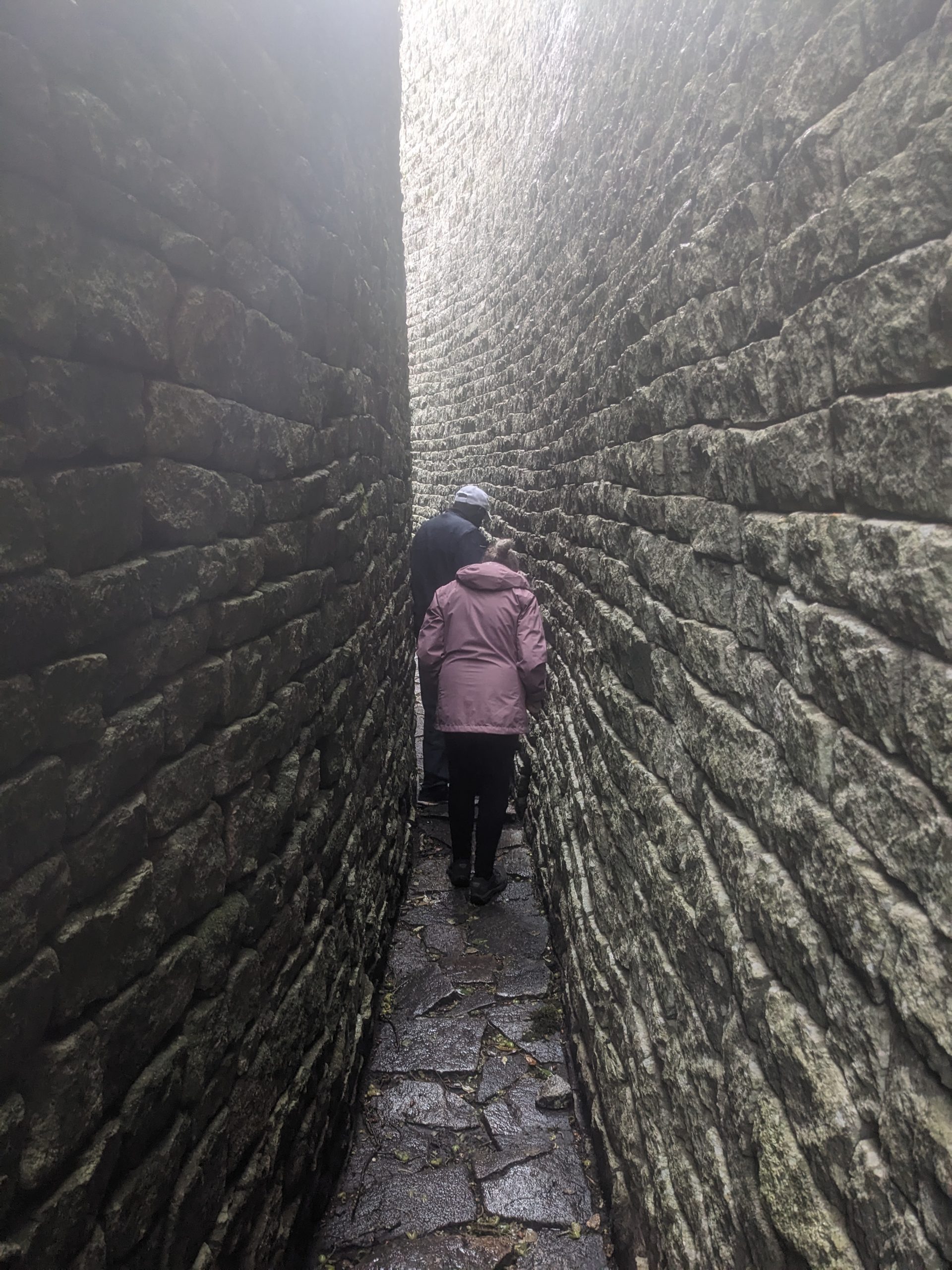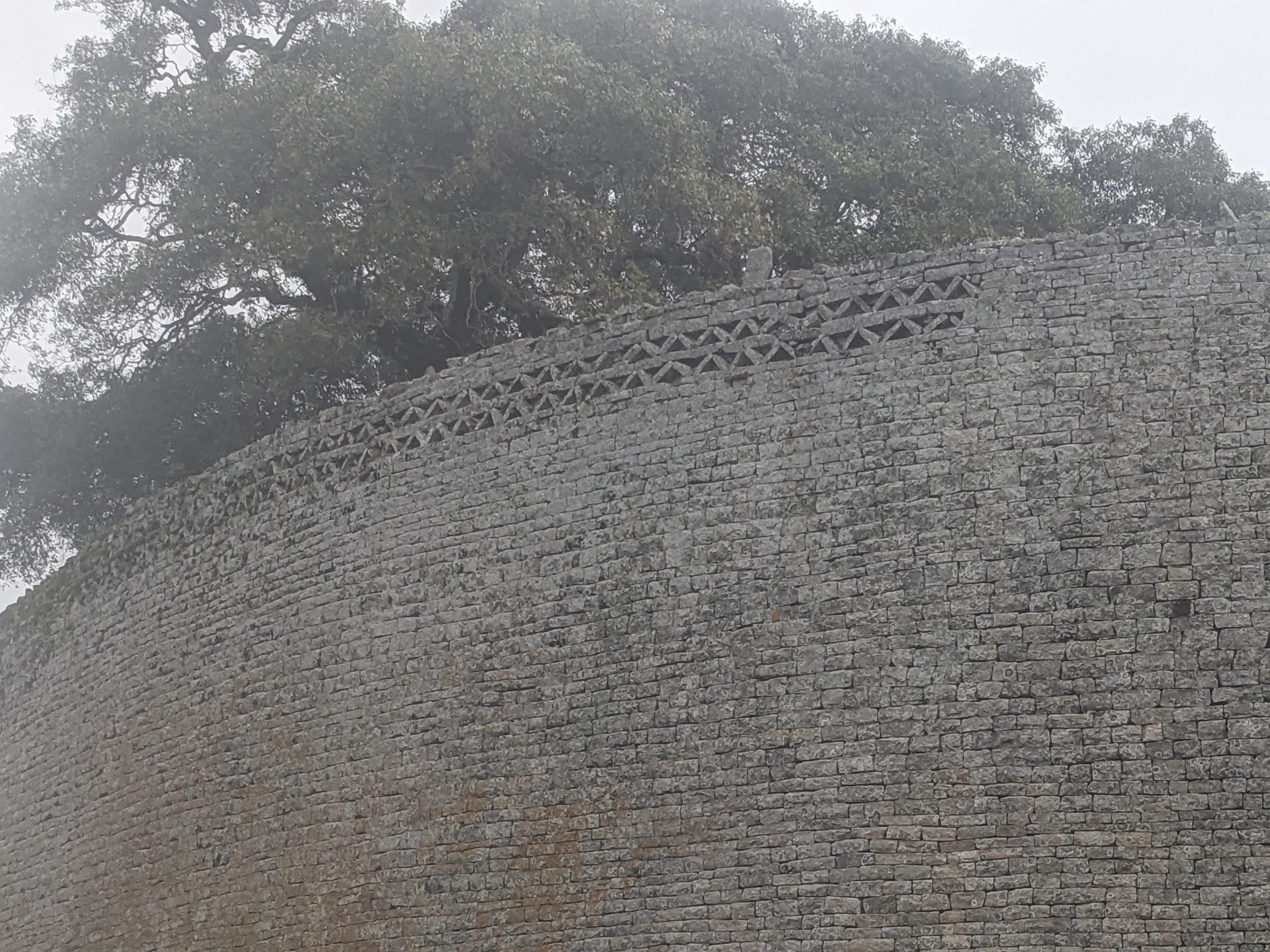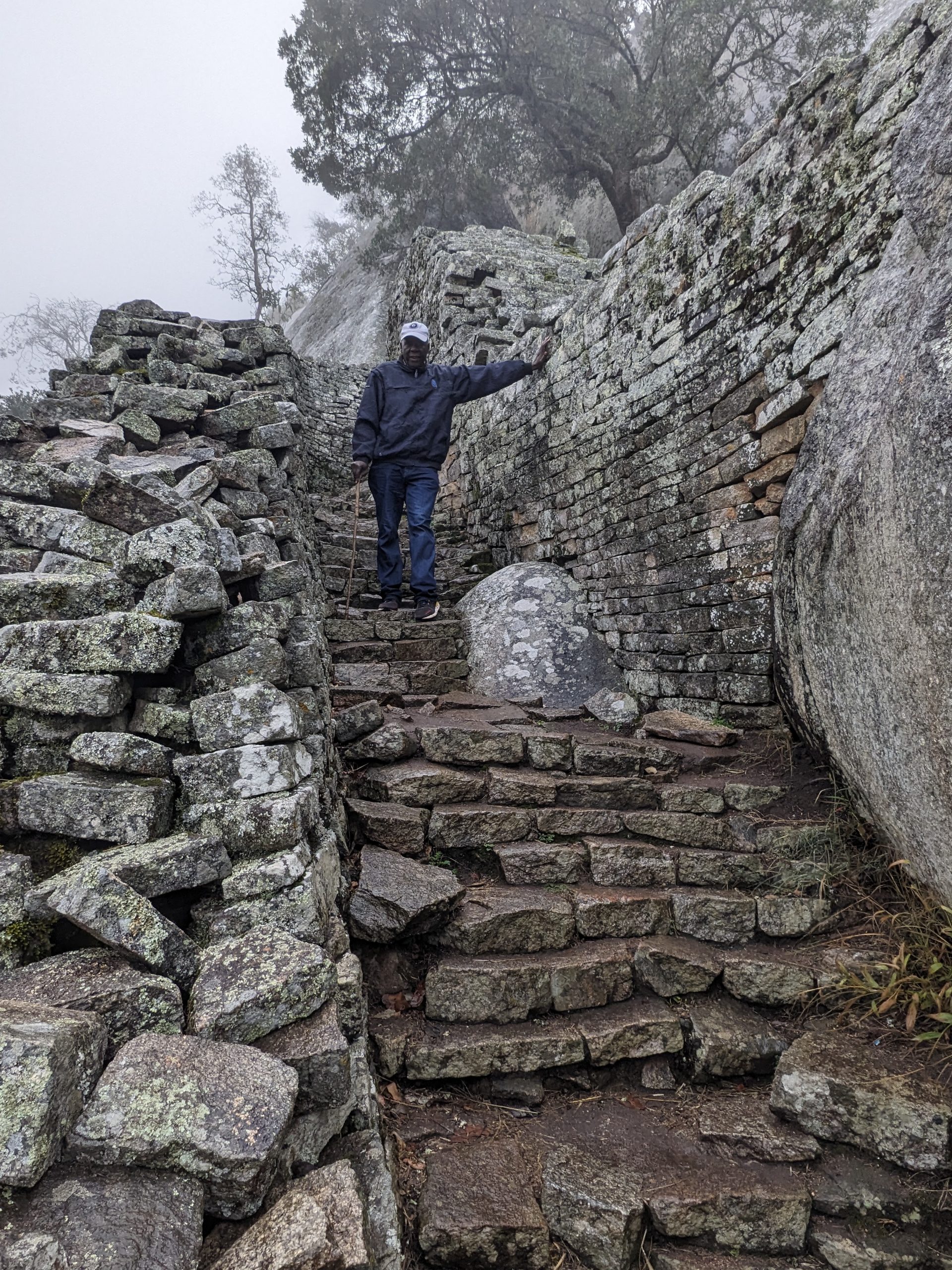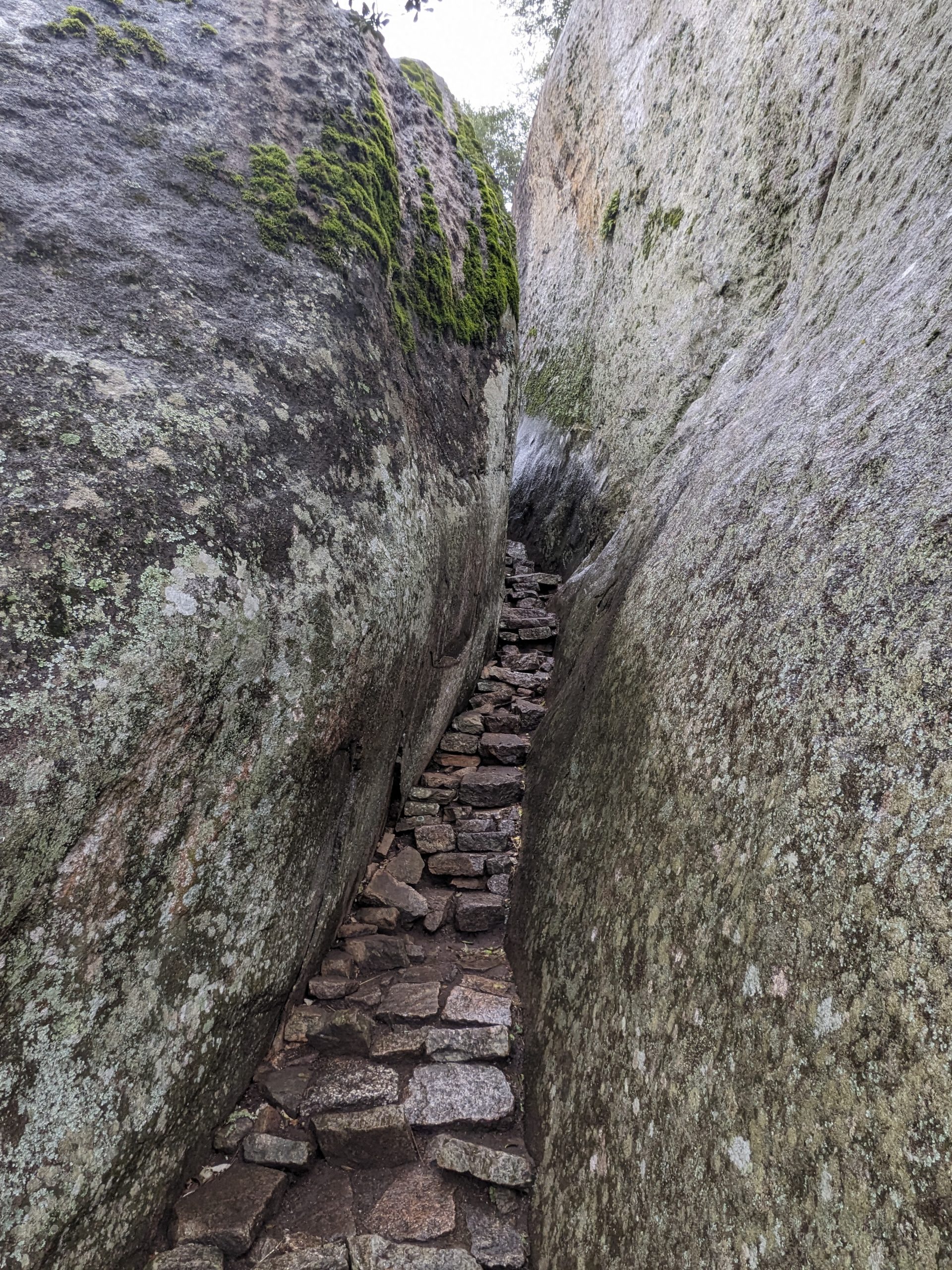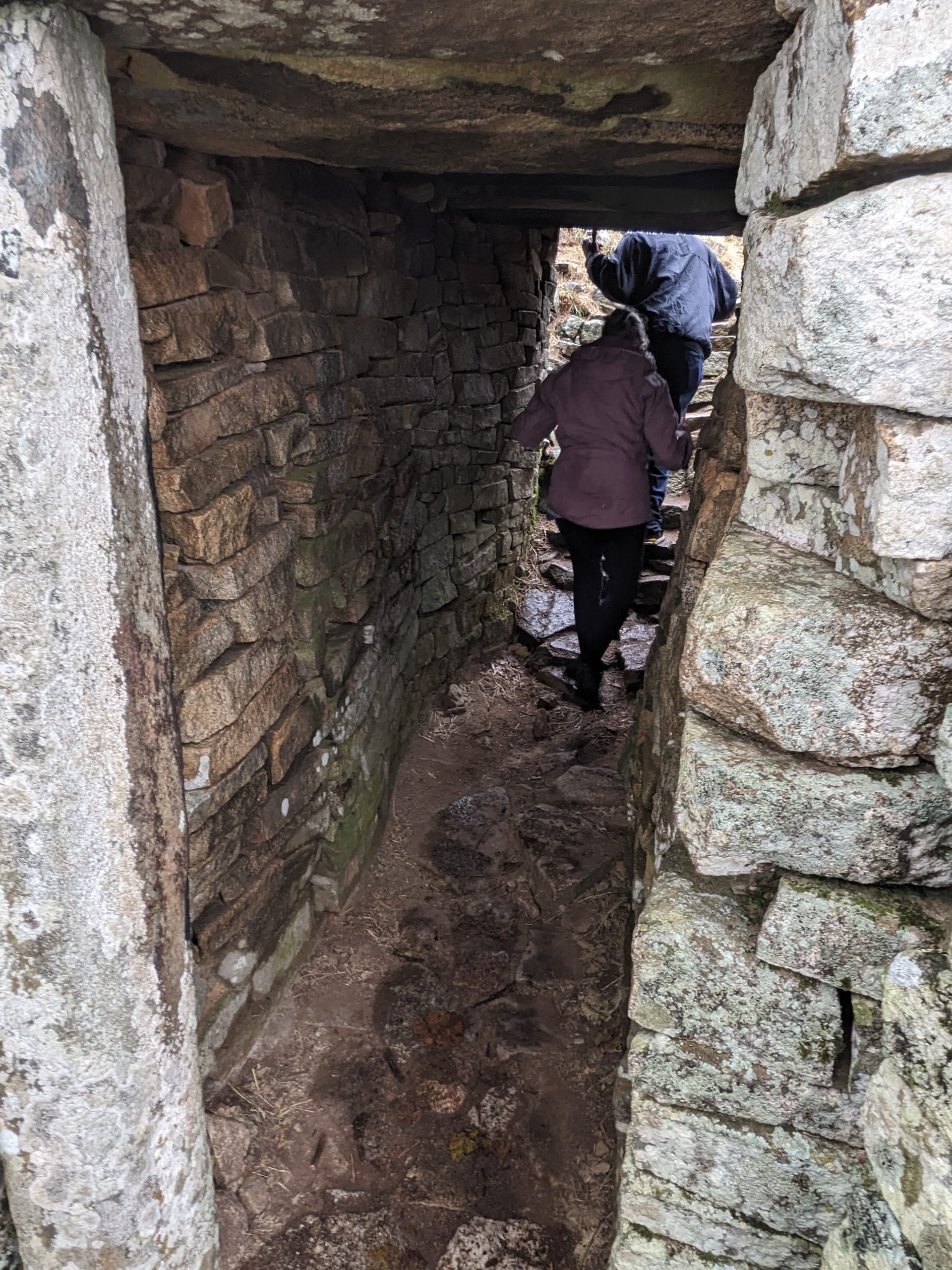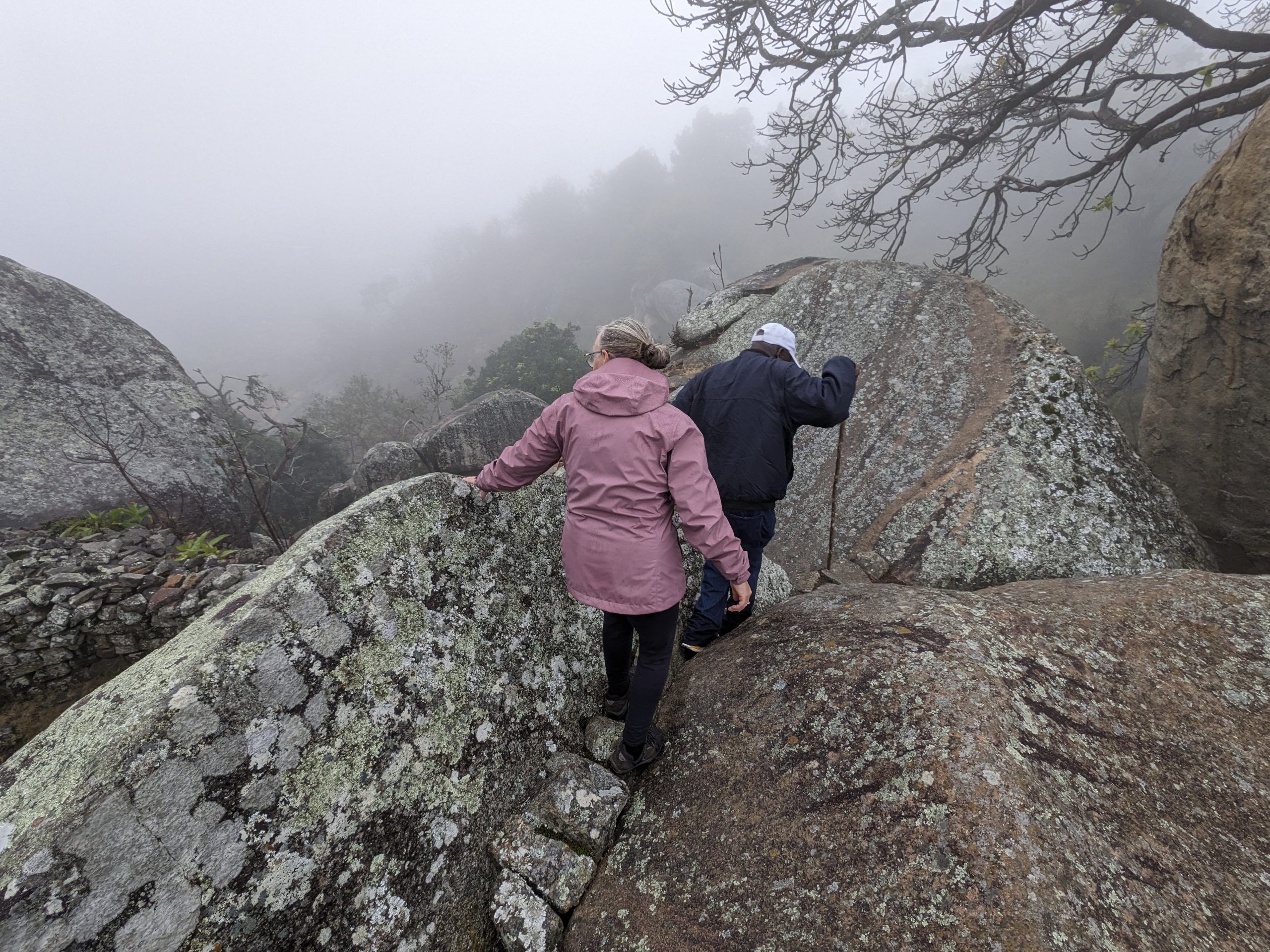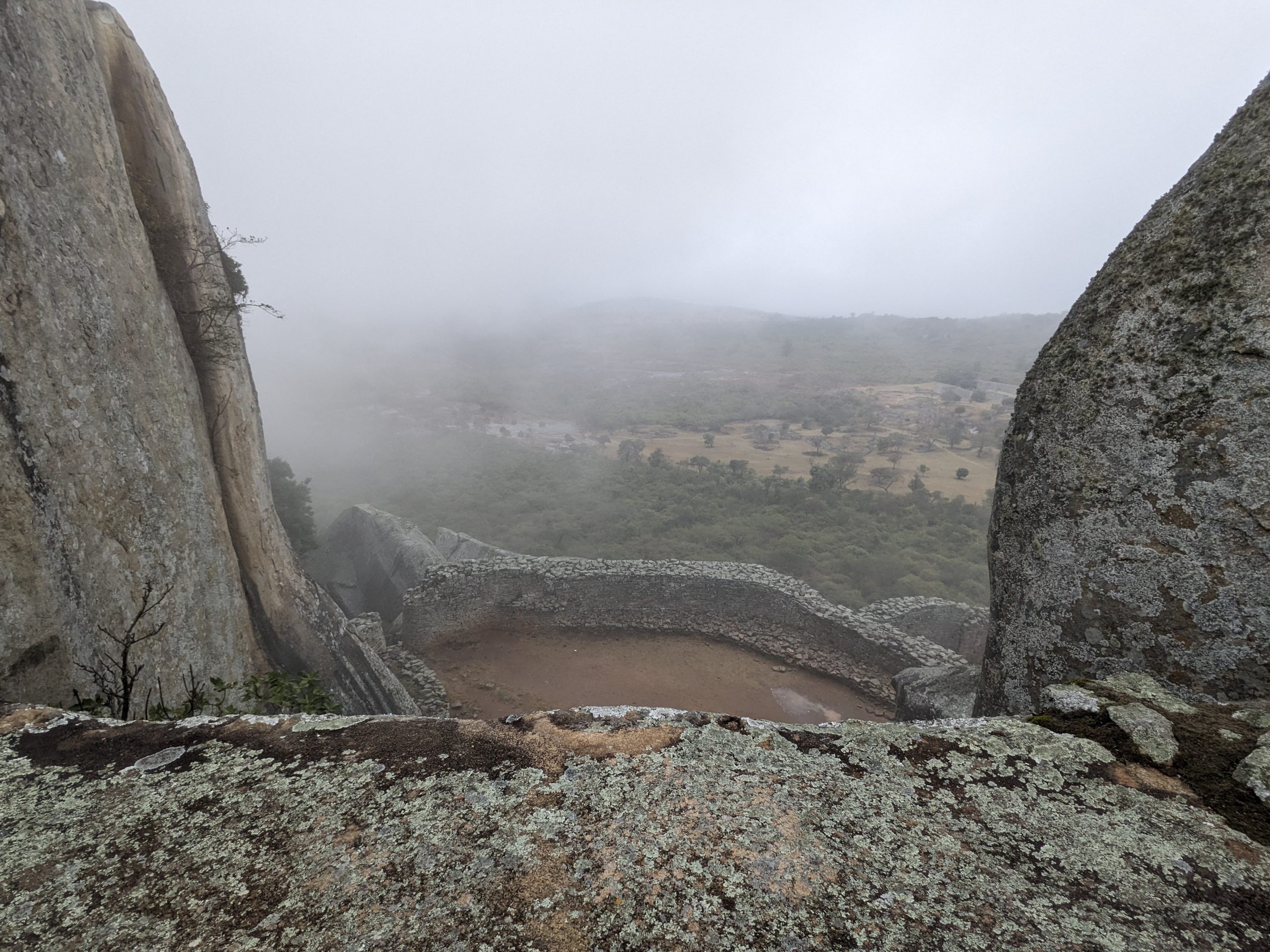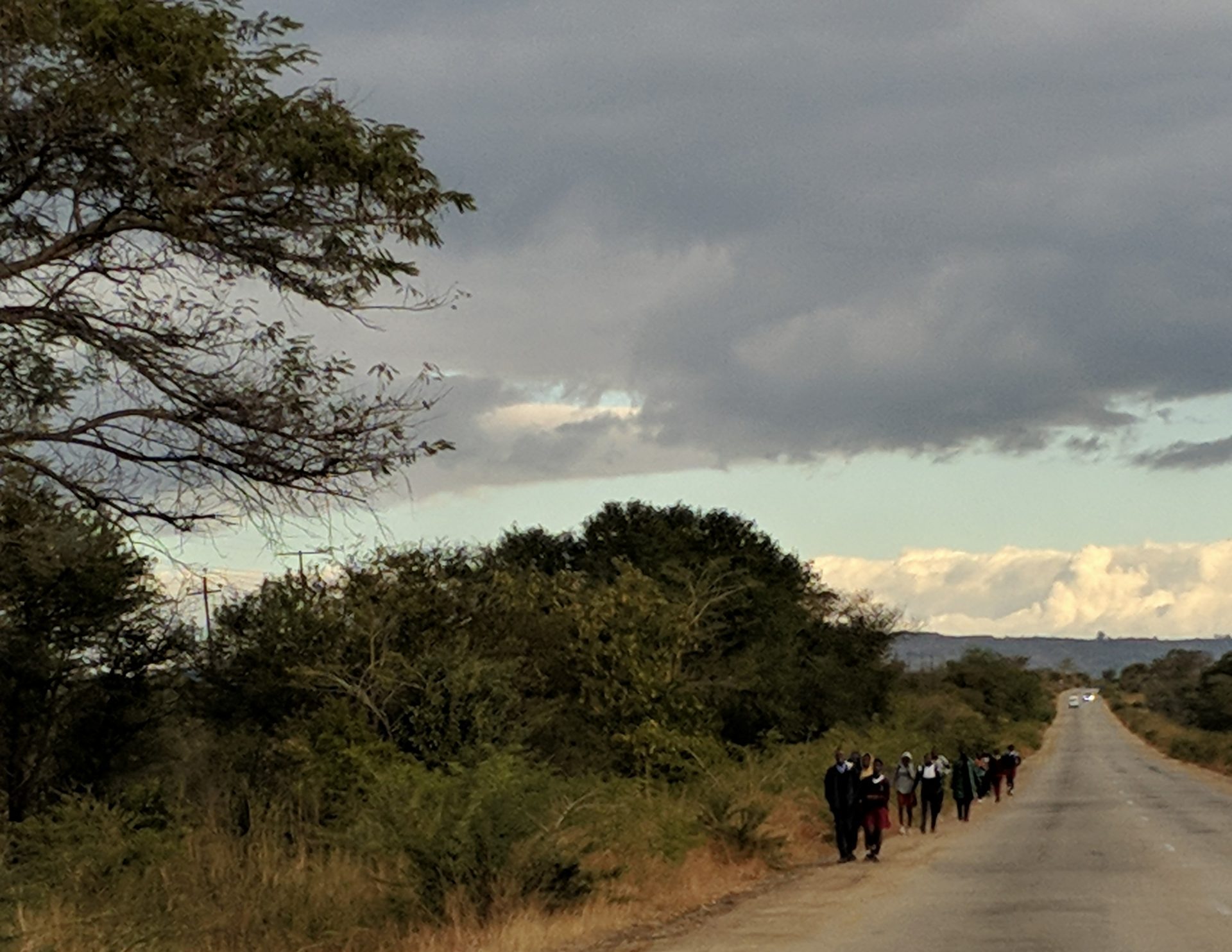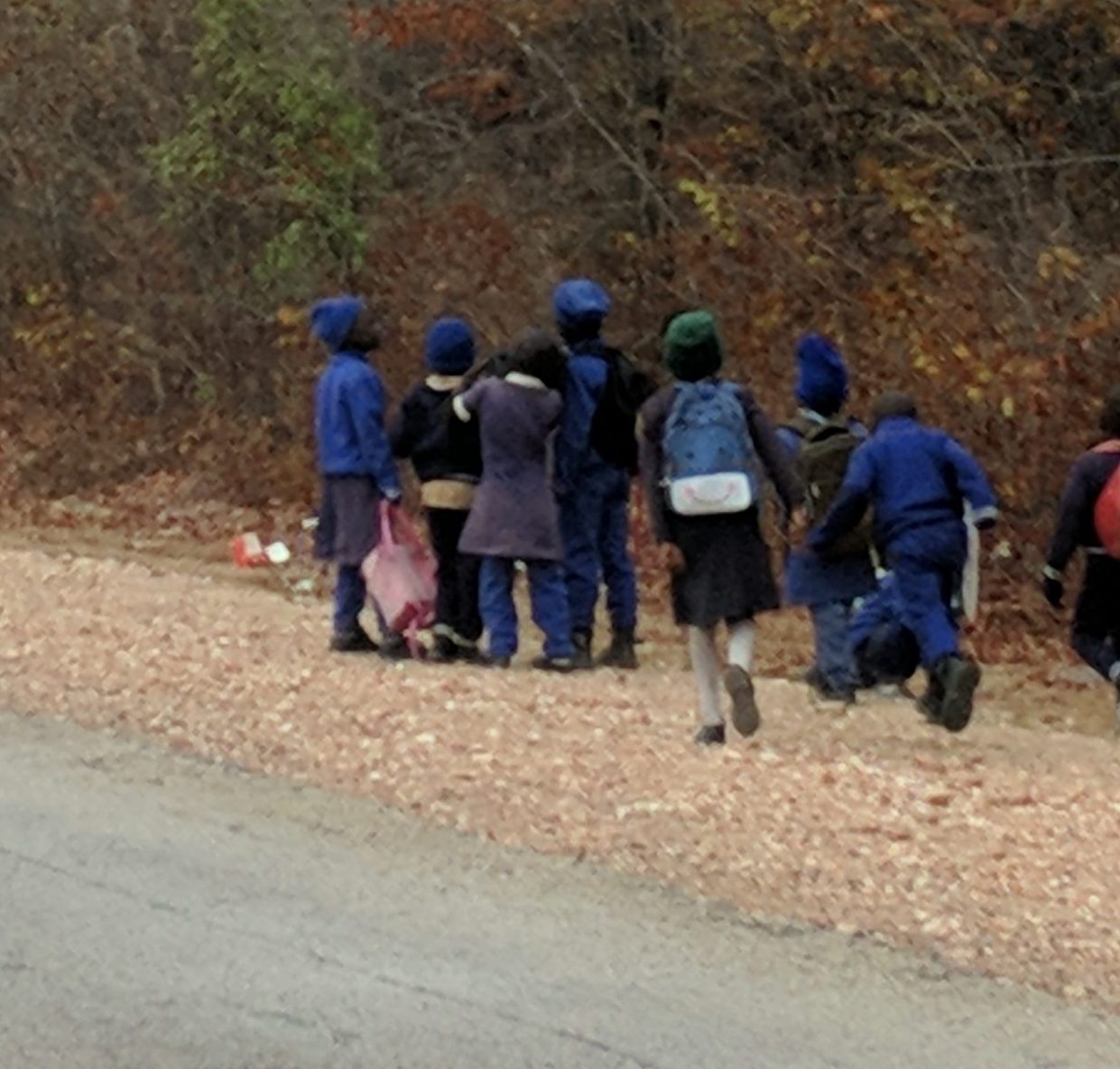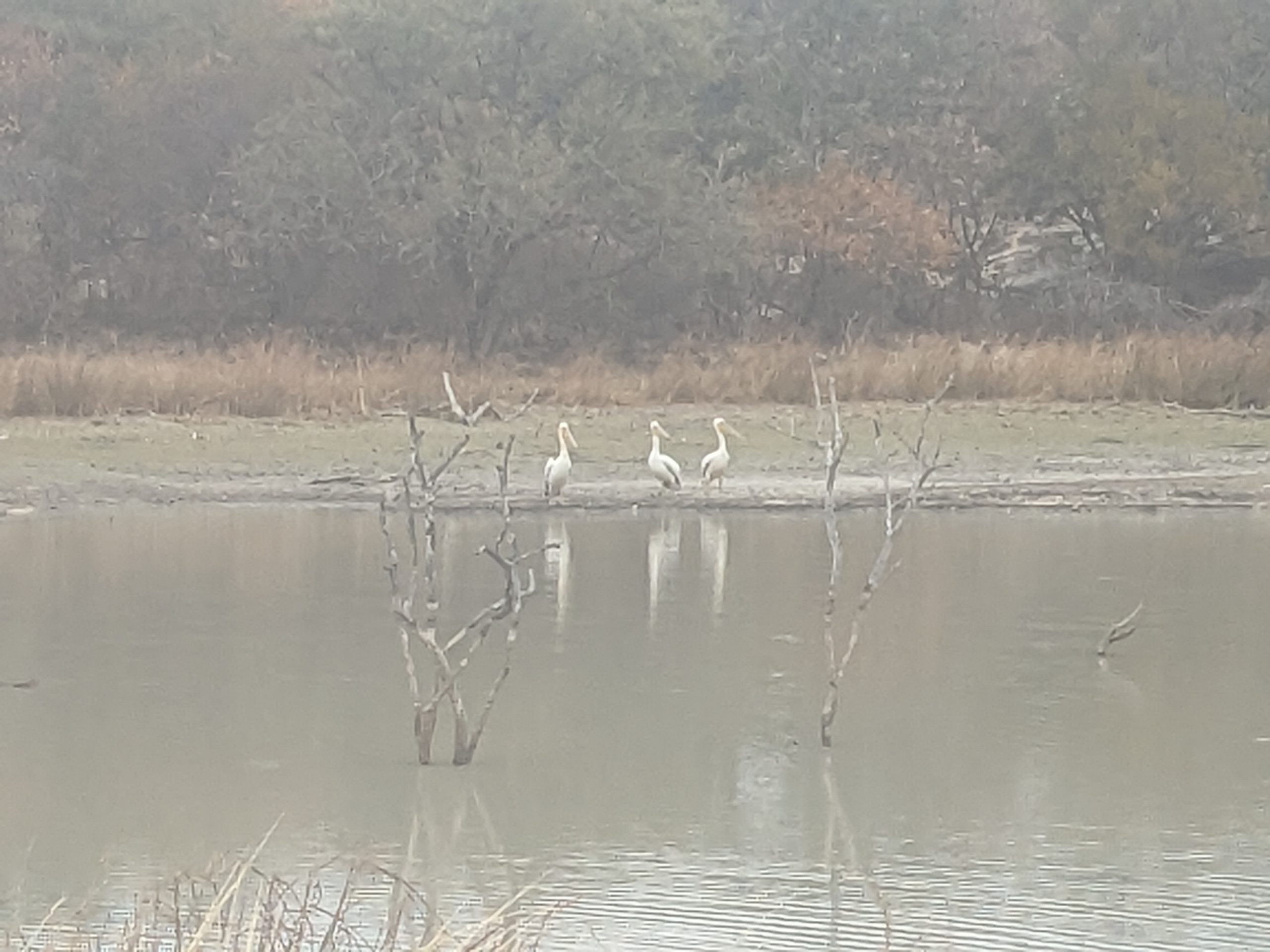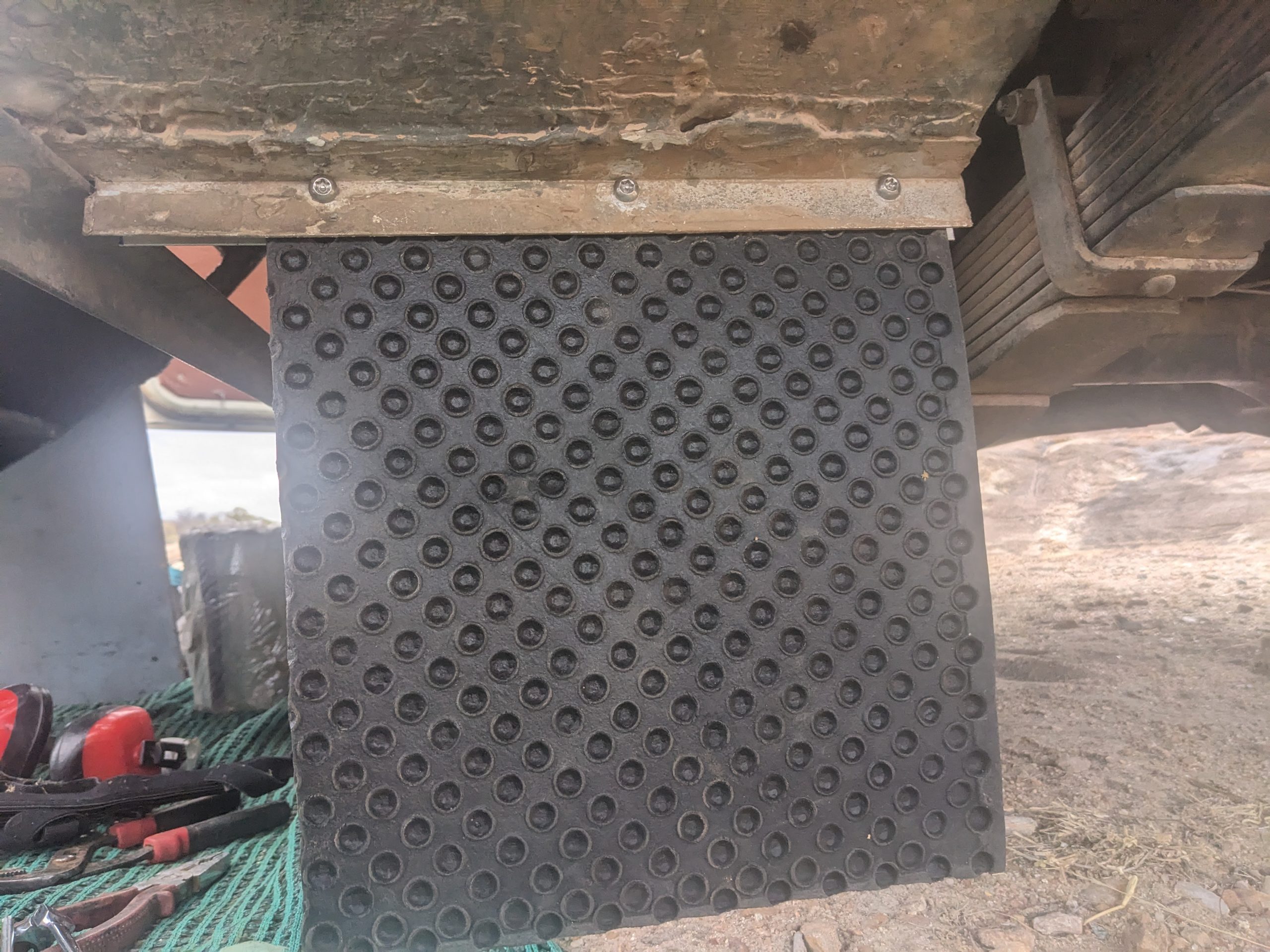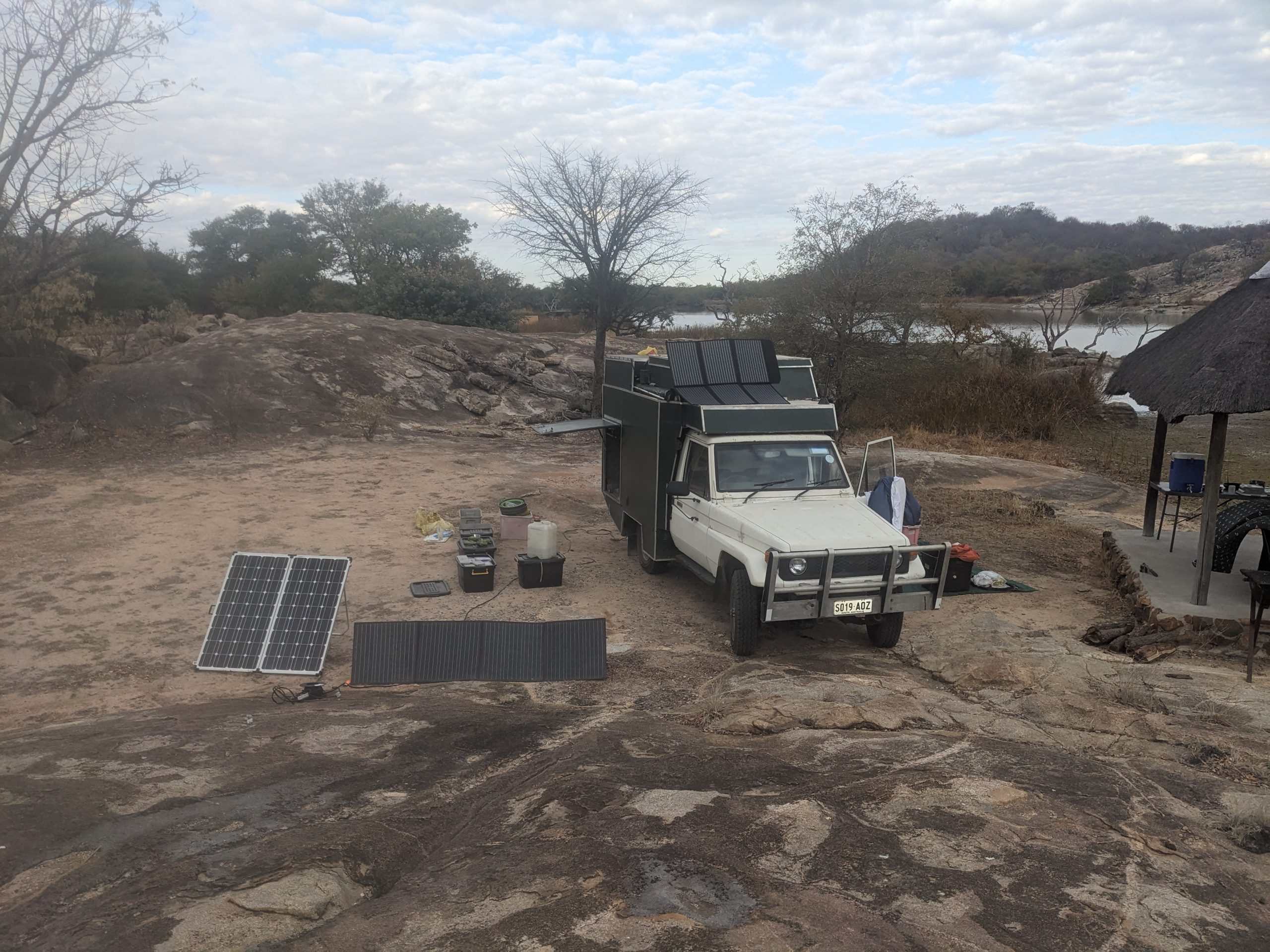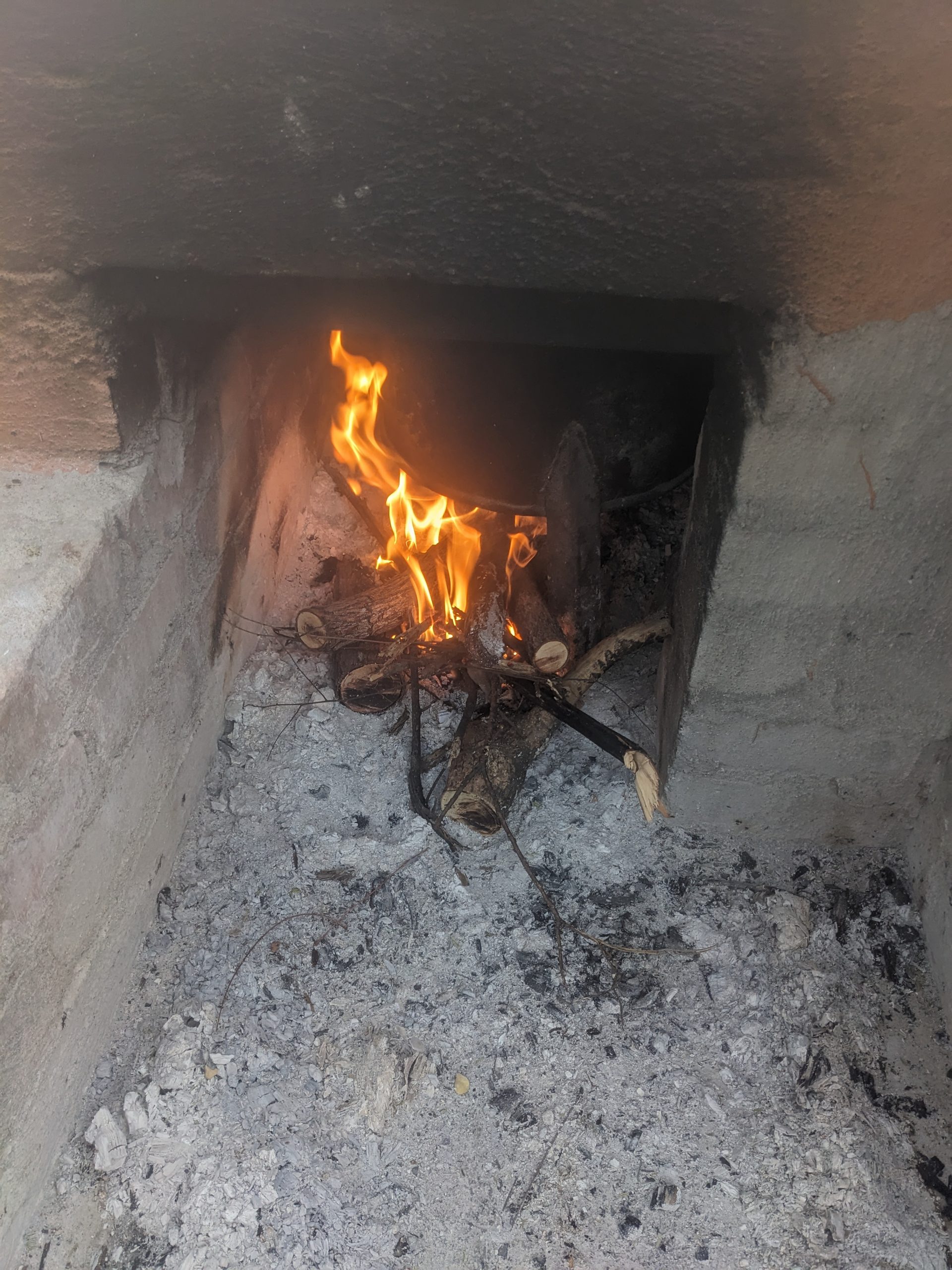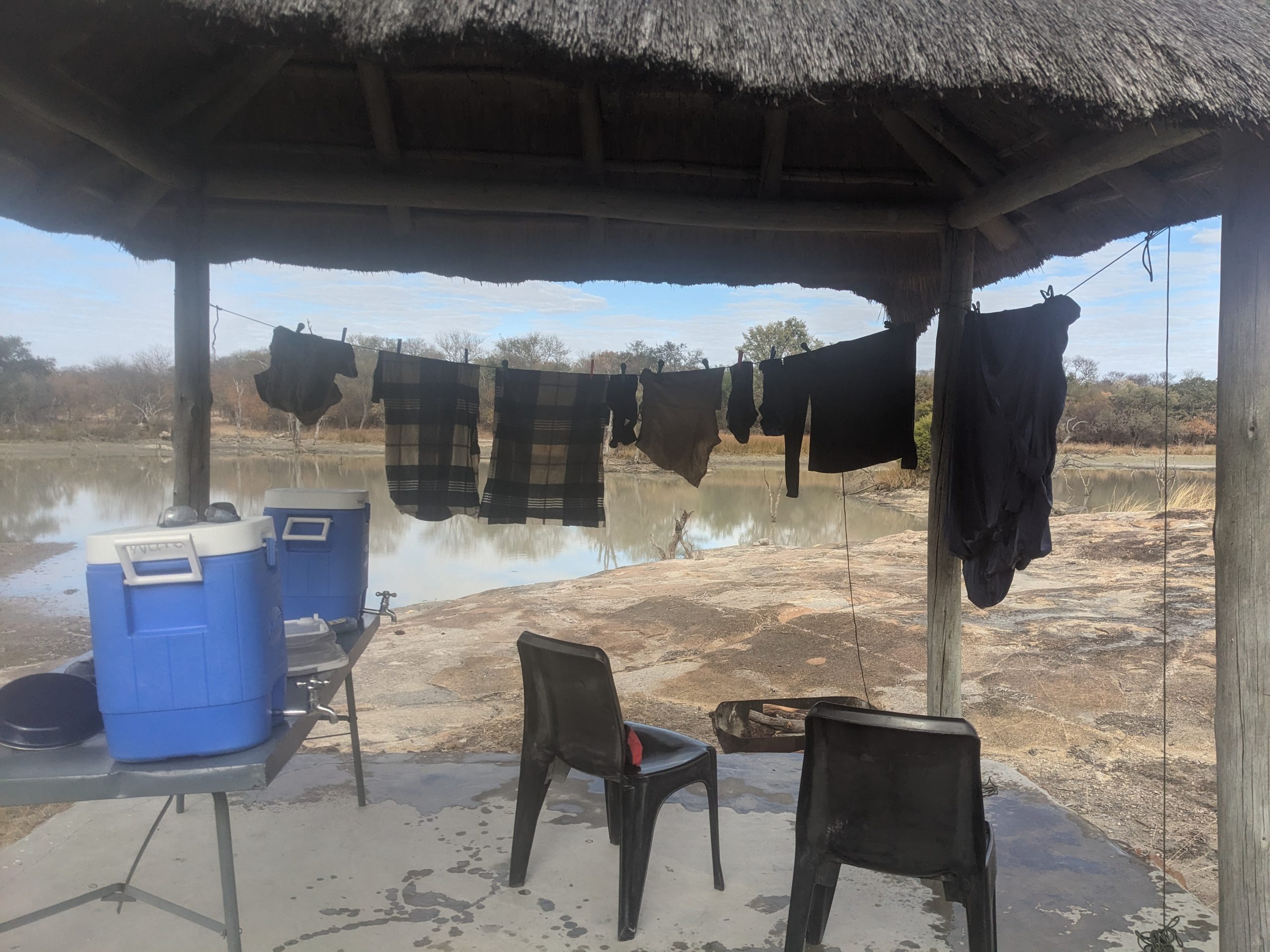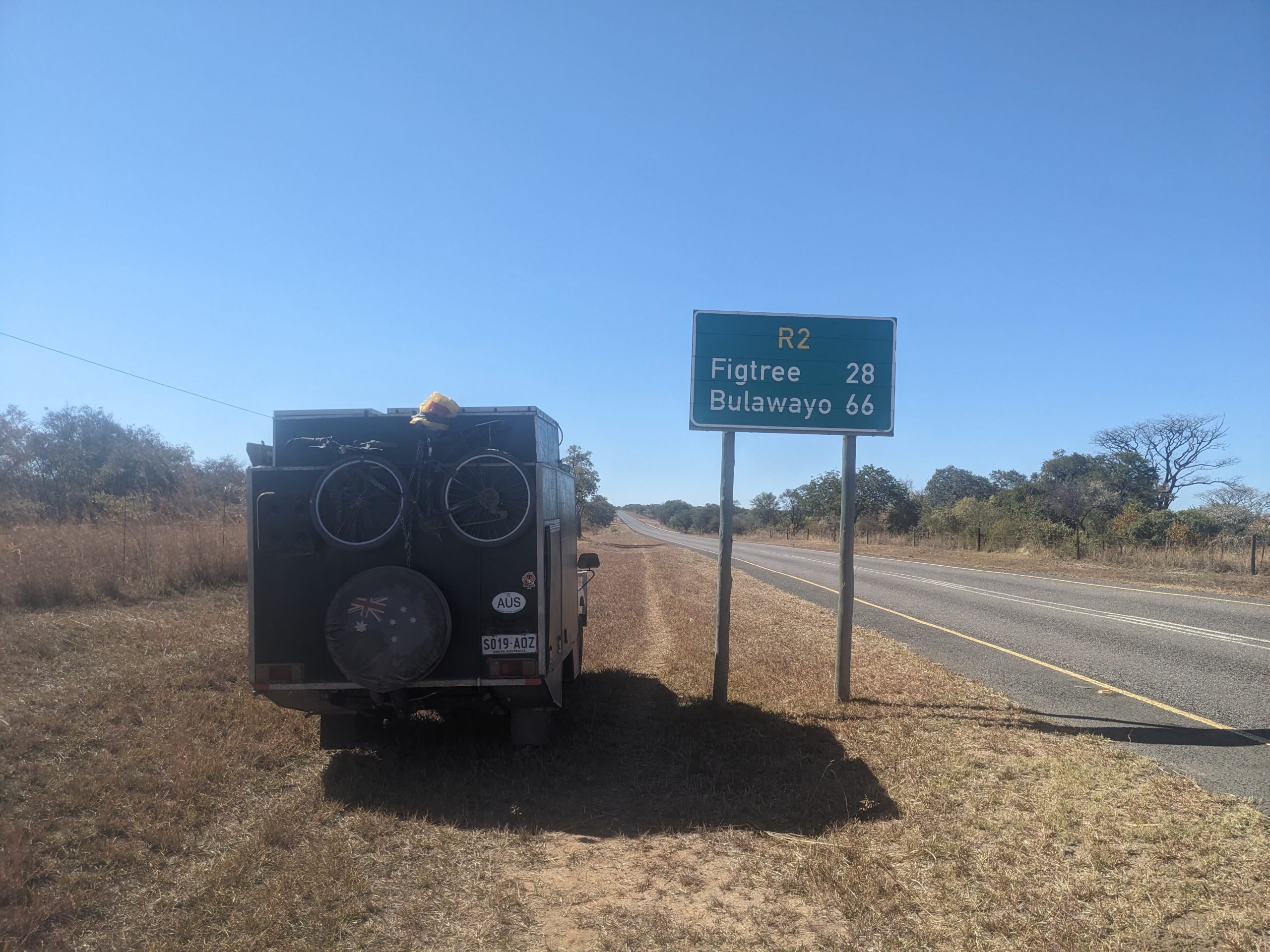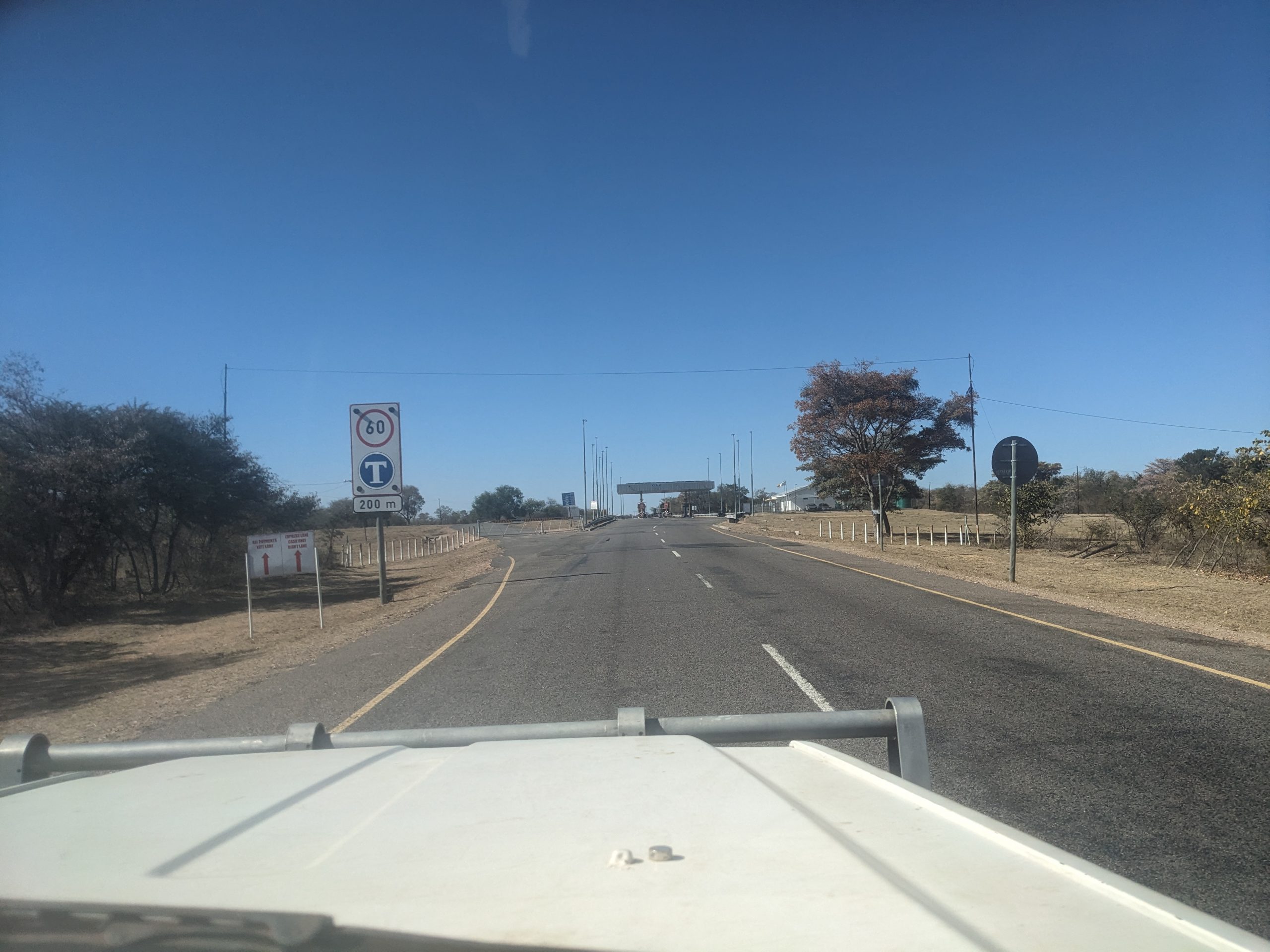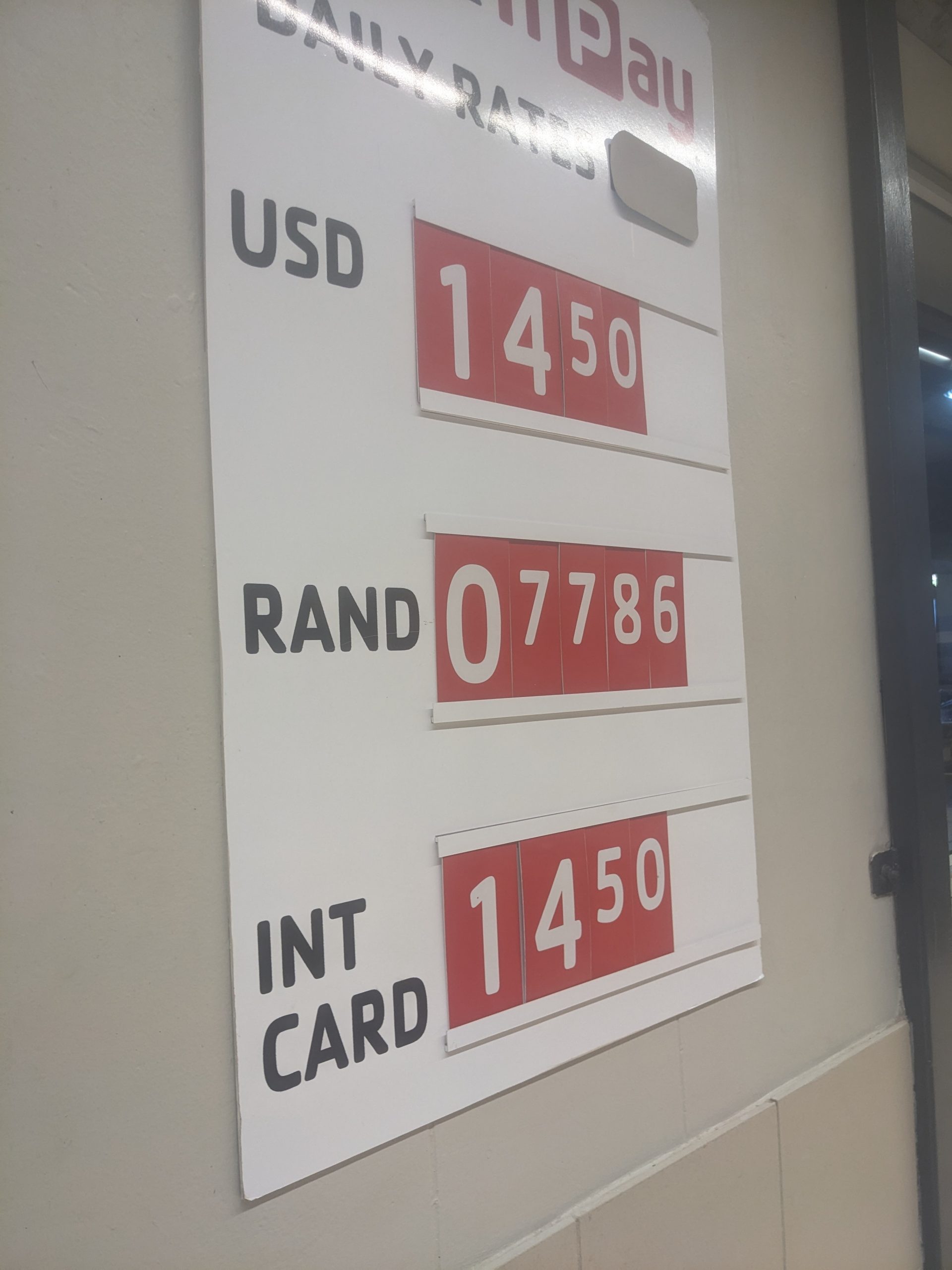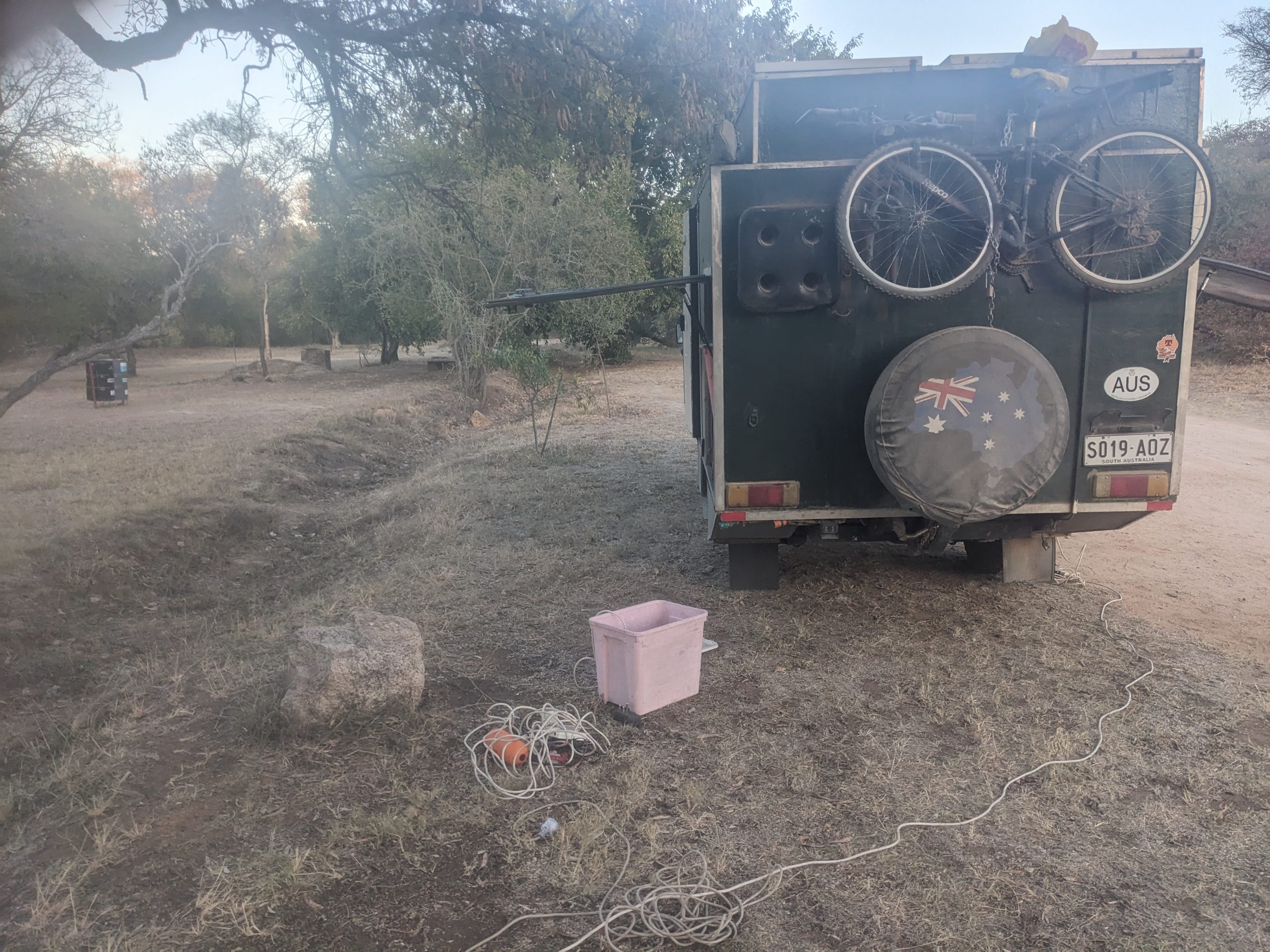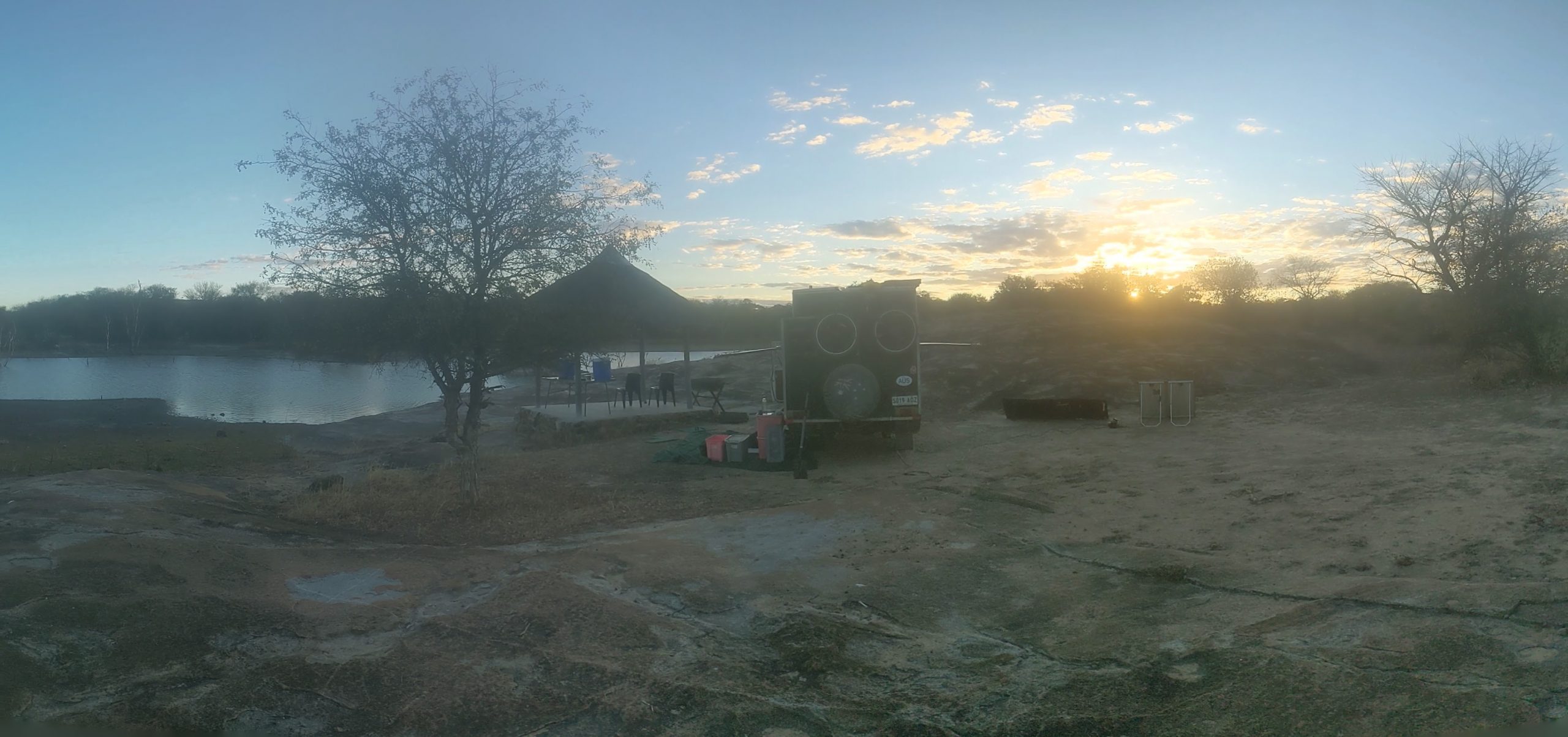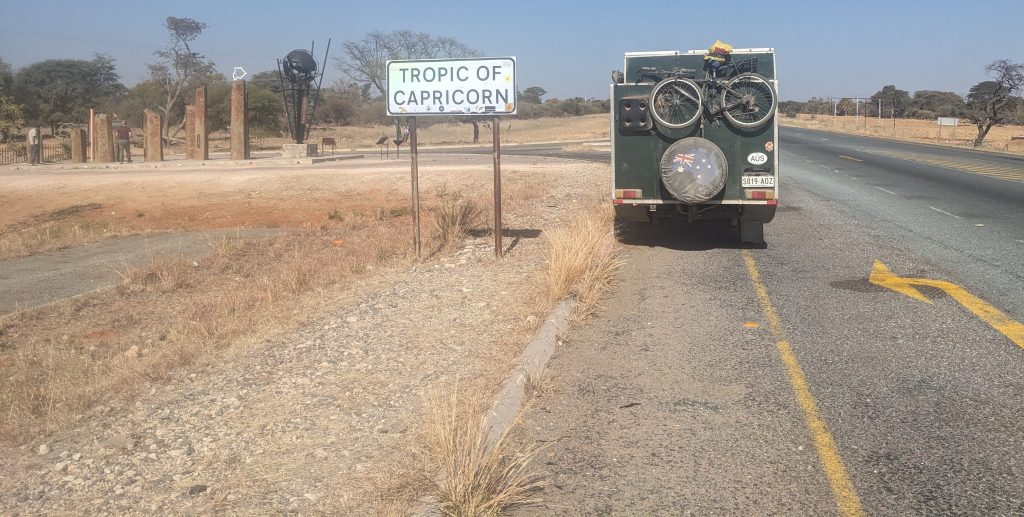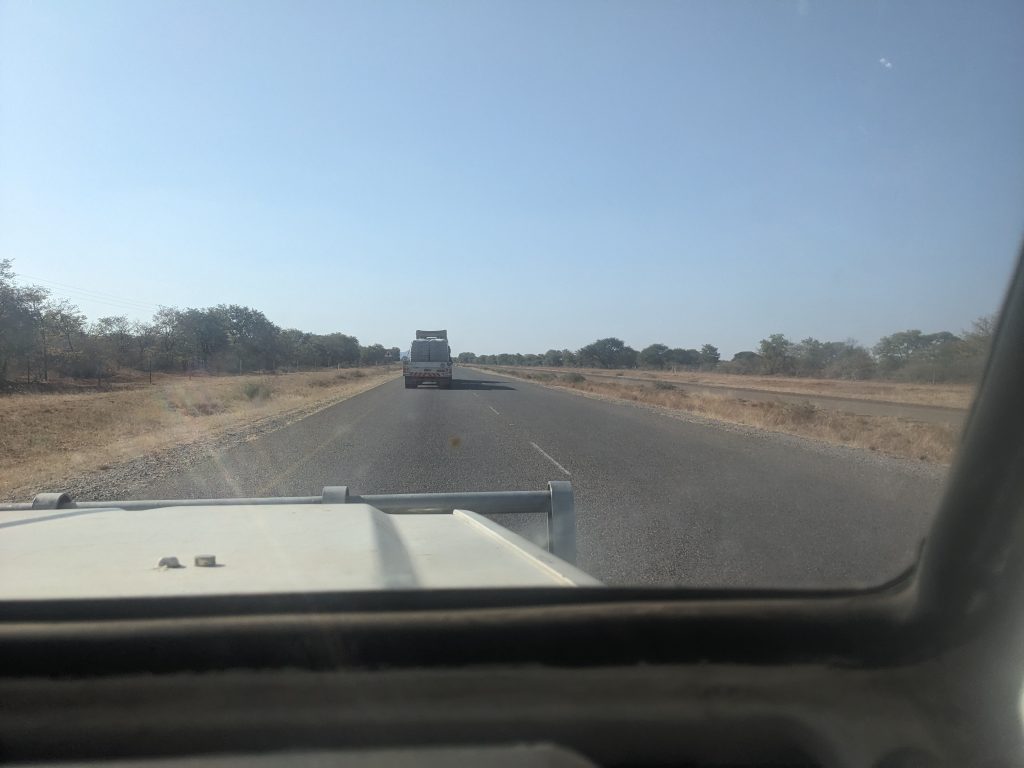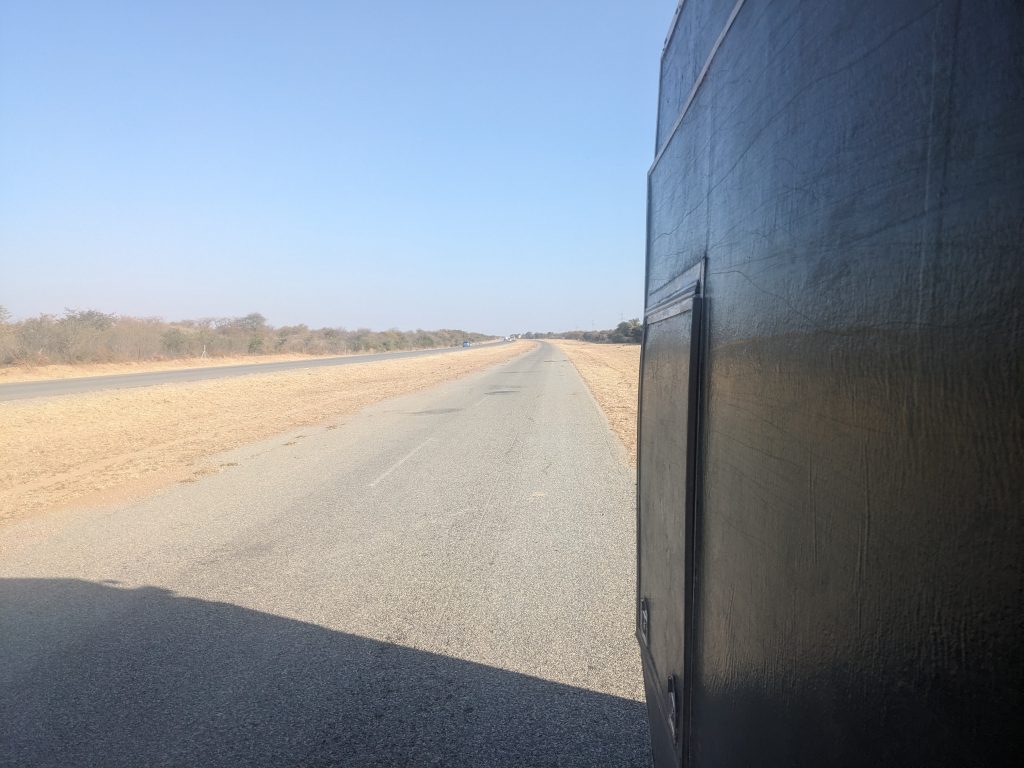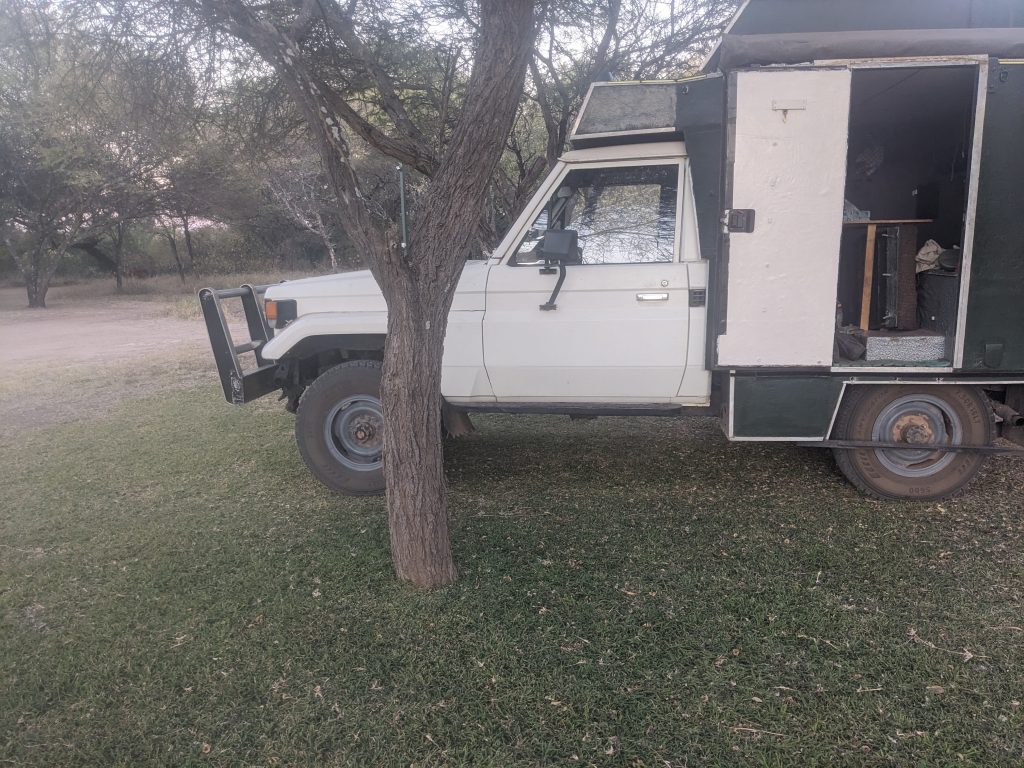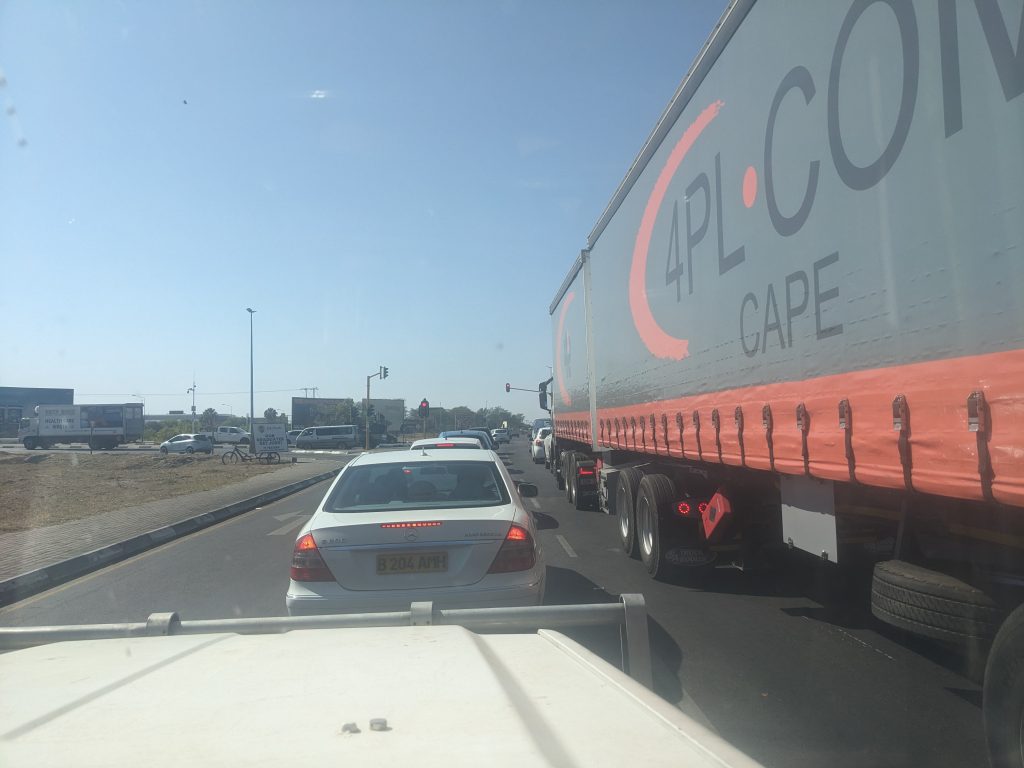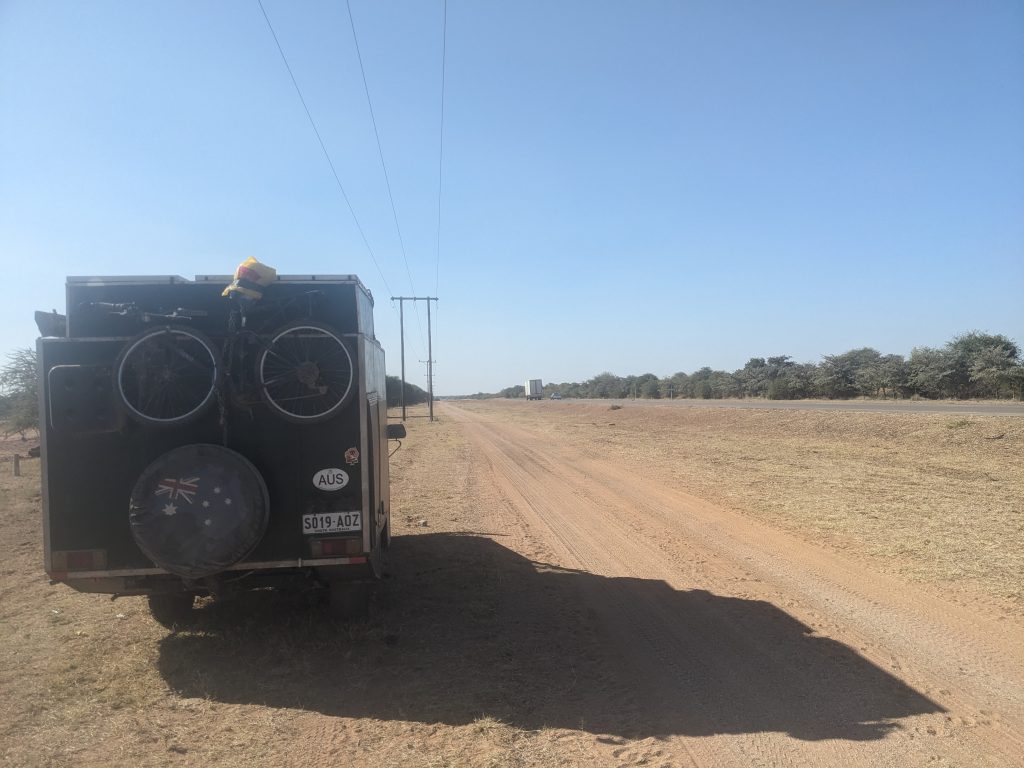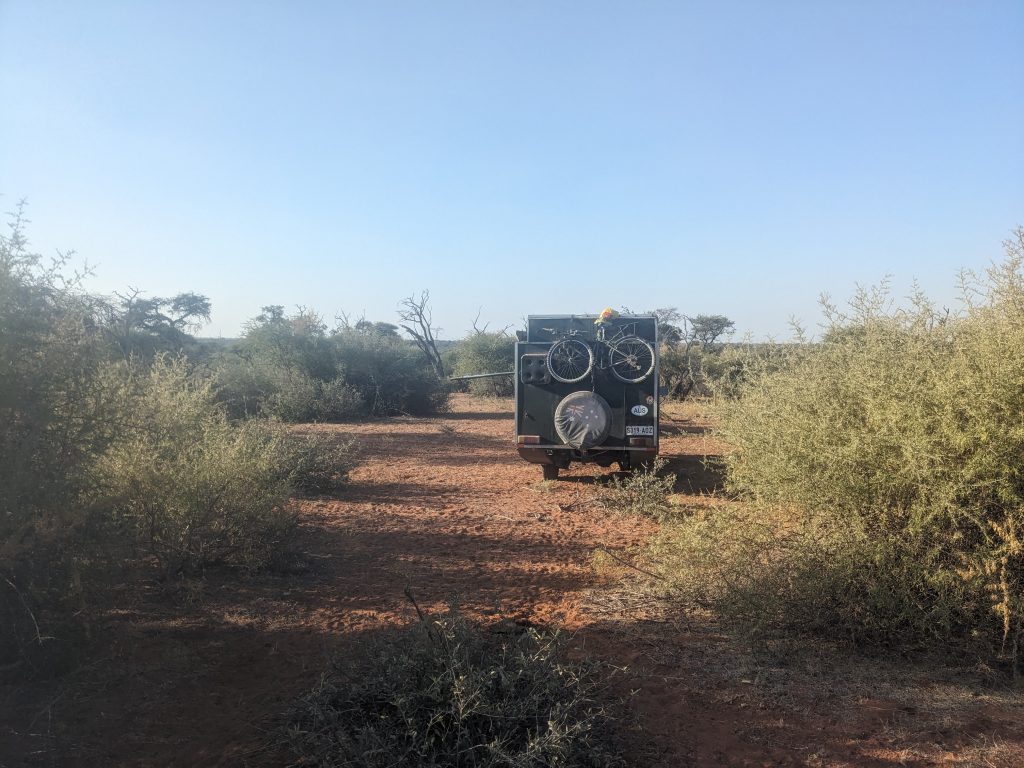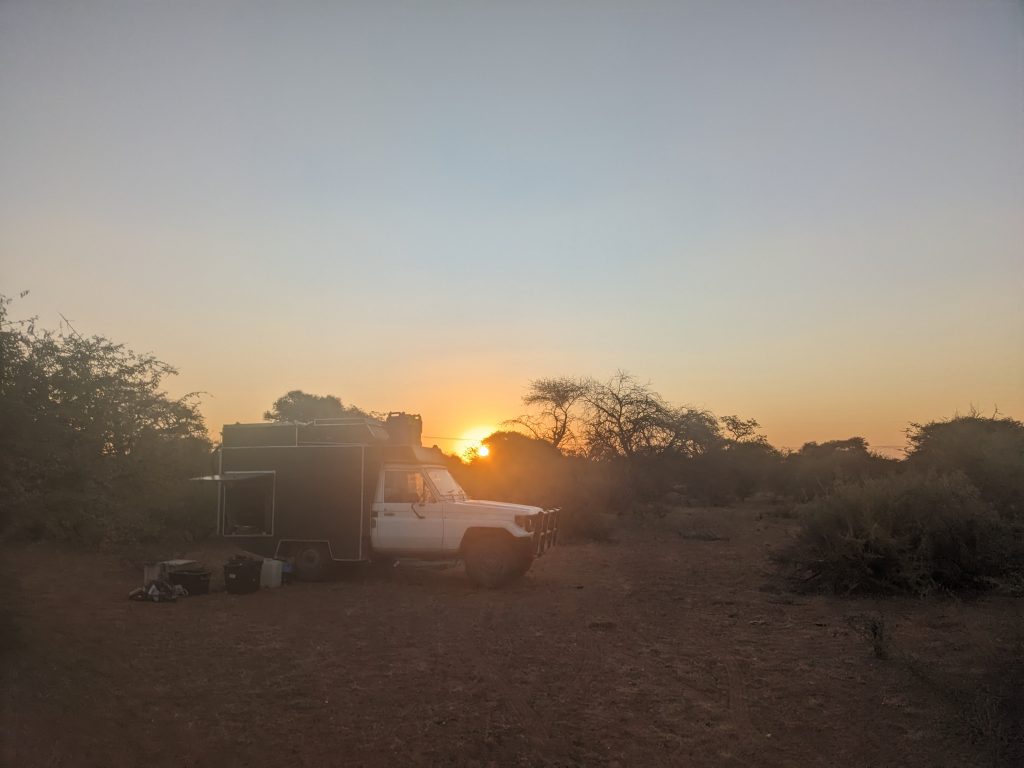We stayed 2 nights at Rossi Pools. It was a good campsite with a lapa (shelter) looking down into the river bed maybe 20m below. There was an island of crocs, some large ones. A few other animals, but not a lot of animals compared to other areas of Gonarezhou.
We got going in the morning heading out towards the highway where we thought we could camp at a motel. We left the park through one of the gates after a bit of delay checking paperwork, and we headed west. The road deteriorated, we only passed a couple of cars. We then drove through Gezani, which had a few shops, and not many cars. Then about 10km out of Gezani our Tracks4Africa app had us taking an even smaller track west. We went along this track about 1km, but there was no sign anyone had driven this road for months. There was 80km more of this track to the highway. We decided we needed to abandon this track and head back to Gezani and then head south. Once we got through Gezani we headed south and then west along a road that followed the Limpopo river a few kilometres north of it. The road would vary. Sometimes good, then deteriorate to a 4wd track, then get better again. We knew we would have to wild camp, and started looking about 4:30pm. A bit after 5pm, we drove through some scrub, squeezing between bushes and getting under a Baobab tree. With our battery powered reciprocating saw, we cleared more bush away for a campsite, and settled down for the night.
We had hardly seen any vehicles on the road during the day, but after dark, probably 10 vehicles drove past. Most were buses driving on a very, very corrugated road. We were far enough into the bush that I didn’t think anyone could see us. However late in the night three donkey carts drove past. I am not so sure that they wouldn’t have seen us, but if they did, they didn’t stop.
The next morning we cut our way out of the bush, cutting more bushes, making it easier to reverse. Then it was still another 35km of very corrugated road to the highway. We made the highway, after several hundred kilometres of dirt tracks, to find a brand new highway in perfect condition.
It was 20km drive to Beitbridge, a border crossing that we had heard many bad things about. The Zimbabwe side is very fancy, with multiple brand new buildings, lots of electronic systems. I wandered from place to place handing over TIP forms until eventually we both went to the immigration building. There we paid $USD28 for a new building fee, and $USD9 for a bridge toll. Then we went back to the carpark to find our rego on a big sign that meant we were allowed to leave. We drove out, handed over our fancy gate pass and headed to South Africa. We couldn’t help think of the hundreds of kilometres of roads we had travelled on that desperately needed grading, while instead the money had been spent on a fancy new border post.
The South African side while organised was very slow. We queued for an hour or so to get our passports stamped. Then the thing I thought was difficult, the TIP (temporary import permit) was easy, and only took a few minutes. We passed the police checkpoint, and we were out and back in South Africa.
We aimed to get around 375km south along the N1 to a campground at Modimolle before dark. A couple of stops for food, lots of stops at toll plazas, and we made it to Modimolle ten minutes before sunset.
Next morning we had made arrangements to meet Lilli in Pretoria who I had last seen 5 years ago at Christas place near the Mozambique border. Lillis HJ60 Landcruiser had recently not had a good time. She had rebuilt her 2H diesel engine about 2 years ago, and it needed yet another rebuild. Lilli was in good cheer, and has an encyclopedic knowledge of Africa, from the experience of her many many trips.
After lunch we headed of towards Marion and Davids place at Airport en Route. It was good to be stationary, and in familiar surrounds.
